“Yes, of course, you’re going to Florence, you won’t stay here” – a salesman told me when he heard that I was only staying for one night and one day in Bologna.
Probably these people are used with their city being more of a transit place than the base camp, but they don’t really like it.
I admit, that’s how I treated the city too: in 2015, I took the train from Florence and came to see Bologna for the first time. I stayed for a few hours and tried to see as much as possible.
Now, rather forced by the disappearance of any direct flights from Bucharest to Florence, I bought a ticket to Bologna and I decided to stay for one night before taking the train to Florence, to walk around the city again, after 7 years. I was really curious about how much I still remembered, but I also wanted to find out new things, to see new places.
BOLOGNA AND ITS THREE NICKNAMES
I had no idea that the city is called three names:
LA DOTTA – “the gifted one, the smart one”
Student life is intense in Bologna. The University of Bologna, founded in 1088, is the oldest university in Europe. Some say that, at the honorable age of almost 1,000 years, it could be the oldest in the world.
And the cool part: about 1 in 3 inhabitants of Bologna is a student!
LA GRASSA – “the fat one”J
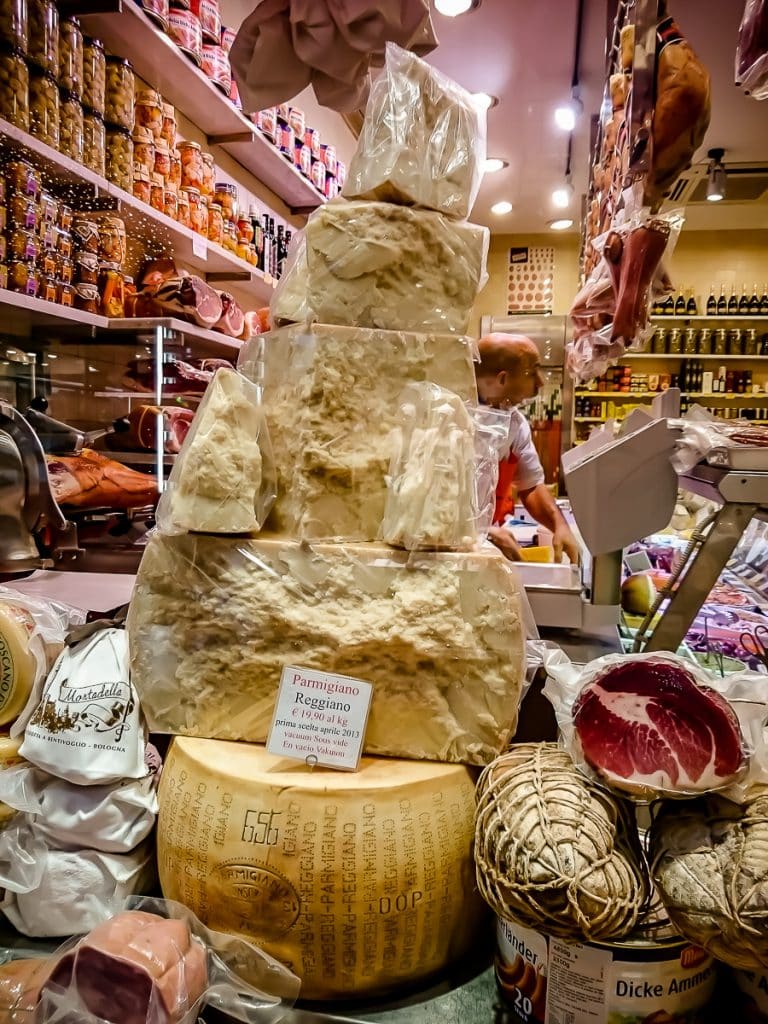
Many typical Italian products and dishes come from here, in the Emilia-Romagna area. Lasagna, tortellini (and the larger version, tortelloni), the ragù sauce (the Bolognese sauce), mortadella (that baloney with fat spots, as I call it), the parmesan, the balsamic vinegar… God, I’m sooo hungry. It’s good that I only come here for a day or two, or it would be a disaster!
LA ROSSA – “the red one”
If you look at Bologna, especially from above, you can’t help but notice the red terracotta roofs, the red buildings.
But this is not the only reason it is called “la rossa”, but also because Bologna is considered the most communist city in Italy.
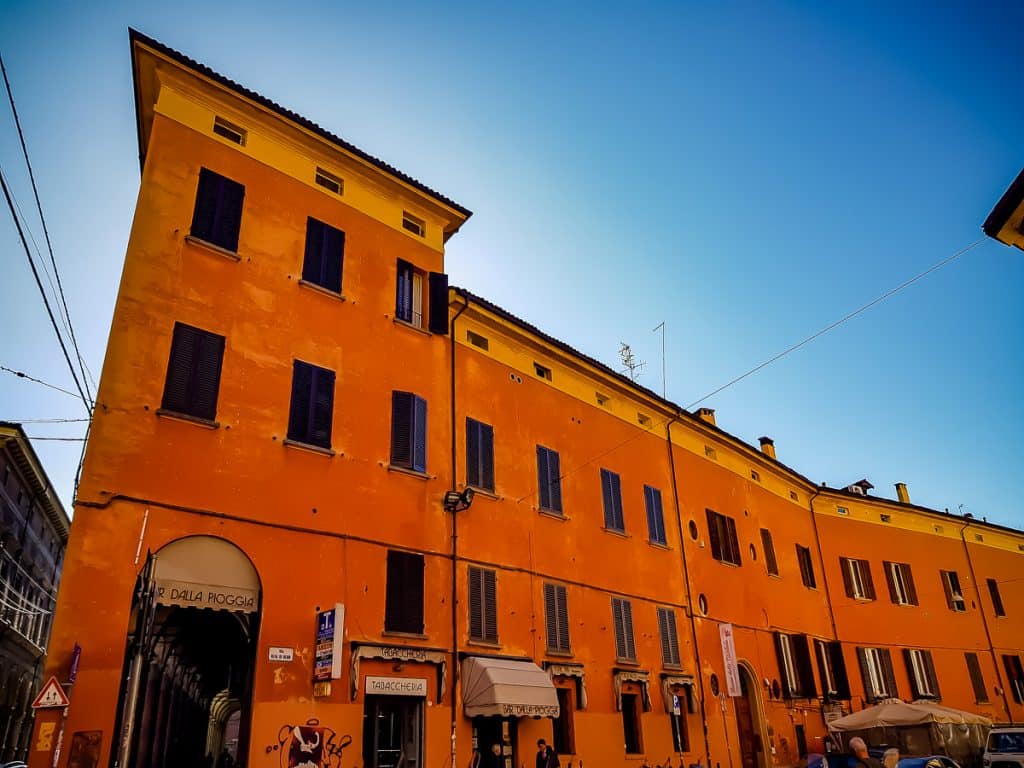
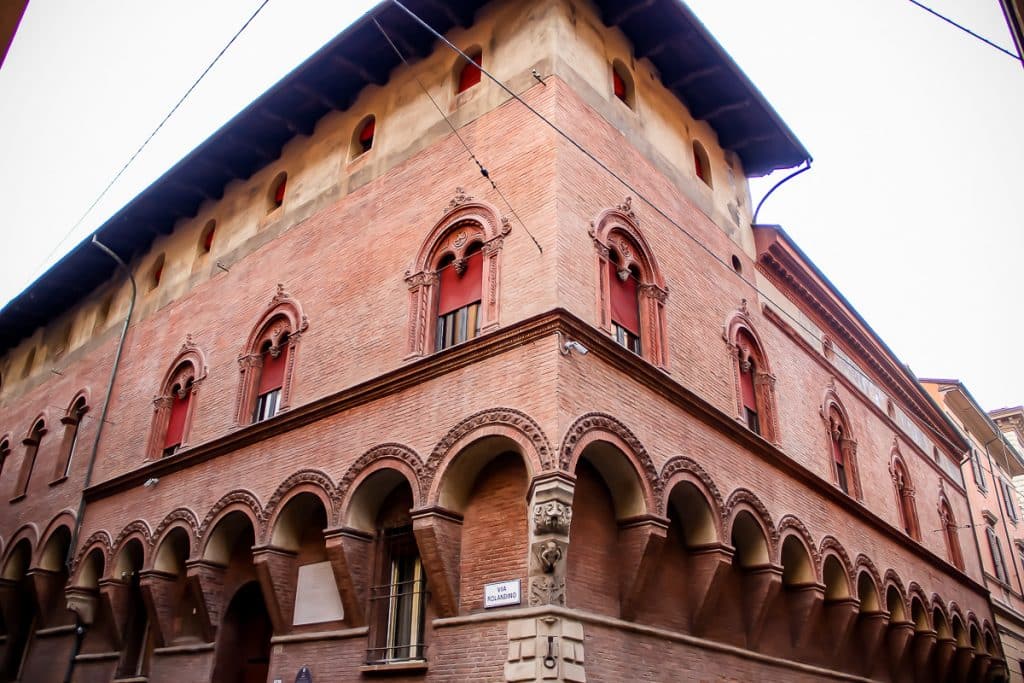
Well, now that I have described it briefly, let me take you for a walk around the city.
WALKING IN BOLOGNA
When I first came here, I was told that I would notice a feature of the city from the beginning. And so it was.
All over the city you find porticoes, those corridors, the walkways open on one side with arches and columns, located on the ground floor of the buildings, through which you can have a carefree walk when it rains or the sun is too strong. Besides, I could have sworn that was the purpose of their construction. Well, no!
The need to build them has nothing to do with the weather, as I pretended to know, but with something else: with the development of the universities in Bologna, about 400 years ago, more and more students began to come to the city and, therefore, the need for rooms grew a lot.
The houses could not be made bigger, wider, because it would have narrowed the streets, which were small anyway.
However a solution to expand the housing was found.
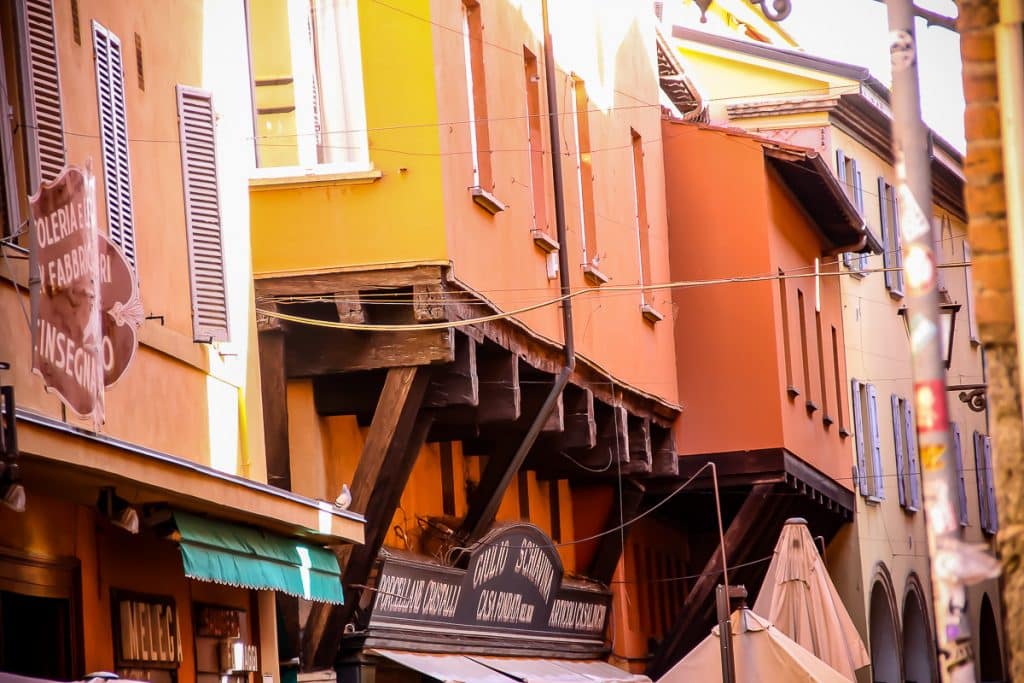
In the beginning it was a wooden extension, which allowed the construction of some rooms above the street, basically.
But wood did not provide any security: in case of fire, the house would burn down…
After a while, the extensions were made of stone/brick.
Over time, it became a pride thing to extend your house, so the rich competed with each other.
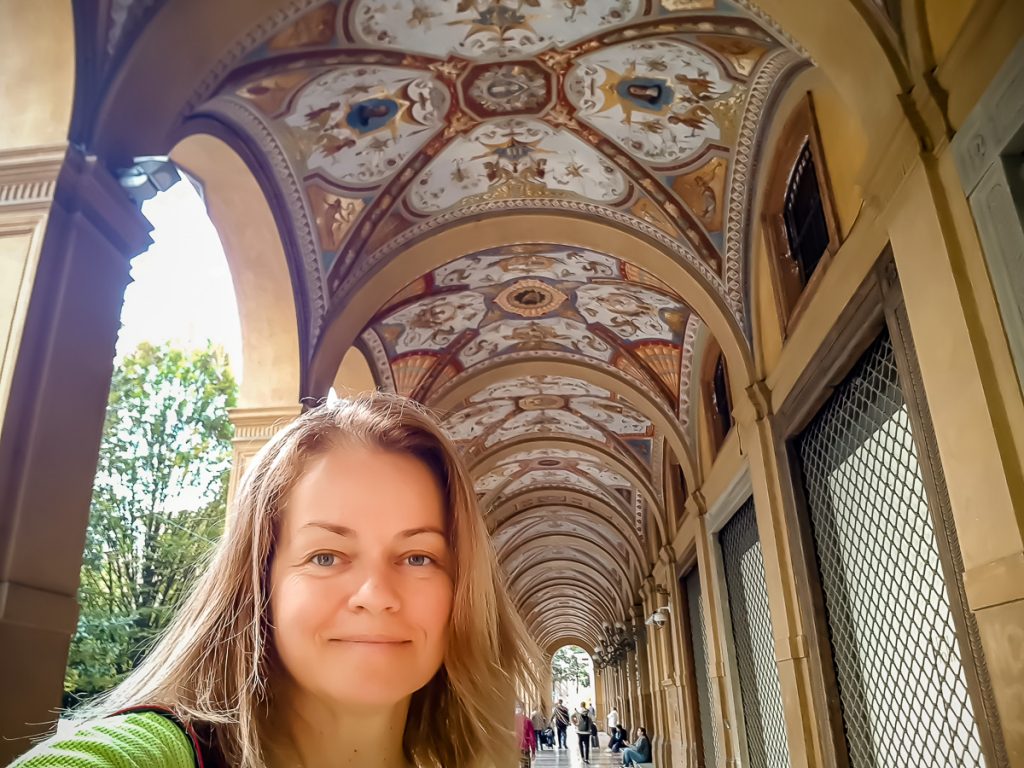
As I said, the city is full of such arcades. There are almost 40 km only in the center!!! And all over Bologna there are more than 60 km!
In addition, Bologna is proud to have the longest portico in the world! The Portico of San Luca. It starts from Porta Saragozza, goes through the city without any interruption whatsoever, first on a flat road, then climbing 300 meters to the top of the Colle della Guardia hill, on which is the Basilica San Luca. Almost 4 kilometers of walking under the arches! Wow!
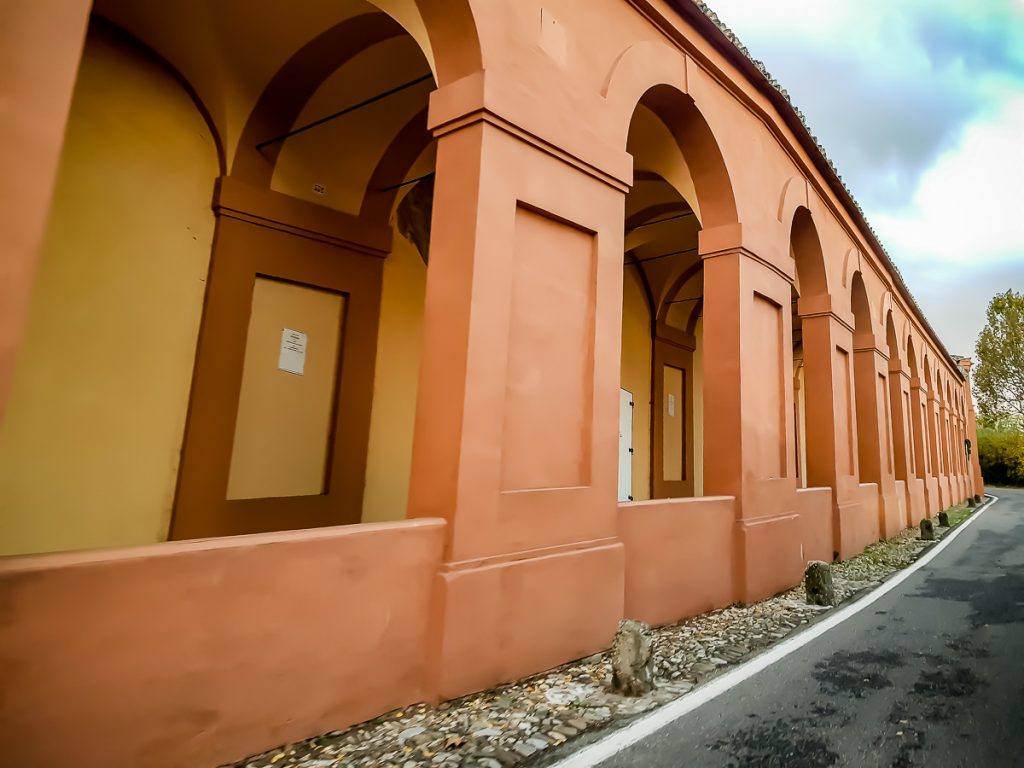
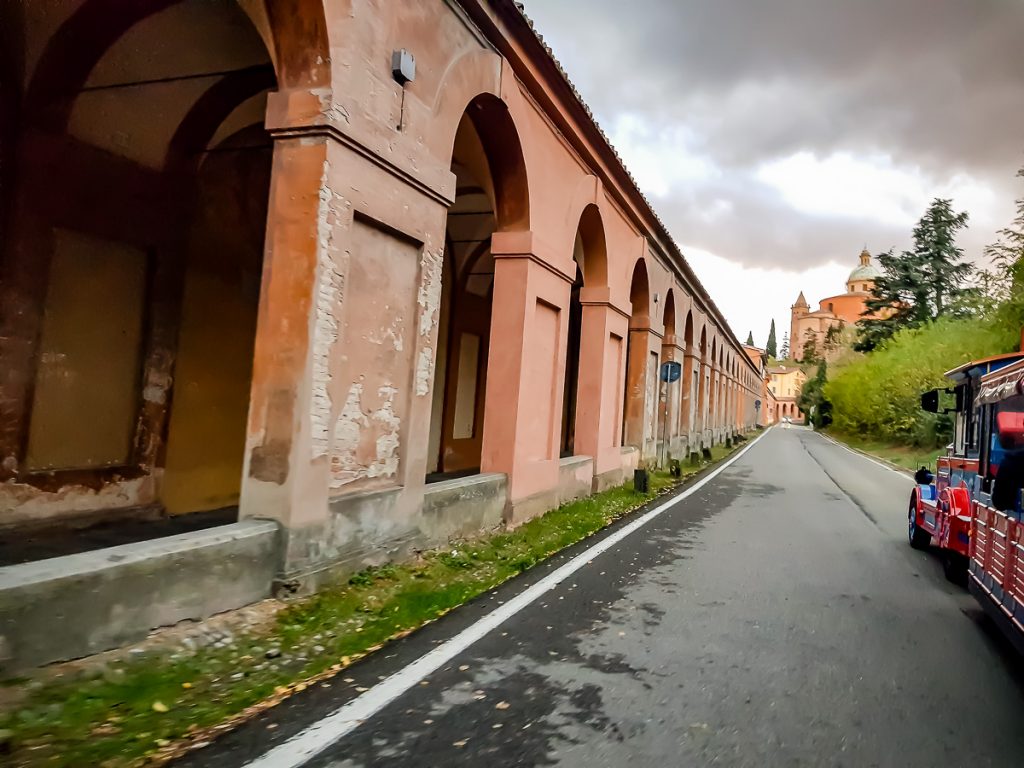
It was built in the 17th-18th centuries with the aim of creating a safe, protected path for the Byzantine icon of the Madonna which, annually, on the Feast of the Ascension, was and still is brought down from the Basilica of San Luca to the Cathedral of San Pietro in the city.
The very old icon (it is supposed to date from the 10th century) has been venerated since the 12th century, when pilgrims climbed up to it on a narrow path.
Once the portico of San Luca was built, pilgrims could go up and down the hill protected from the weather. So, in the end, it’s like I said with these porches: they protect you from the rain or the sun J.
Oh, and one more thing: the San Luca Portico (the longest in the world, you haven’t forgotten, right?) has… 666 arches! Hm… Resembling a snake in length and shape, I read that it is possible that the number of arches was chosen on purpose, to symbolize the Madonna defeating the Devil.
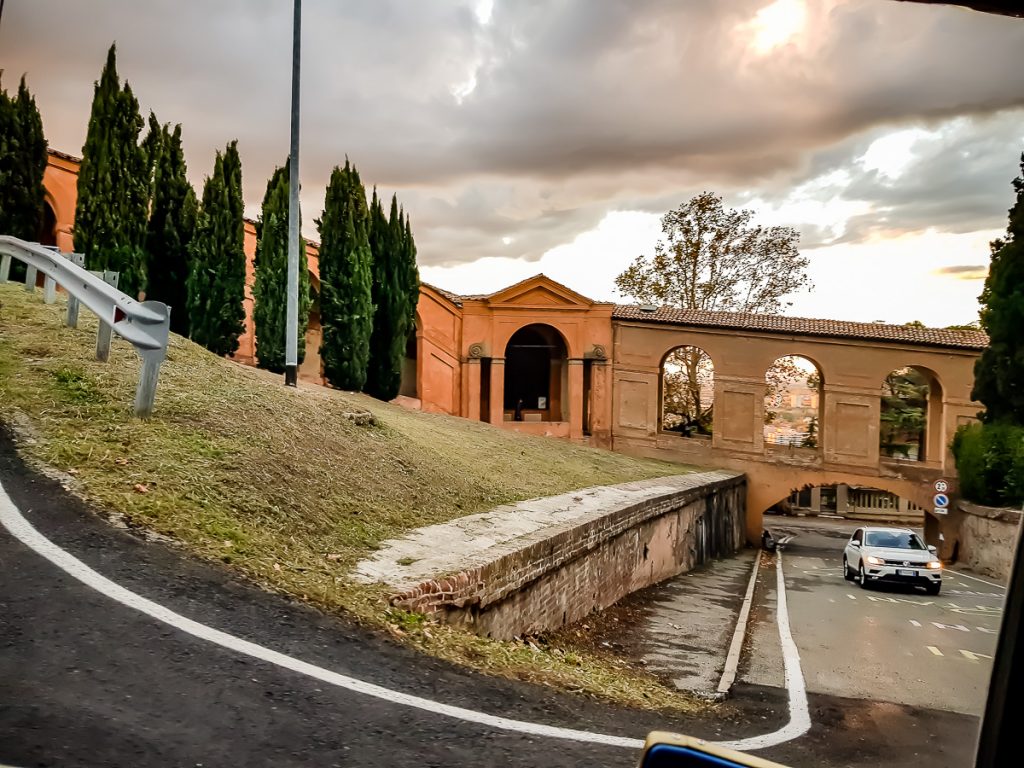
I decided to do it on foot next time, but I hope to have some dialogue partners, because I would be bored alone under so many arches…
It will take you about an hour and a half to go through it all, but be careful, its last part is uphill.
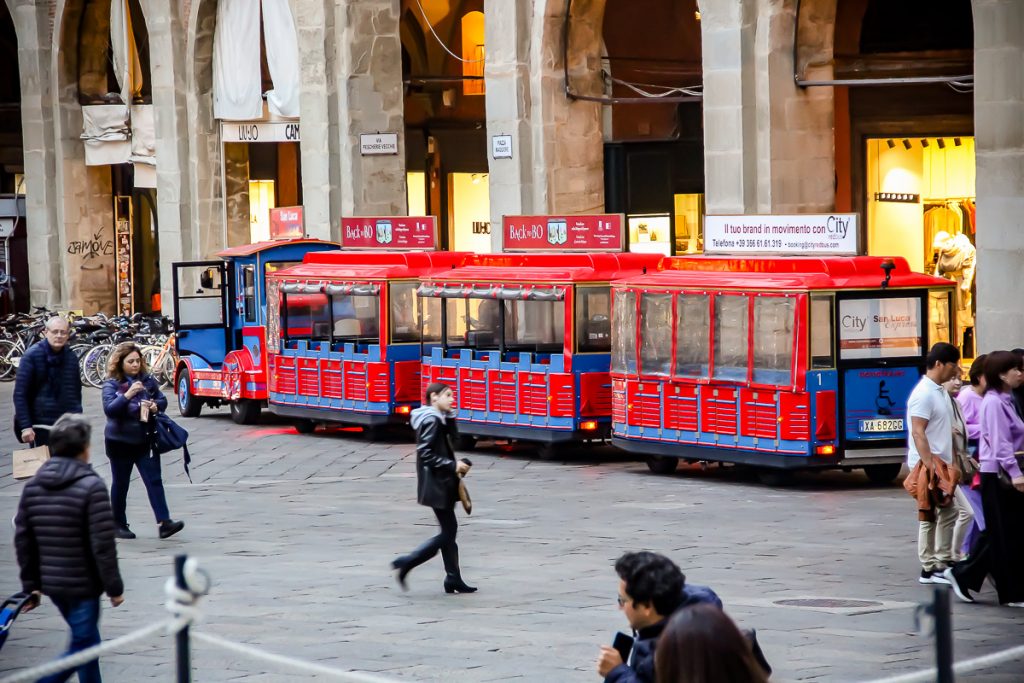
If your joints or breath don’t hold, you can take the San Luca Express, a train that leaves every 20 minutes from the central square of Bologna (Piazza Maggiore) and makes the route up to the Monastery in about 40 minutes. If you don’t get off the train and want to go back to the city this way, the fun lasts for one hour.
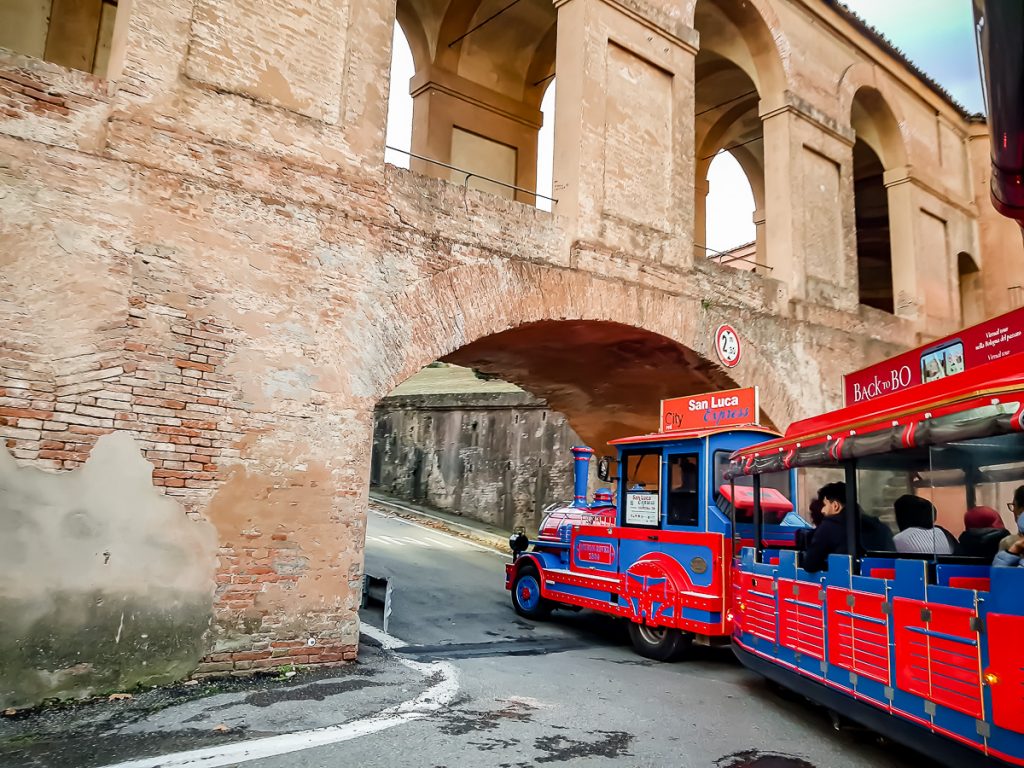
When it reaches the top, you can go down to enjoy the view over Bologna. I didn’t go down, because I was afraid of losing the last one and it was getting dark. I had no trace of enthusiasm to go down the longest portico in the world at night, alone.
But it’s already on the “to do” list for next time!
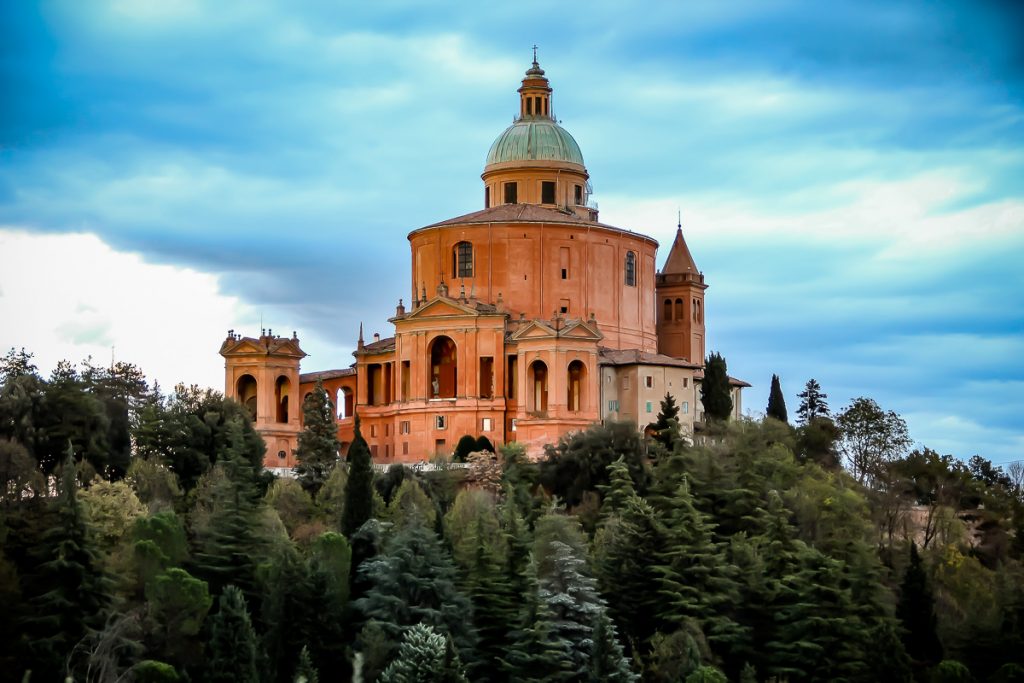
Whether you get on the train and make the return journey or you take it one-way only, the ticket price is the same – 12 euros for an adult (Nov 2022).
BOLOGNA FREE WALKING TOUR
That’s exactly how I searched on the net when I decided to find out more things and see what I hadn’t seen.
“Free walking tour” is something I discovered recently, which I chose in Florence, but also in Amsterdam. A lot of tours that local guides, but not only, do for tourists.
The tours, yes, are free, but they inform you from the beginning that they pay some taxes to the authorities for each tourist attached to the group and that you should at least give them a small amount of money to cover their taxes and have a minimum of profit. So you’re still supposed to pay.
I, influenced by others, gave 10-15-20 euros maximum, depending on the duration of the tour and on how much I liked the guide. I saw people who gave 5 euros, but I also saw couples who gave 50 euros.
Anyway, it seems to me this is a very cool solution and I will use it again, because I notice that it is becoming very common in tourist cities.
Seeing Bologna 7 years ago on foot and from the red bus (because they also have a red bus), I decided to choose now a… mystery tour.
THE 7 SECRETS OF BOLOGNA
The guide? Spanish, what do you know, not local. Anyway, he was a man who had known his lesson well for some years, ever since he fell in love with Bologna and moved here.
For about two hours we will walk around in Bologna. The weather is perfect for this!
1. DEVIL’S HEAD. SECRET NO. 1.
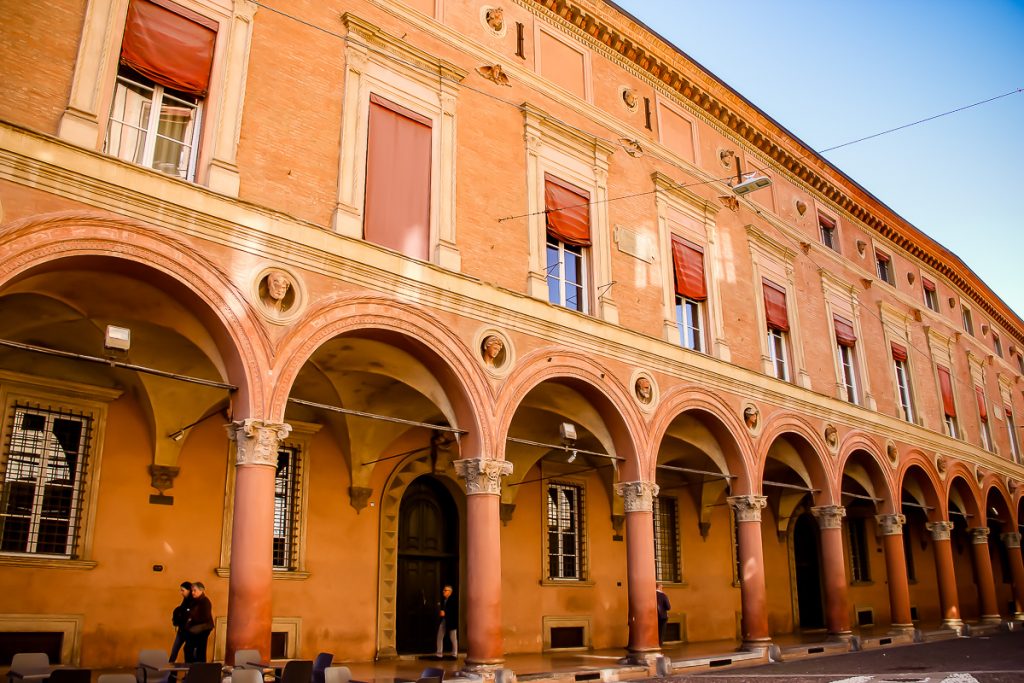
The first stop is not far from the central square. (I would later see for myself that nothing I saw was too far away…)
The palace with busts in front of which we are standing was built for an extremely rich family, but not very loved by people, we are told. Because, rich as they were, they didn’t bother to help people.
The person who took care of the renovation of the building came up with the idea of making different busts for the facade, as a sign that the family could afford anything. But, you see, he didn’t really like the owners either, so he thought of making a little… joke:

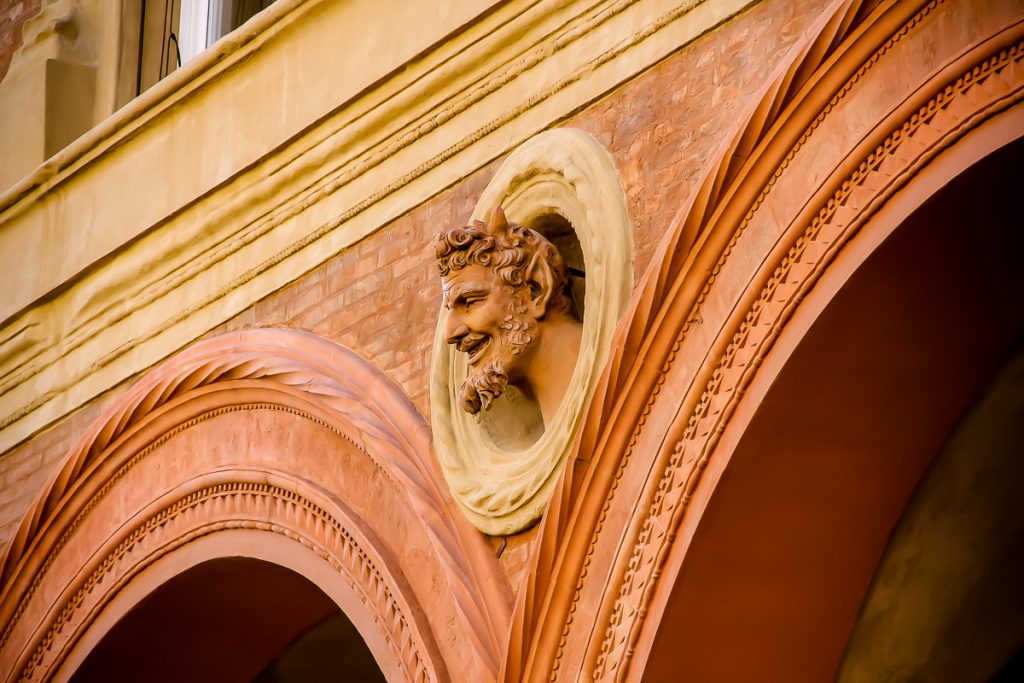
He placed in the center… the bust of the Devil, to show that some nasty people live there.
(People who must surely have liked the bust, since it remained untouched for so long.)
The palace is still owned by the descendants of the family from the 16th century. But the current generation is definitely a cool one…
So, the Devil’s head is the first secret of Bologna.
2. THE 7 CHURCHES. SECRET NO. 2.
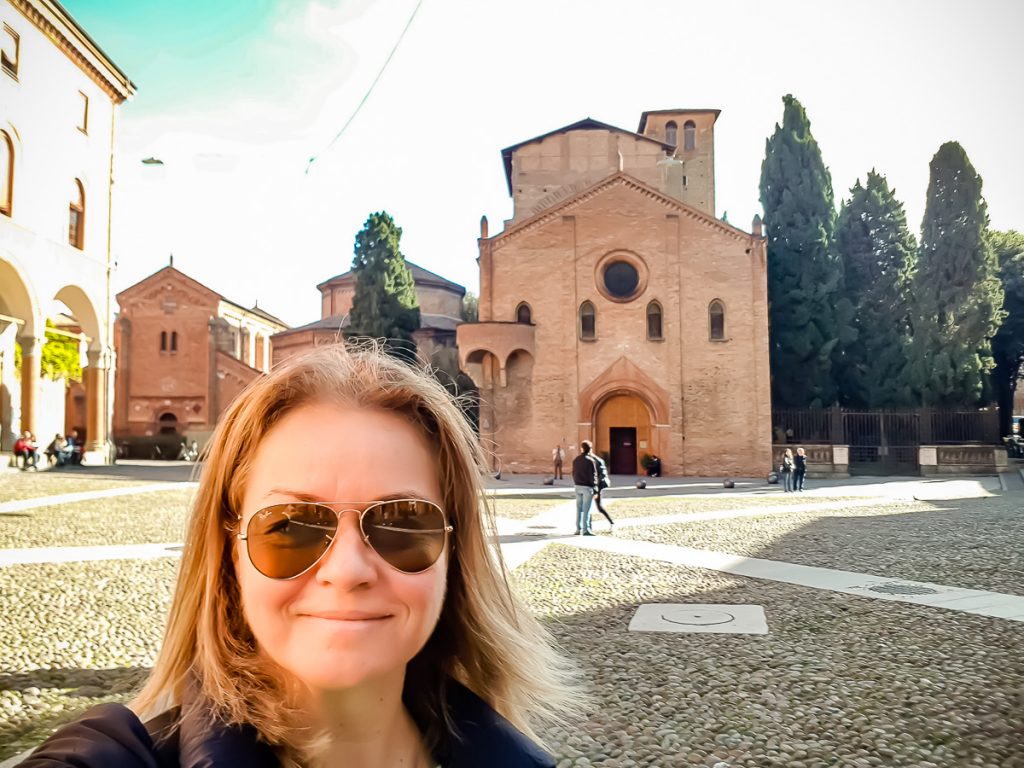
Right next to the house with the faces, is the Santo Stefano square, a place known as “the 7 churches”.
The 7 churches are, in fact, 3. It sounds like the nursery rhyme: “one tumbled, and there were two” J.
- San Vitale – the oldest, dating back to the 5th century!
- The Church of the Holy Sepulcher – a copy of the church in Jerusalem, built so that those believers who could not get there, would be happy to have one closer. The church was built by San Petronio, the patron saint of the city, who was buried here (his remains were moved to the Basilica of San Petronio in 2000)
- Santo Stefano
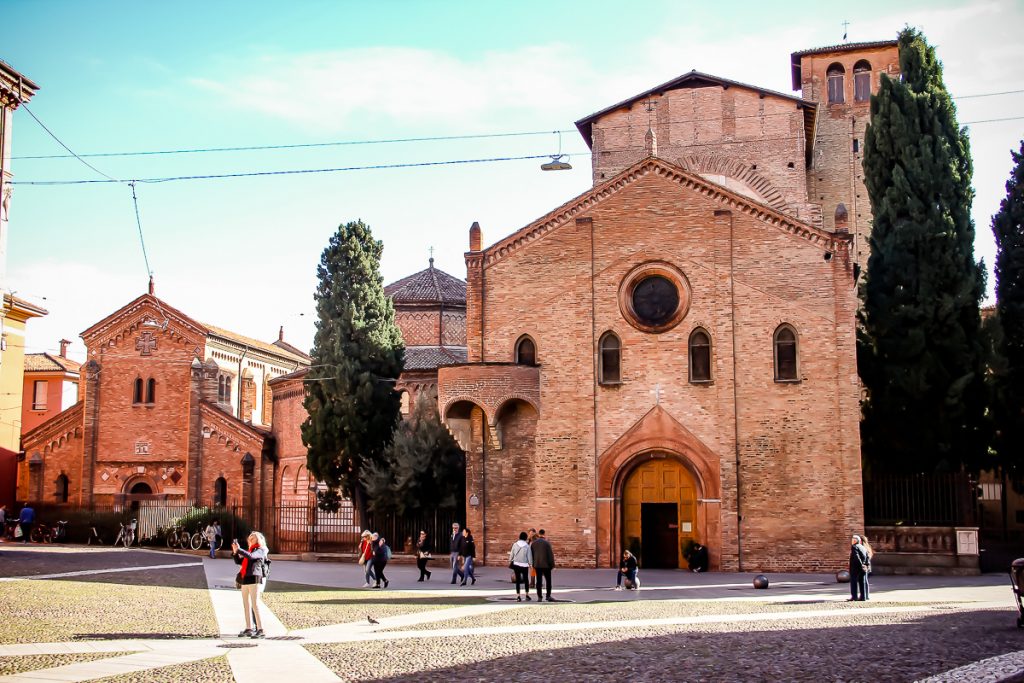
The Italians call this place “the 7 churches” because, in addition to the 3 churches, there are also 4 chapels, all of which can function simultaneously – let’s say for 7 baptisms at once.
The 7 are interconnected and, once you enter to visit one, you visit all of them, basically.
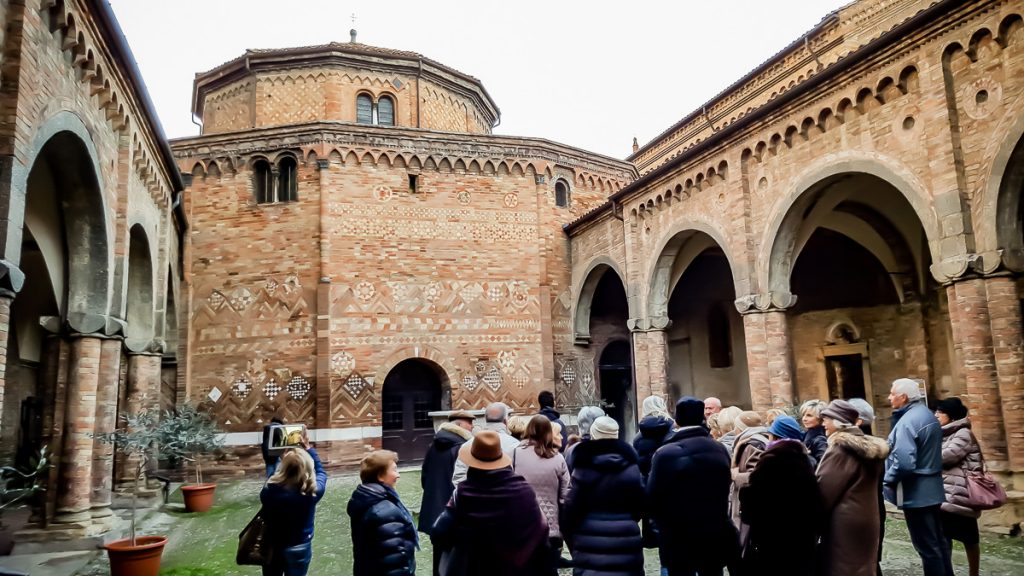
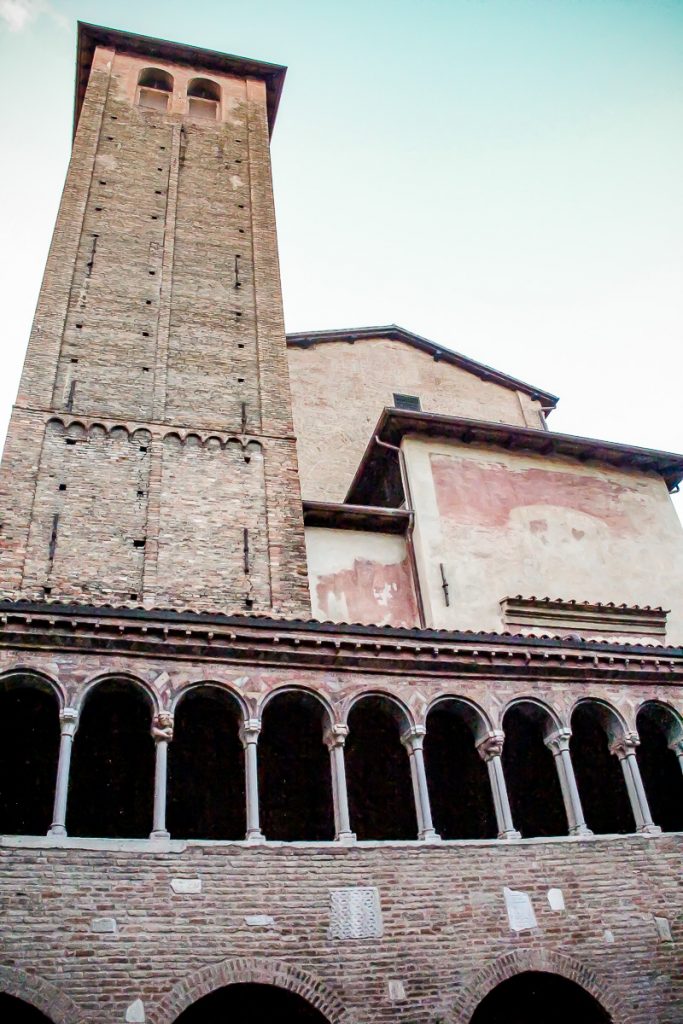
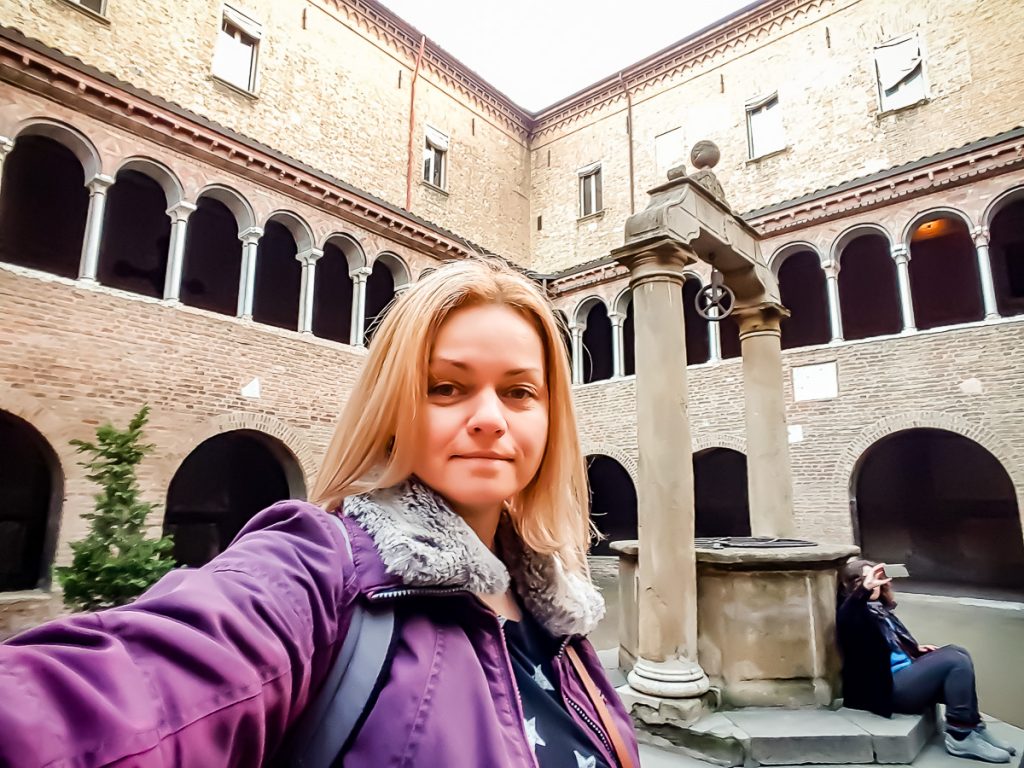
This is the second secret of Bologna – that the 7 churches are not 7…
And, since we are still near them, let me show you something else: on a nearby wall there is a plaque with a symbol and a text on it. Those who know about cars will guess immediately. I am not good in this field, so it’s good that I had a guide to tell me…
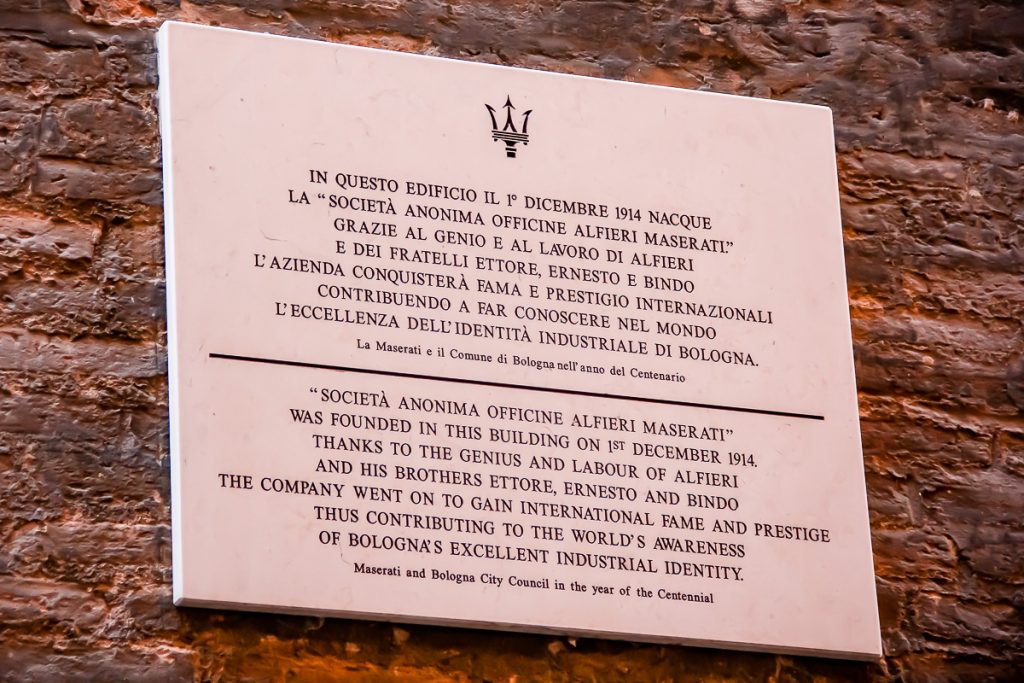
Maserati. It’s about the Maserati family. This family comes from here, from Bologna, and they founded the famous car construction company in 1914.
Four brothers struggled to find an emblem for their company and couldn’t find one. One of the four, being more of an artist, told the others that he was going out, to the city, to look for inspiration. (He wouldn’t have gone to buy some bread…)
Arriving in front of the statue of Neptune – about which I can’t wait to tell you something very funny – he saw the light (no, not from the car).
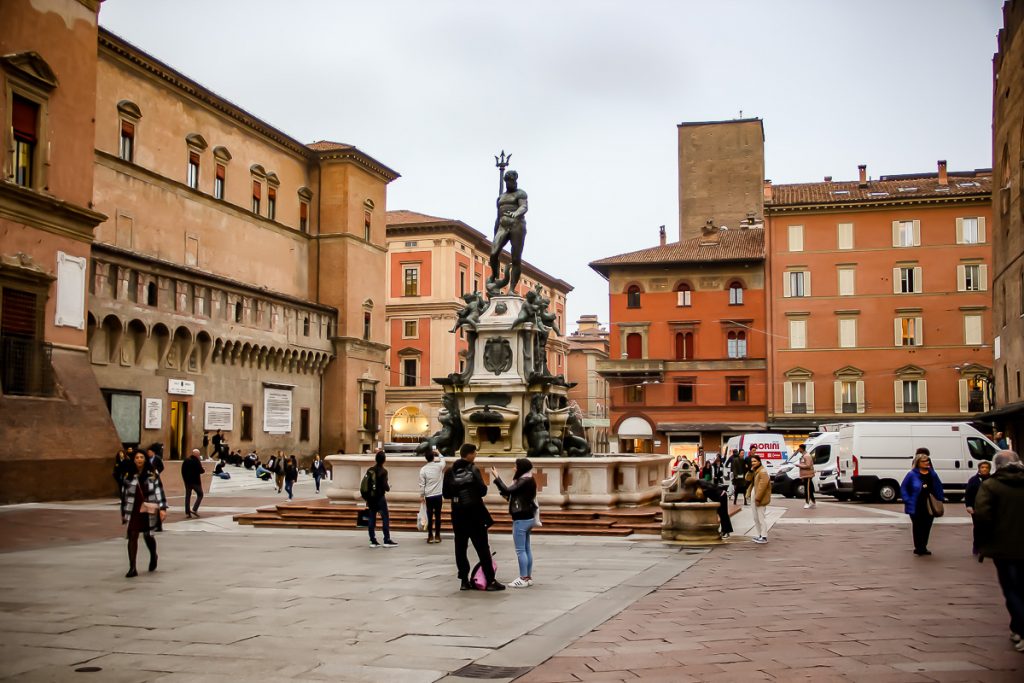
What do you think the brother did? He simply copied Neptune’s trident! And this is how the problem of their logo was solved.
Regarding the colors chosen for the Maserati logo – red and blue – they had no doubts: the two colors were very important to the locals. The Bologna football club, founded in 1909, the pride of all, had the red and blue colors.
3. THE 3 ARROWS
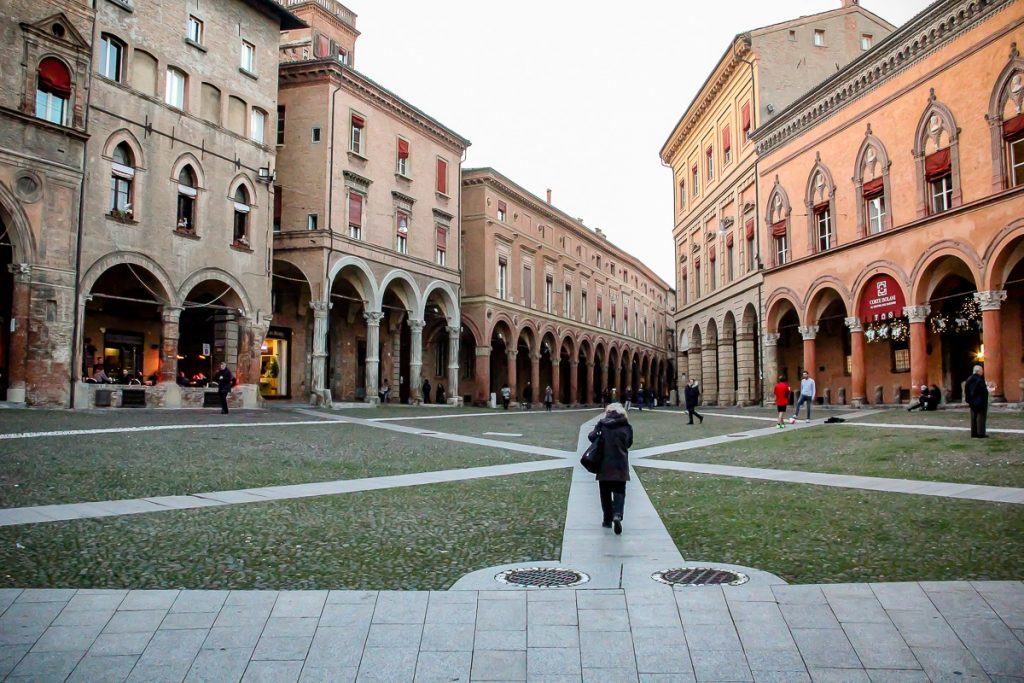
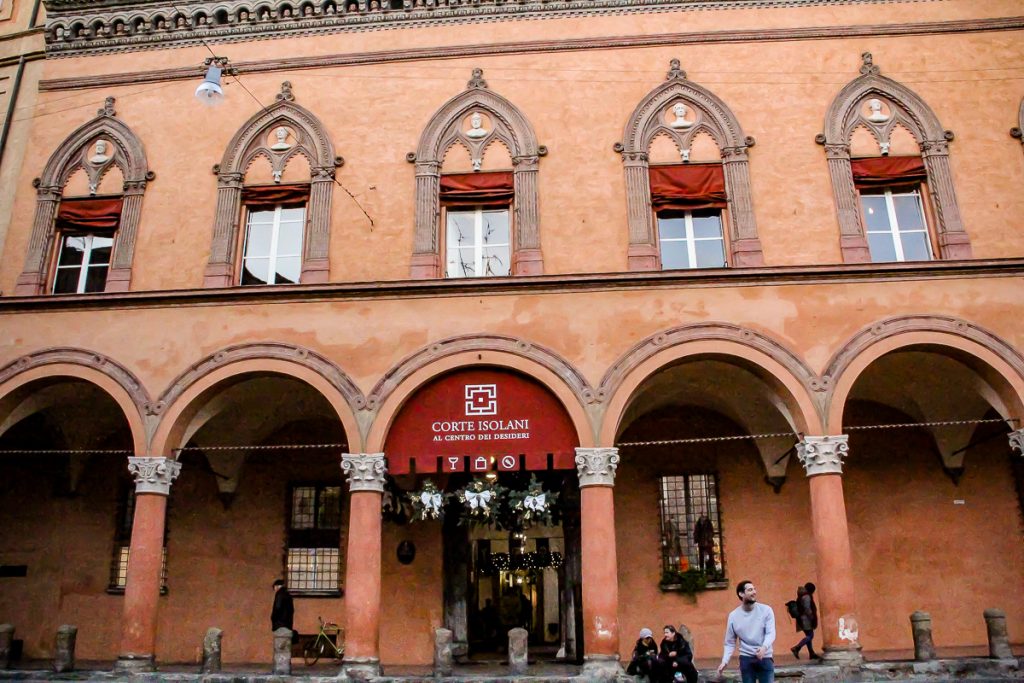
We leave Piazza Santo Stefano. We pass through Corte Isolani, with restaurants, bars, shops and exit on the other side, on Via Maggiore, under the oldest portico in the city (I think it’s also the tallest, as I see it), at Casa Isolani.
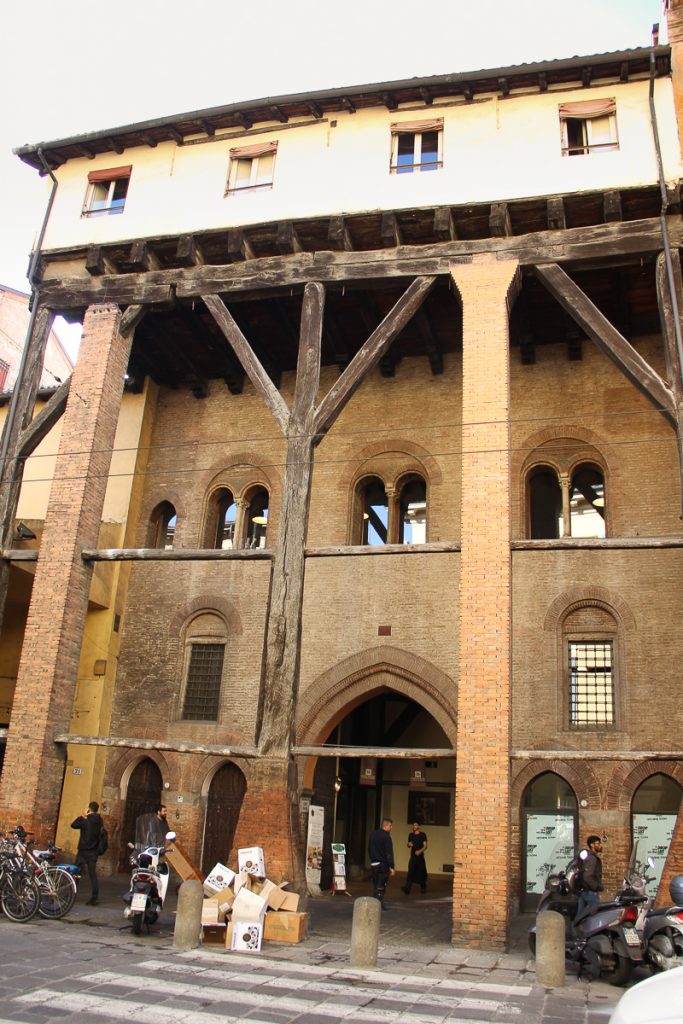
Isolani was a family from Cyprus, who came to Bologna during the Renaissance period. The husband and wife were far from being a couple that would live happily ever after… The lady liked men a lot, so she cheated on the gentleman (I don’t know the details…).
At one point, the gentleman got tired of being cheated on, so he hired 3 archers to kill his wife when she appeared at the window of the house.
Right, so far the plan seemed perfect!
One fine day, the archers got into position, the woman appeared in the window, they eyed the target, she saw them and suddenly realized that her fate was sealed.
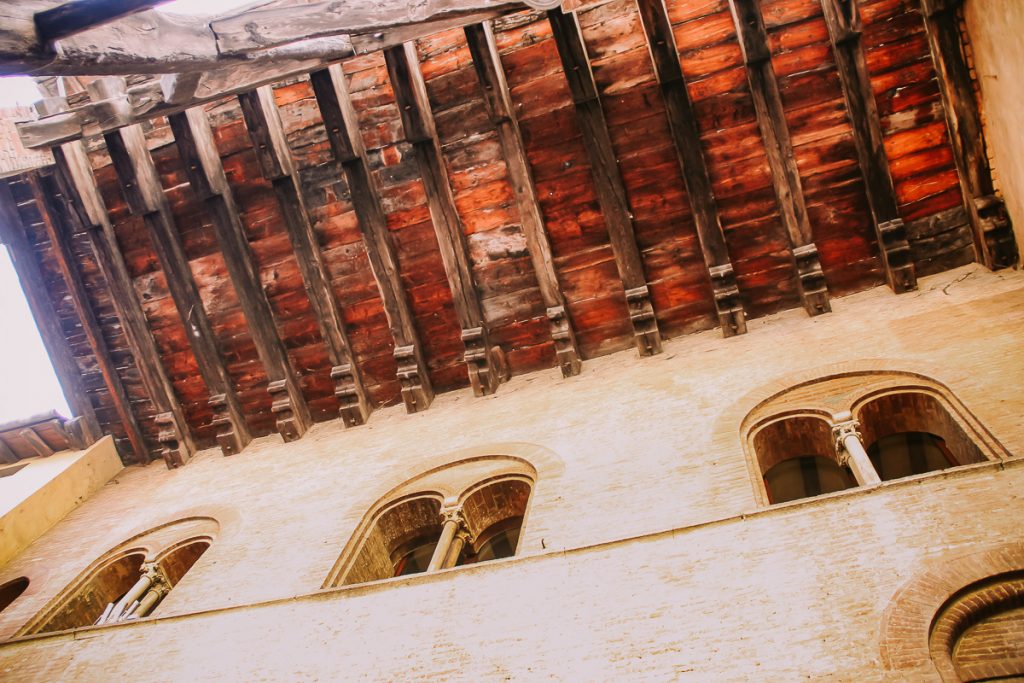
It seems that she was not only a men-loving woman, but also a quick-witted one, considering that in an instant she found a solution to save herself.
What do you think she did? She quickly took off her dress, leaving her bare skin. And the 3 archers, taken by surprise, missed the target, their arrows sticking in the wooden beams of the portico. And there they have remained, for hundreds of years!
Now… It’s a difficult mission for any tourist to find the 3 arrows, considering that the ceiling is very high!
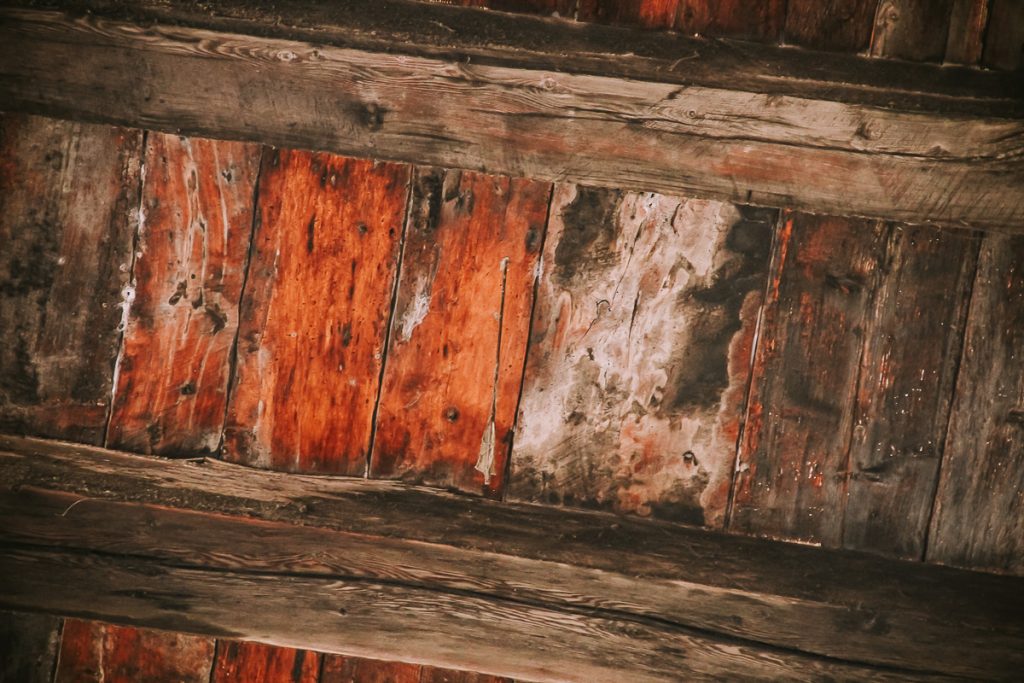
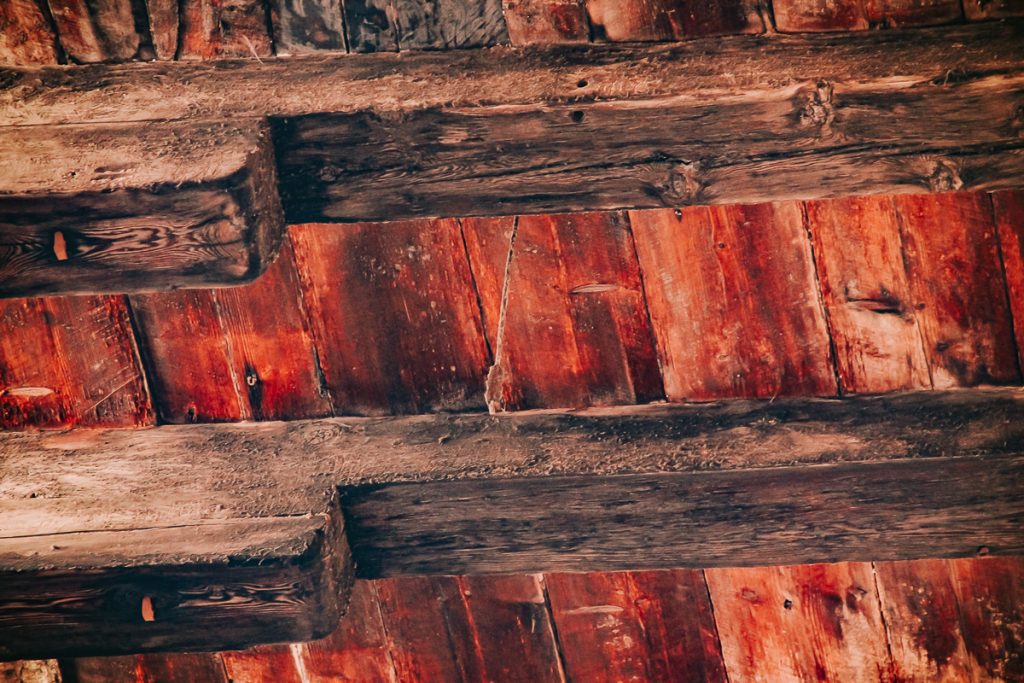
With a little bit of attention and with a little help from the guide, you can find two. But where is she third? Where is it??
We were all looking for the arrow of the third archer, until our eyes popped out.
In the end, the mystery was solved: there are not 3, but only 2 arrows stuck in the wood. And this is how the story of the third secret of Bologna goes.
4. WHISPERING GALLERY
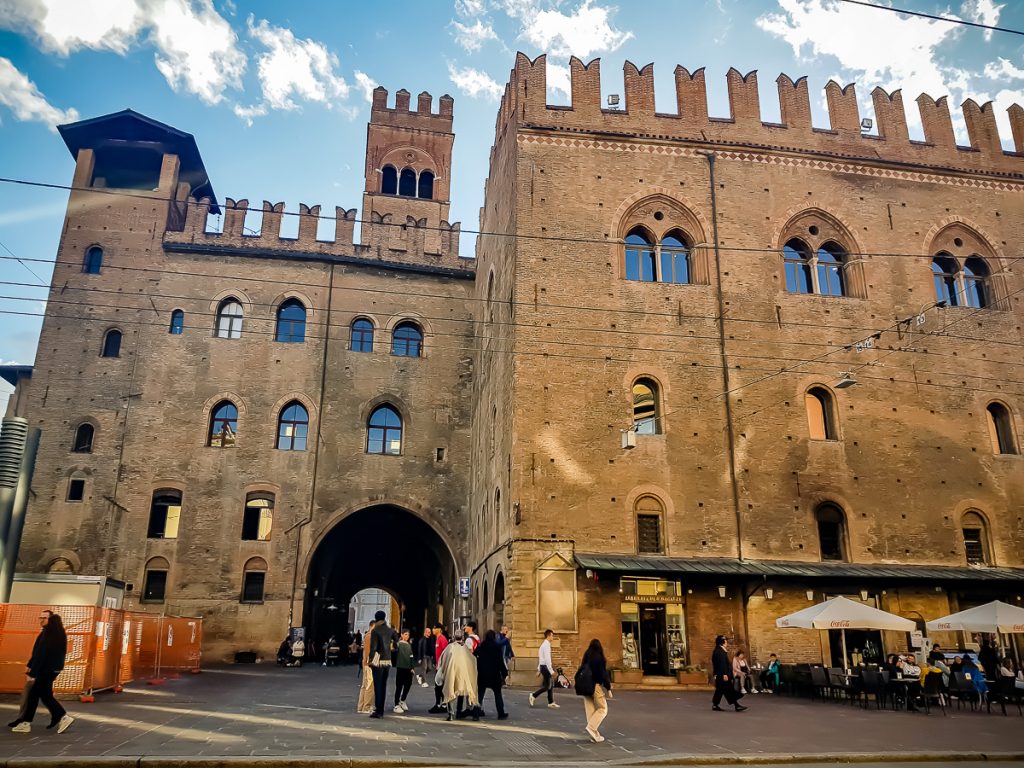
In the central square of the city (Piazza Maggiore), you will see Torre Lambertini, Palazzo del Podestà and Palazzo Re Enzo. Don’t ask me where one begins and the other ends, I saw them as a whole…

There is an arch here that has a special acoustic effect: it allows people in opposite corners to whisper to the wall and hear each other. (I also experienced this in New York, in Grand Central Station and it’s really cool!)
In the case of those from Bologna, I understand that in the Middle Ages this method of communication was extremely useful. When a doctor met with someone who was sick, they could talk like that without risk. Or when the lepers confessed to priests.
And we, the tourists, just whispered to each other that this is the number 4 secret and we have 3 more.
5. THE MERIDIAN LINE OF SAN PETRONIO
The Basilica of San Petronio is basically the center of the city. It stands out in the central square of the city, unfinished as it is…
Since the year 1300 or so they kept building here. In the 16th century there was a big plan to expand the Basilica. They say the people wanted to build the biggest church in the world!
However… when the Vatican found out that these citizens wanted to beat St. Peter’s Basilica in Rome, to make it bigger than that one, they cut off their funds. And so it remained unfinished and they worked on it in time, when some more money was collected. But admit it, it has a special charm.
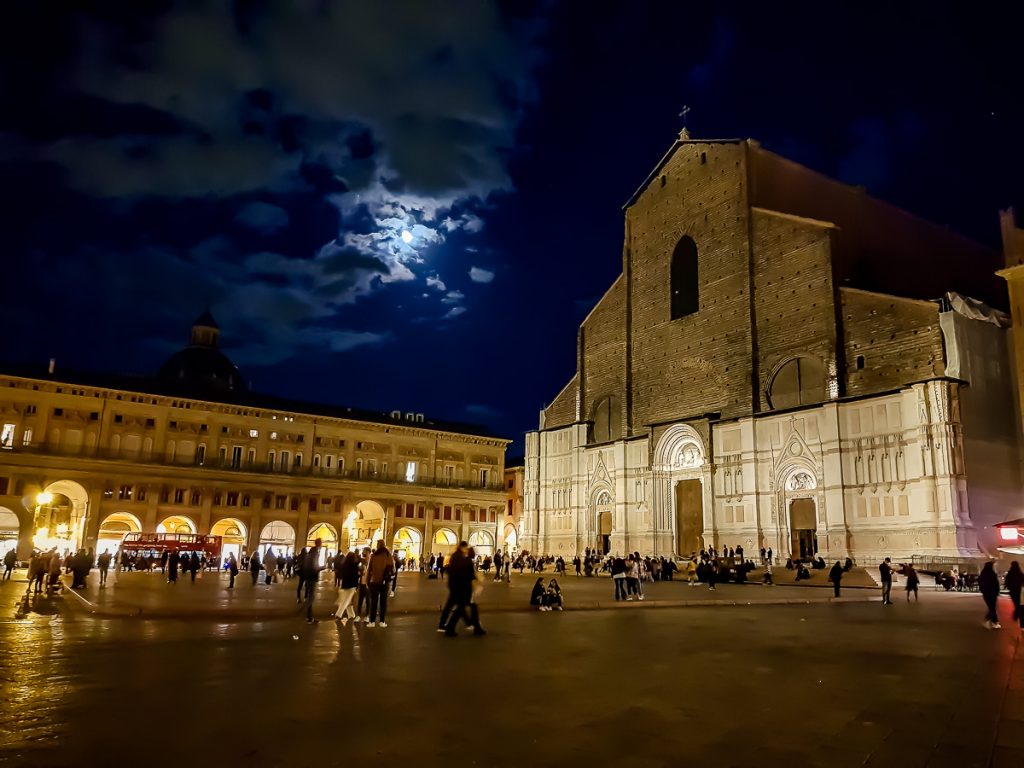
Before we get to secret number 5, you should know that the entrance to the Basilica is free. As in all the churches in Bologna, as they boast, pointing to Florence, where you have to pay…
There is always a military guard at the entrance. You don’t see that in other cities. Why this guard?
Inside there is a fresco by Giovanni da Modena, inspired by Dante’s Inferno, in which Muhammad is eaten by demons in Hell. The painting, extremely offensive to Muslims, made them highly upset, and they even threatened to blow it up and such nasty things. So the church is guarded.
(What seems funny to me is that I found out about this story after I visited San Petronio and I never found it open again to see the painting I told you about…)
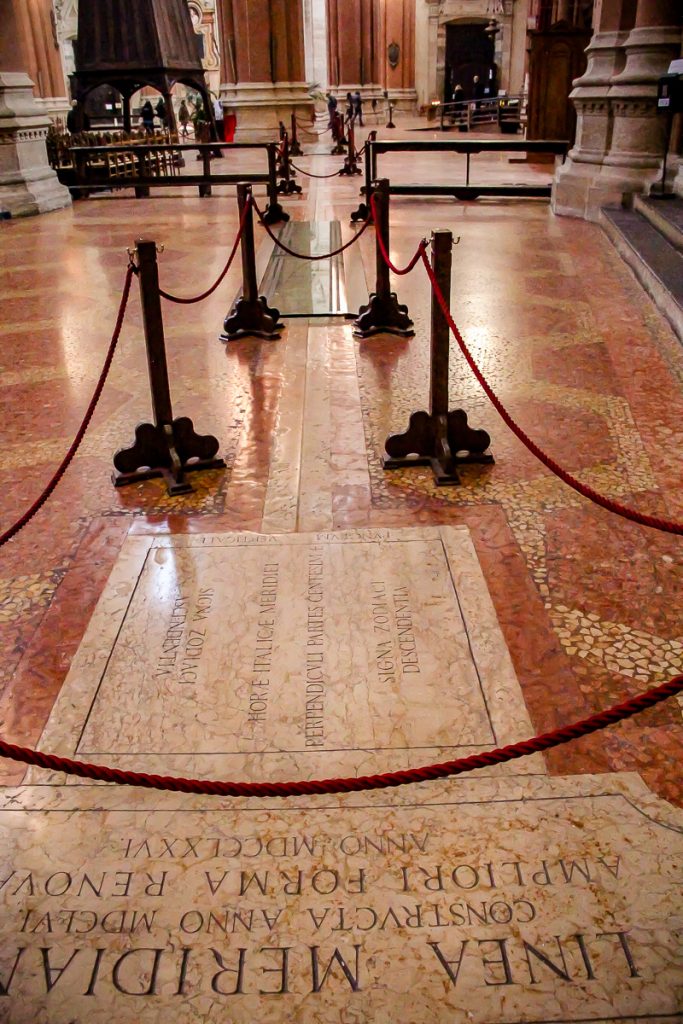
What, however, I saw very well, is something that the people of Bologna boast about: the longest indoor meridian line in the world! It is 67 meters long and was created in 1656.
Protected so that not all the people step on it, this meridian represents the “5th secret” of the city.
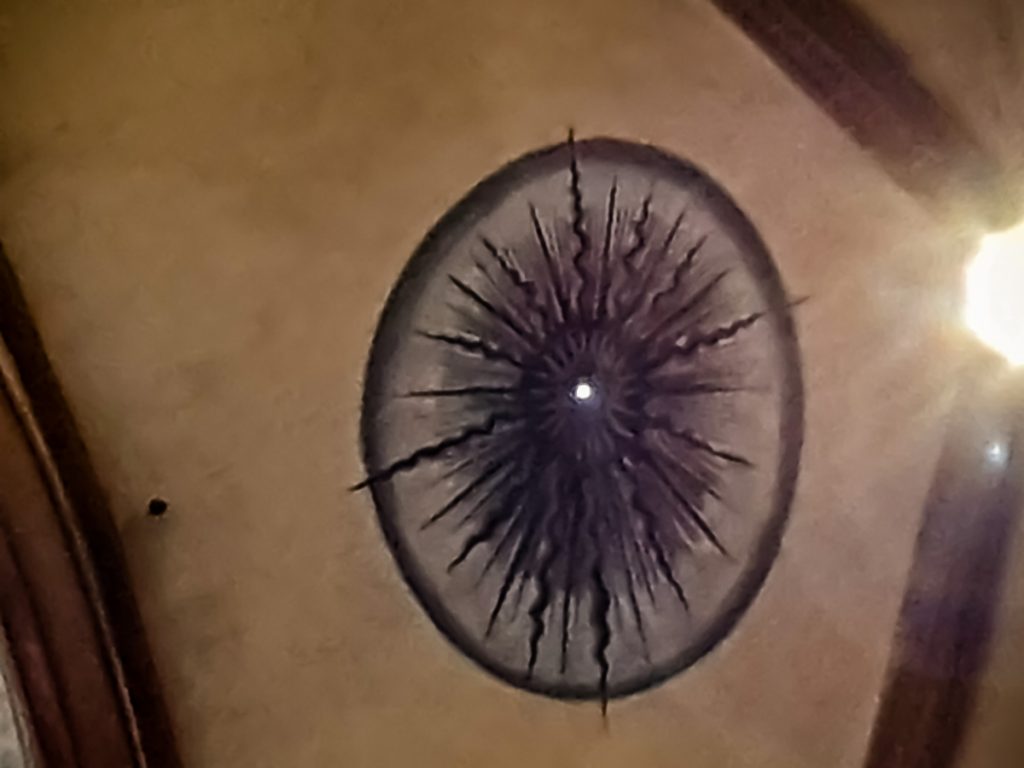
I looked at the hole in the roof through which the sun enters. Every day, at 12 pm, the position of the sun’s rays was noted on the floor, and this is how this calendar was built.
I didn’t catch the 12 o’clock inside, as I would really have liked to check if the ray falls exactly on the sign we are in J.
What I also liked about the San Petronio Basilica:
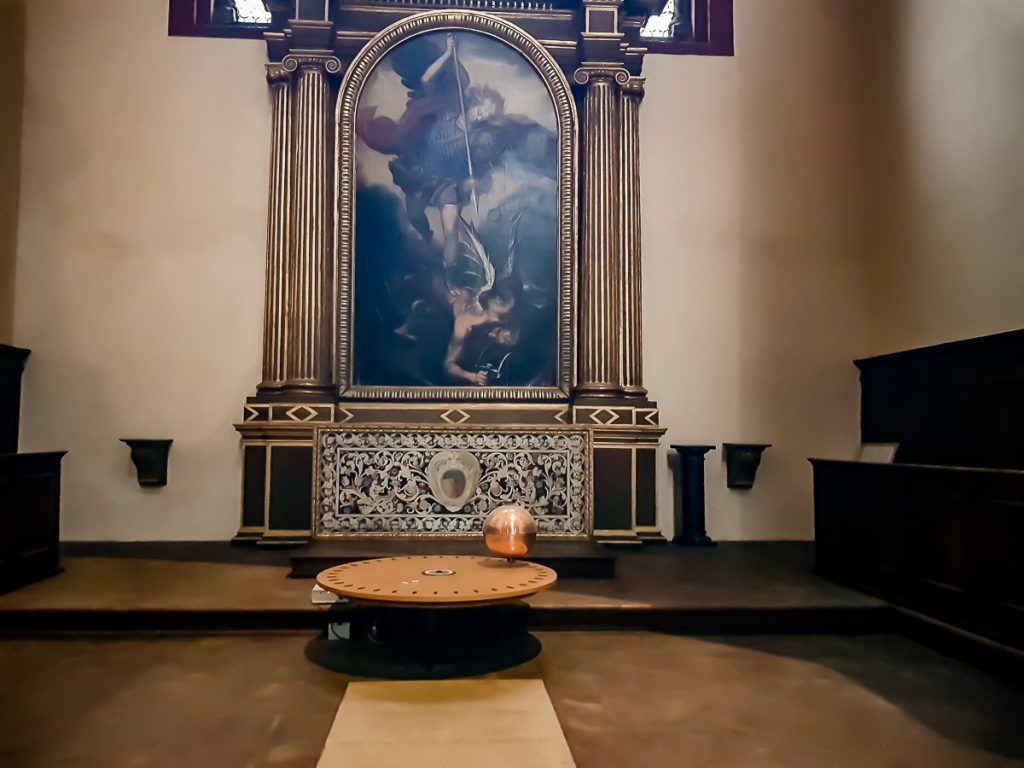
They have a Foucault pendulum. I watched it as fascinated as I watched the one in the Pantheon in Paris!
And the organ – it is the oldest functional organ in the world! Built in 1470. It is not alone, there is another one in the Basilica, which is some 400 years old.
Oh, and I found out later: you can go up to the church terrace, for a fee, for a panoramic view of the city.
But let’s move on to secret number 6.
6. NEPTUNE’S PENIS
…here’s why it’s good to come to a city a second time. You learn a lot of things, really hihi.
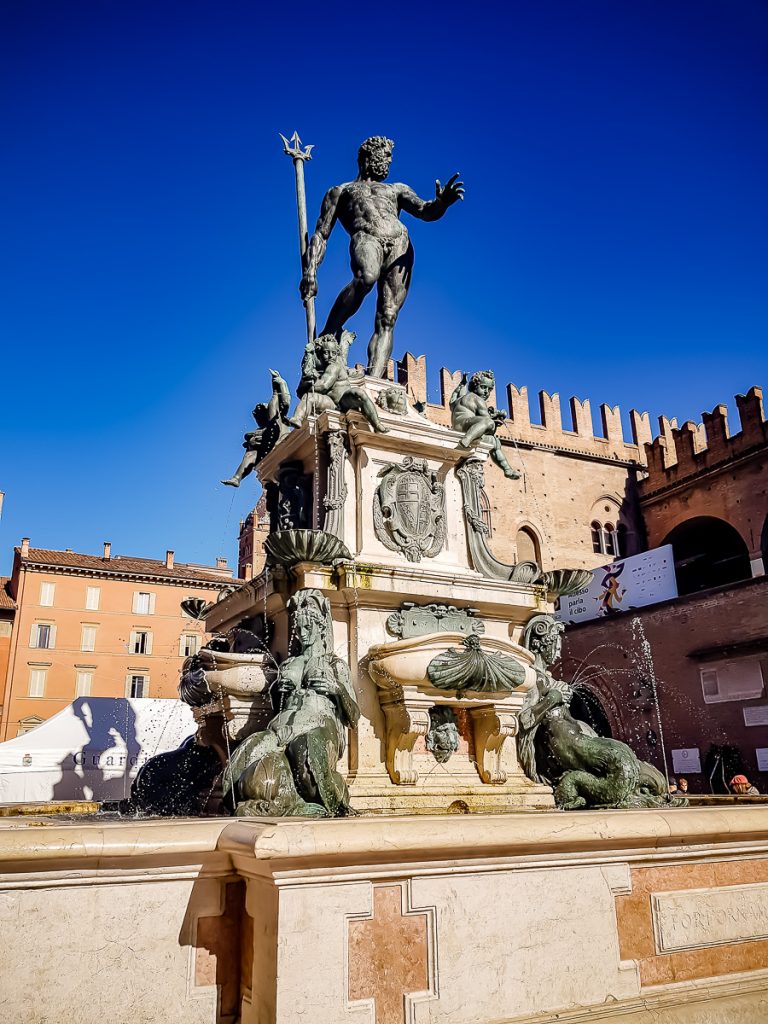
The statue of God Neptune is a symbol of the city! You can’t help but come across it on your tourist trips, because it’s right in the center!
The sculpture belongs to Giambologna (Jean de Boulogne, born in France, although I would have bet that he was from Bologna), considered the last important sculptor of the Italian Renaissance. The Pope of Rome gave him this first important for him order.
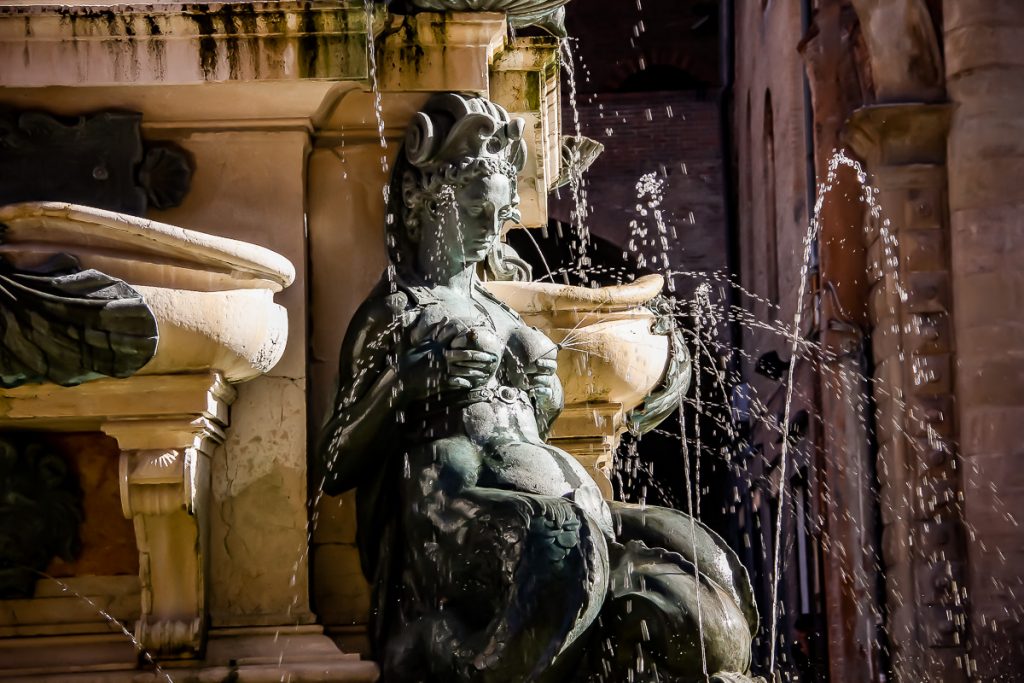
They say Mr. Giambologna was obsessed with sex… A proof being the mermaids at Neptune’s feet, who squeeze their boobs to get the water flowing and who, unbelievably, have two tails, precisely because Giambologna wanted to sculpt their private parts too.
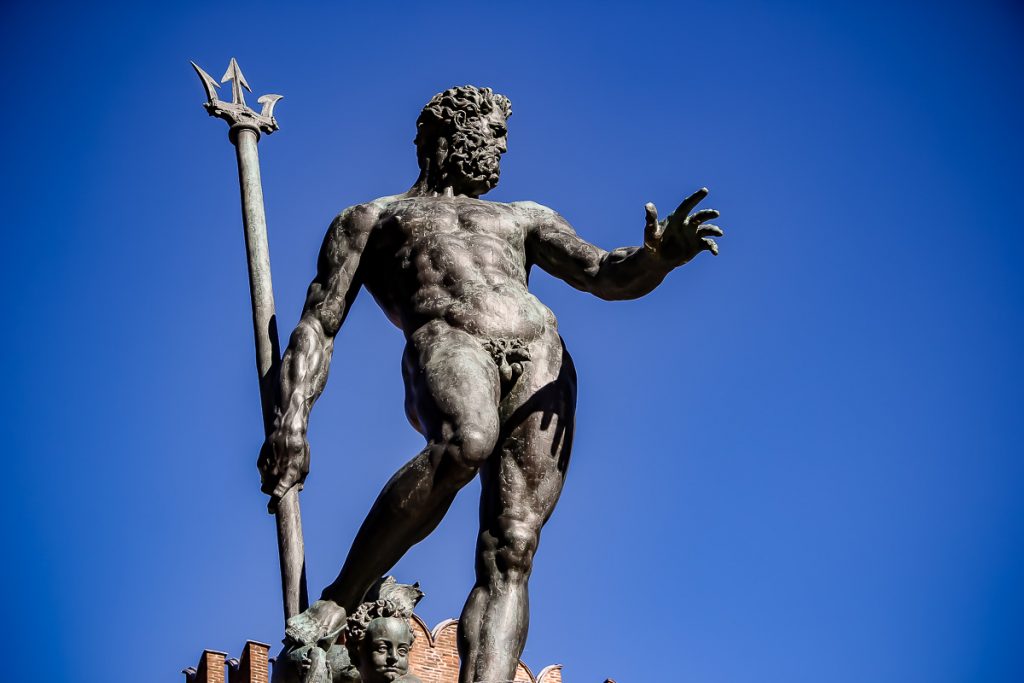
Neptune is represented as a strong, potent man, but… not in all places, if we look closely at him. Naturally, this was not the intention of the sculptor, but, as the statue was in the very heart of the public square, the public opinion put pressure on the priests and so the artist was not allowed to sculpt a very powerful man…
Upset that he was not allowed to express his artistic visions, Giambologna nevertheless found a smart solution to show what he had in mind.
There is an angle from which you see something completely different, basically what the author wanted:
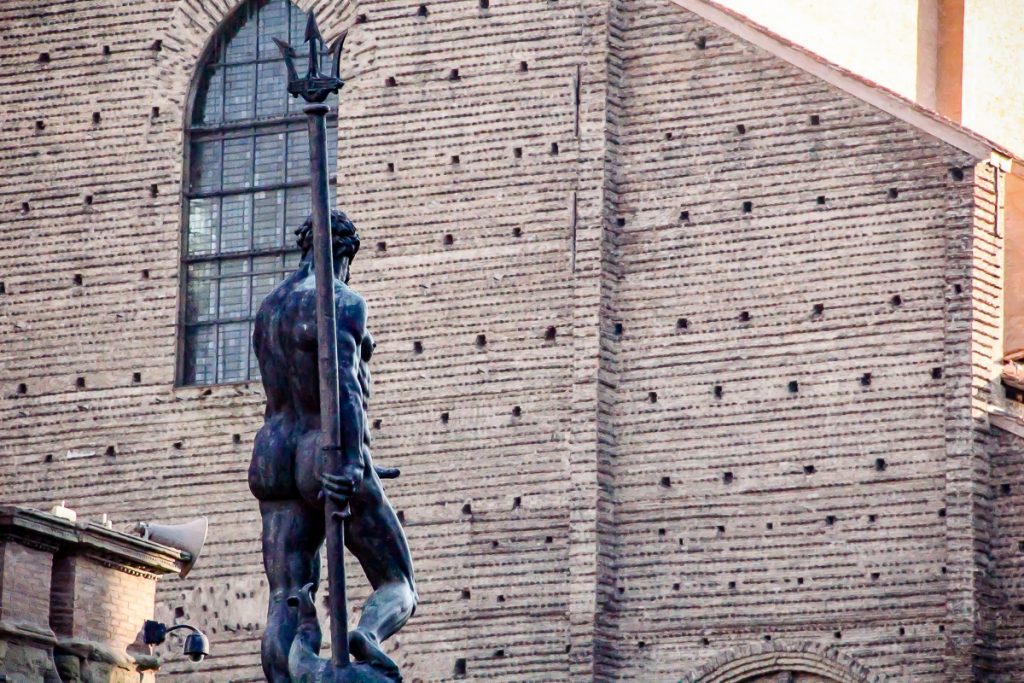
The effect is given by the positioning of Neptune’s thumb J))
From here, everything is at a… high level.
7. THE WINDOW TO LITTLE VENICE FROM BOLOGNA
Although it has no port to any sea or anything, in the Middle Ages, Bologna was a very important commercial hub!
It was easier to trade by boat than by land, and for this reason, 2 artificial canals were built from nearby rivers, plus many canals and flood gates in the city. The canals facilitated the transport of goods and supplies. And things were going well! That’s why Neptune is so important for the city, which has become an “aquatic city”.
Well, over time things changed, the canals were no longer of any interest, so some were destroyed, others were simply covered.
If you wonder why Bologna is a humid city, well, it is because there are still many abandoned canals under it, through which the Reno river flows. For this reason, no means of transportation or anything else can be built underground.
But what do you know, Bologna still has a canal. The only one.
Not far from the center, somewhere on the way to the train station, you discover the small canal flanked by inhabited houses – which makes you think of Venice… It is called Canale delle Moline and has become a magnet for tourists due to a unique element.
The bridge that crosses the only canal in Bologna has one of its sides closed. And, in the middle of the wall, there is a small window, secured with a bolt. (Now, in 2022, I discovered the bolt has padlocks on it. I don’t think it will hold much under their weight…)
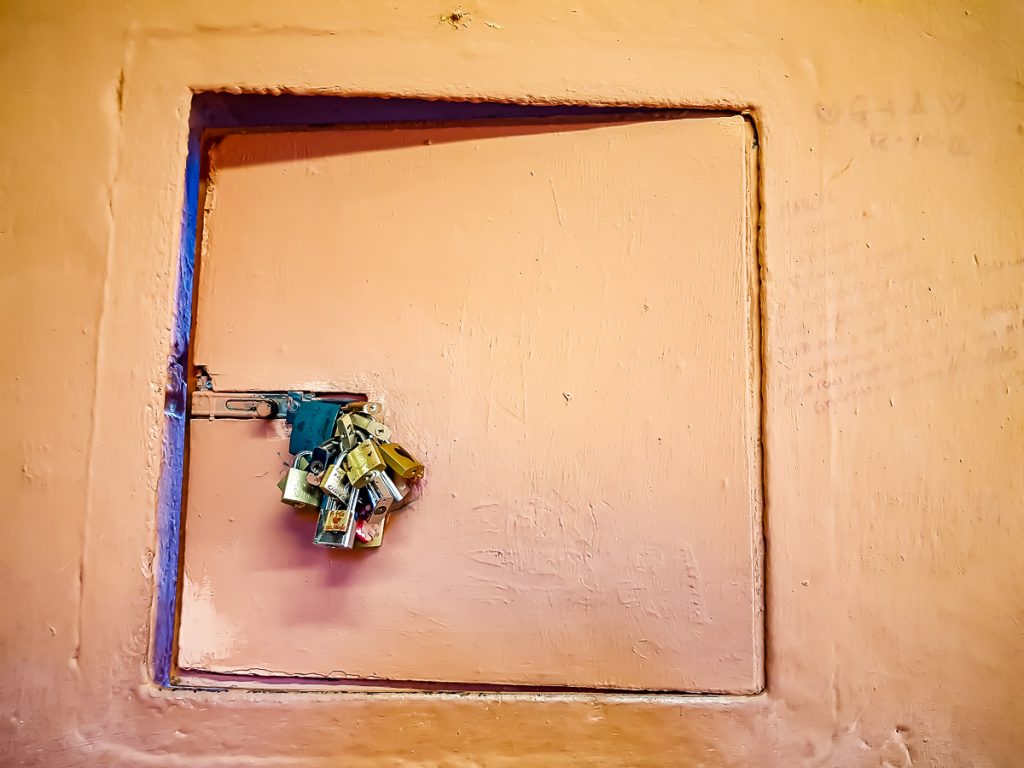
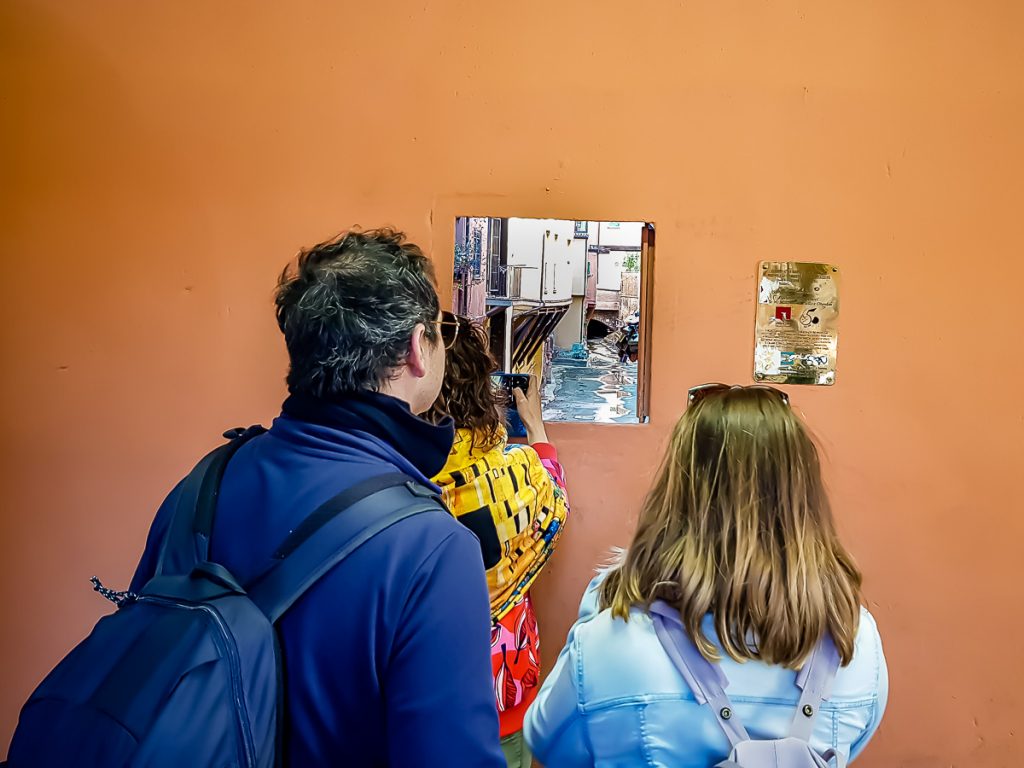
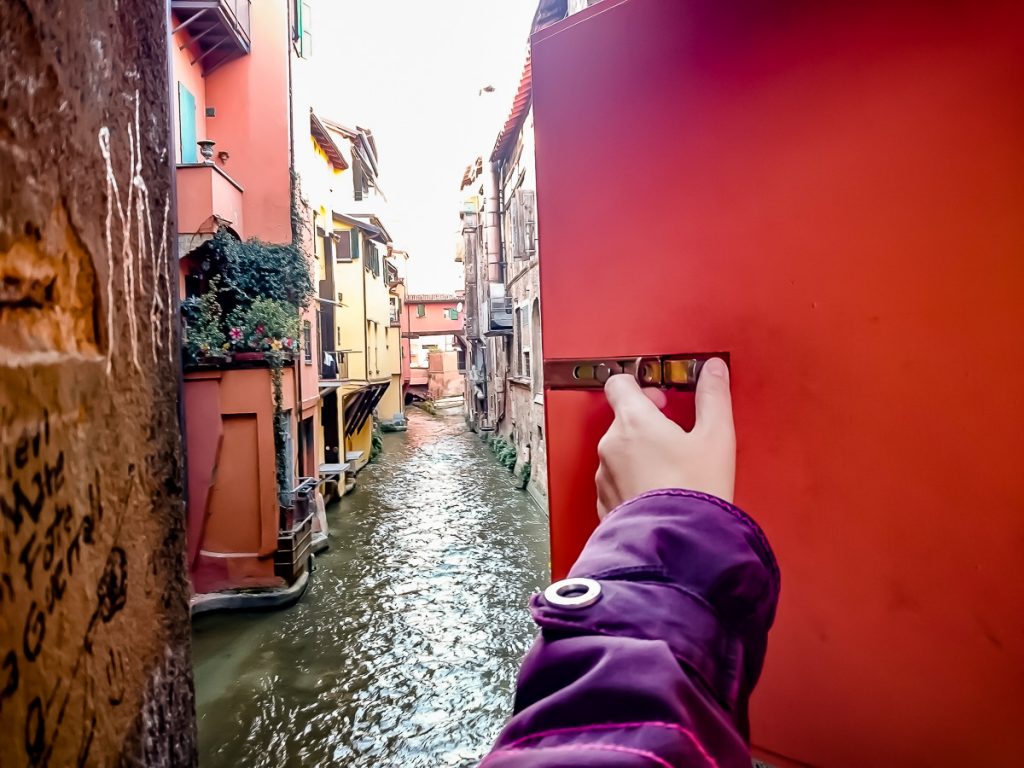
I was like a child when I first discovered “finestrella”, as the Italians call it. I looked for it with the map in hand, and now I came directly to it, with the guide – it’s on via Piella, no. 18.
You go the bridge, open the window in the wall and there it is, the canal appears before your eyes. Well, you can’t sit there dreaming with your eyes open, because, being already a tourist attraction, others are waiting behind you to take their picture.
WHAT TO SEE IN BOLOGNA
There are so many places and things that are worth seeing, not to mention how the eyes roll when you see… the typical Bolognese food.
TOWERS OF BOLOGNA
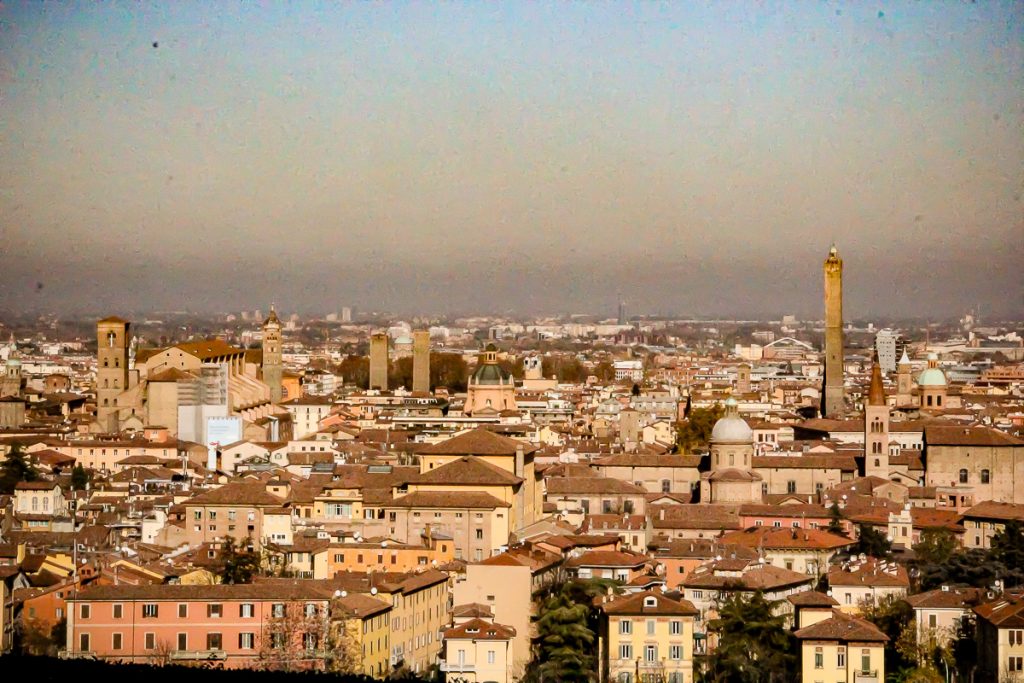
Bologna currently has a little over 20 towers. In the Middle Ages, here was a real Manhattan, with over 180 towers!
The towers were built by the rich of the city, both to show their social position and for defense purposes.
How did it get to so many?
Well, a rich family built a tower, then another one wanted to impress with their wealth, so they showed their power and made one even higher. And that’s how a real competition between the rich appeared.
To top it off, these people didn’t even live in these towers. They had palaces where they could live and where they wouldn’t have to climb, literally, hundreds of steps every day…
The soldiers and the employees of these families lived in the towers. It was a common fact to fight in order to get other people’s towers – to destroy them or, on the contrary, to add them to your “hunting trophies”. So you had to know how to guard your tower.
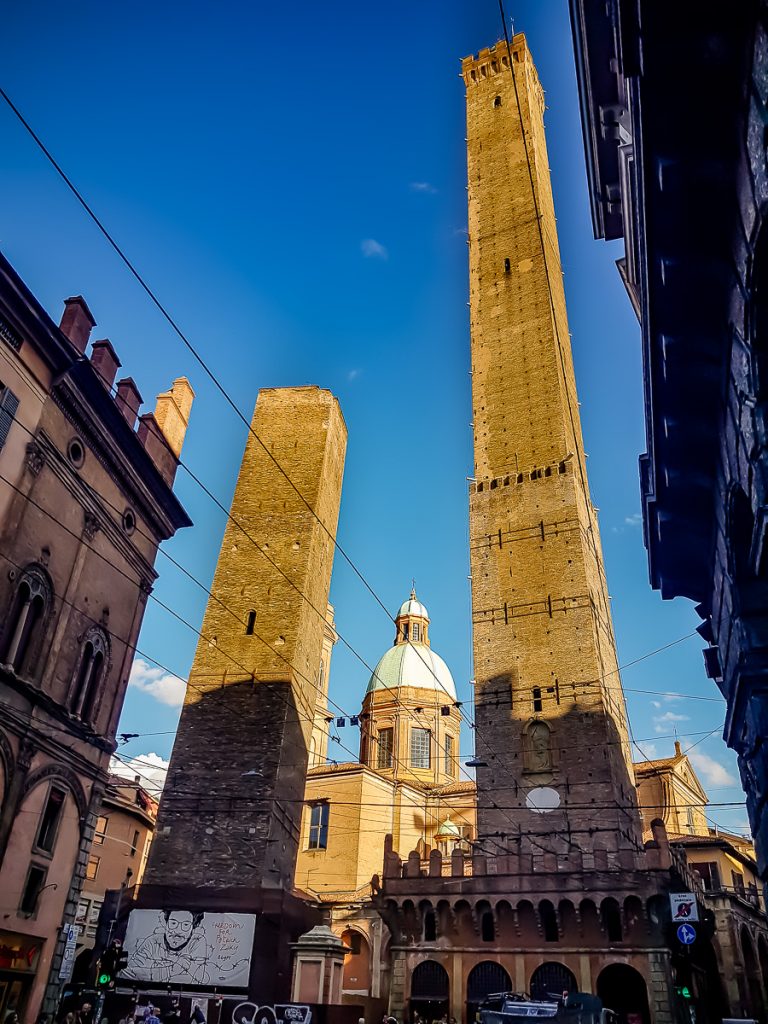
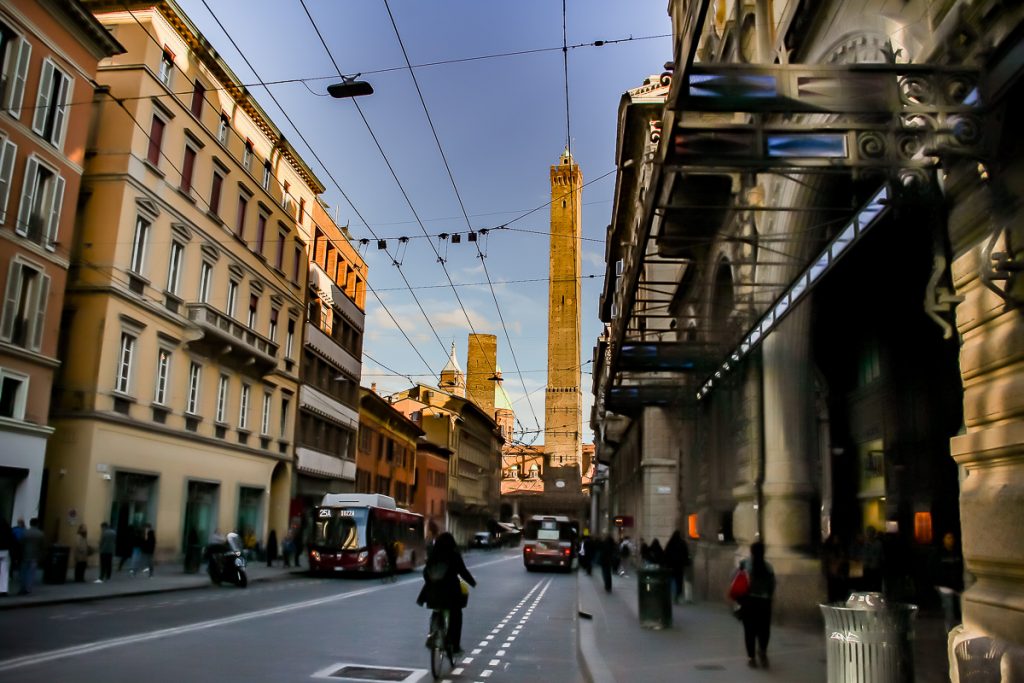
TWO TOWERS
When someone built a higher tower next to yours, there was no time for you to think about the grass being greener on the neighbor’s side, you had to start expanding yours! Nobody wanted to be the sucker…
This is what happened with the highest tower in Bologna – Asinelli – 97.2 meters high, which was originally much smaller. (The level from which it was expanded is clearly visible.)
The tower was built in the 12th century by the family that gave it its name.
You can climb up the Asinelli Tower – it costs 5 euros and, basically, your liver, if you are not trained to climb 498 steps J. And they say at the top (I didn’t climb), there is a broken vase. It symbolizes the political capacity of the city to resolve conflicts.
The purpose of the tower has been changed over time. At one point, in the Middle Ages, it was a prison. And during World War II it was an observation point – they climbed it to see where in the city the bombs fell.
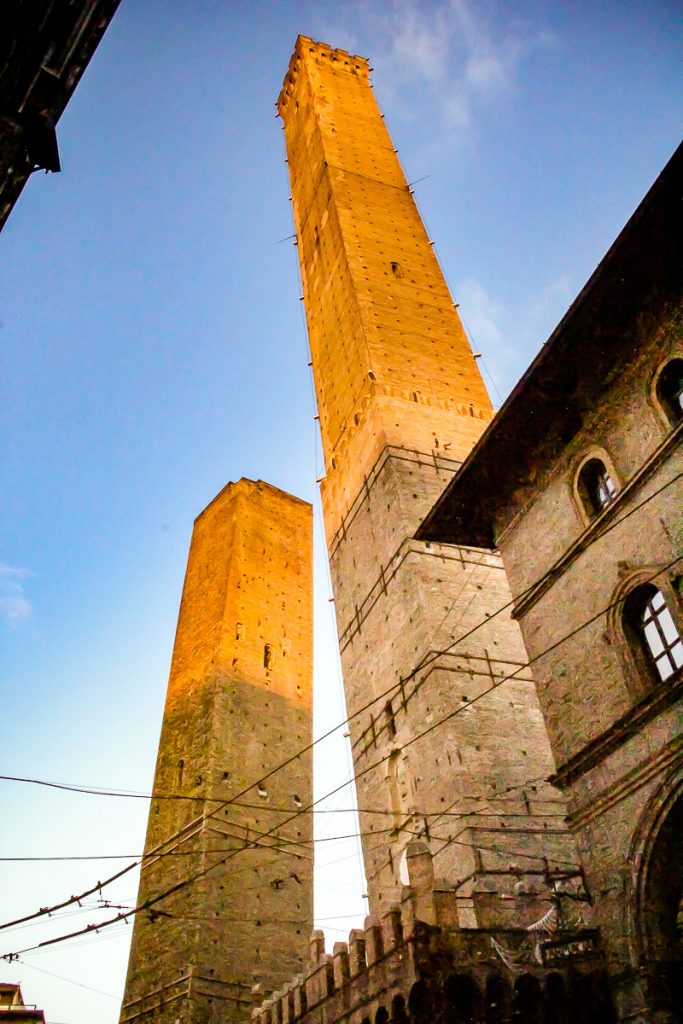
The tower next to it, Garisenda, was built around the same time, but it is much smaller – it is only 48 meters high. But the best part is that… hold on tight… Garisenda is the most inclined tower in Italy! Yes, that is right, it is more inclined than the tower of Pisa (4 degrees, compared to 3.97 degrees, the one in Pisa)! For this reason it cannot even be visited.
Initially it was 60 meters high, but it was “shortened” in the 14th century due to a dangerous landslide.
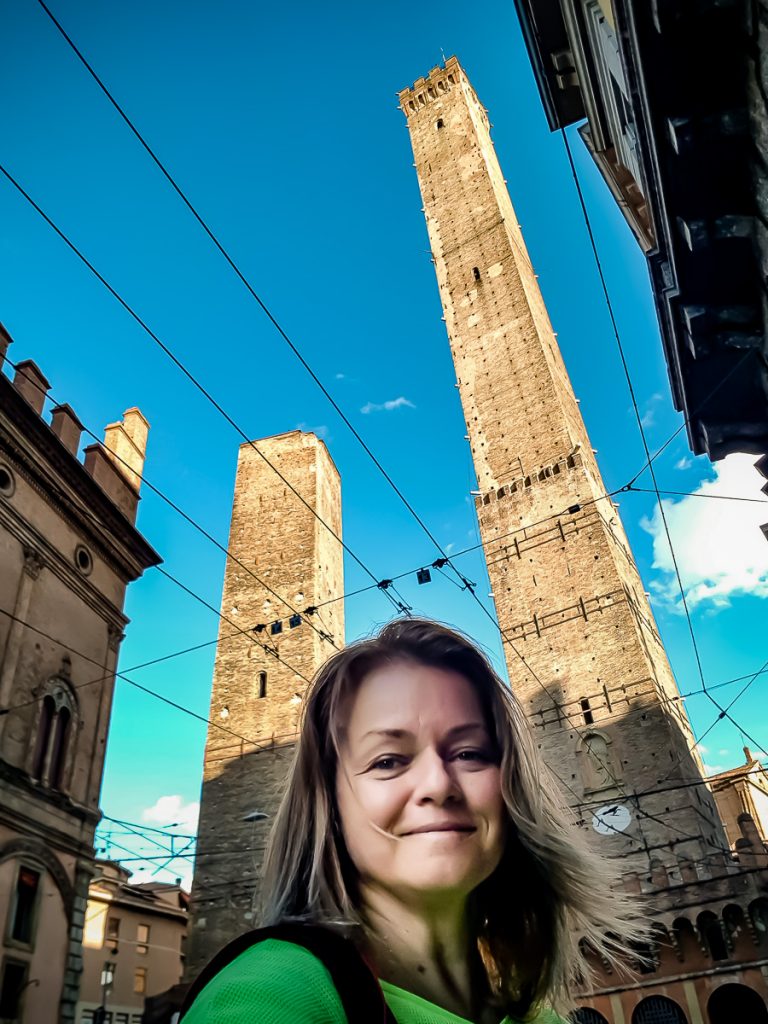
Asinelli and Garisenda form an iconic pair for Bologna – “the two towers”.
PRENDIPARTE TOWER
In the center of the city there is another tower built in the 12th century, by the Prendiparte family, for defense purposes. The locals call it the Crowned Tower, because it has a symbol with a crown.
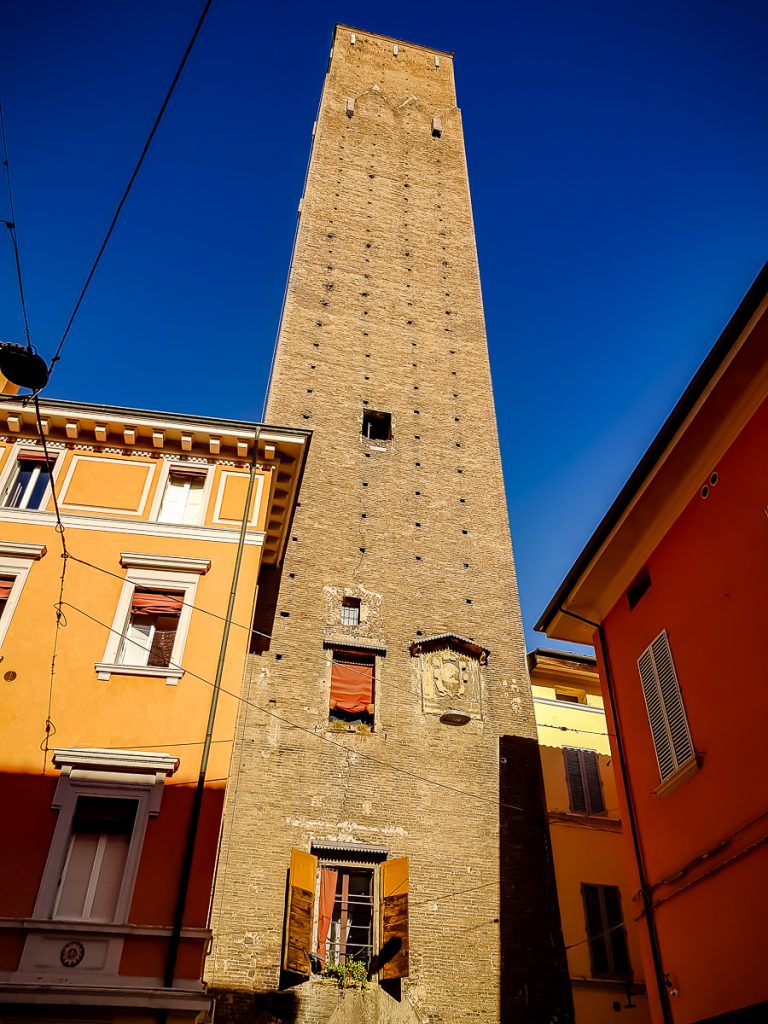
In the center of the city there is another tower built in the 12th century, by the Prendiparte family, for defense purposes. The locals call it the Crowned Tower, because it has a symbol with a crown.
The tower is the second tallest in Bologna – it is 59 meters.
It’s not open to visitors, because it’s an… airbnb.
Yes, it can be rented! It has only one room and over 400 steps to the terrace! The price exceeds 500 euros per night, but once you pay, you have the whole tower to yourself!
I understand that there are, however, private visits (without access to the room) – to be able to enjoy the panorama, after dying a little on the stairs up. It can also be rented for events (in case anyone wants).
ARCHIGINNASIO
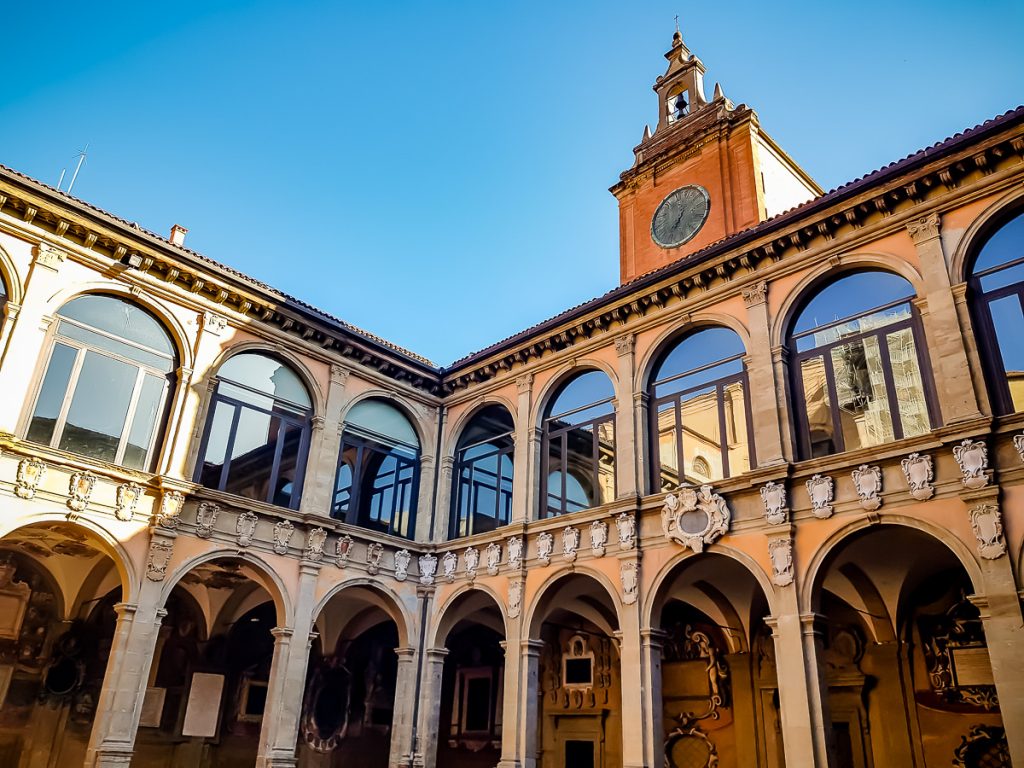
I was one step away from sticking to the walls of the Municipal Library! I liked it a lot!!!
It is one of the most important buildings in Bologna. This is the place where the main building of the University of Bologna used to be, which had the purpose of gathering the different schools of the city under the same roof – the courses used to be held in private or rented houses, in religious settlements and, sometimes, even in the city squares.
Now, the Municipal Library is the largest library in the Emilia-Romagna region.
Entering the inner courtyard, I don’t know what to photograph first from all the things I can see on the walls and the ceiling.
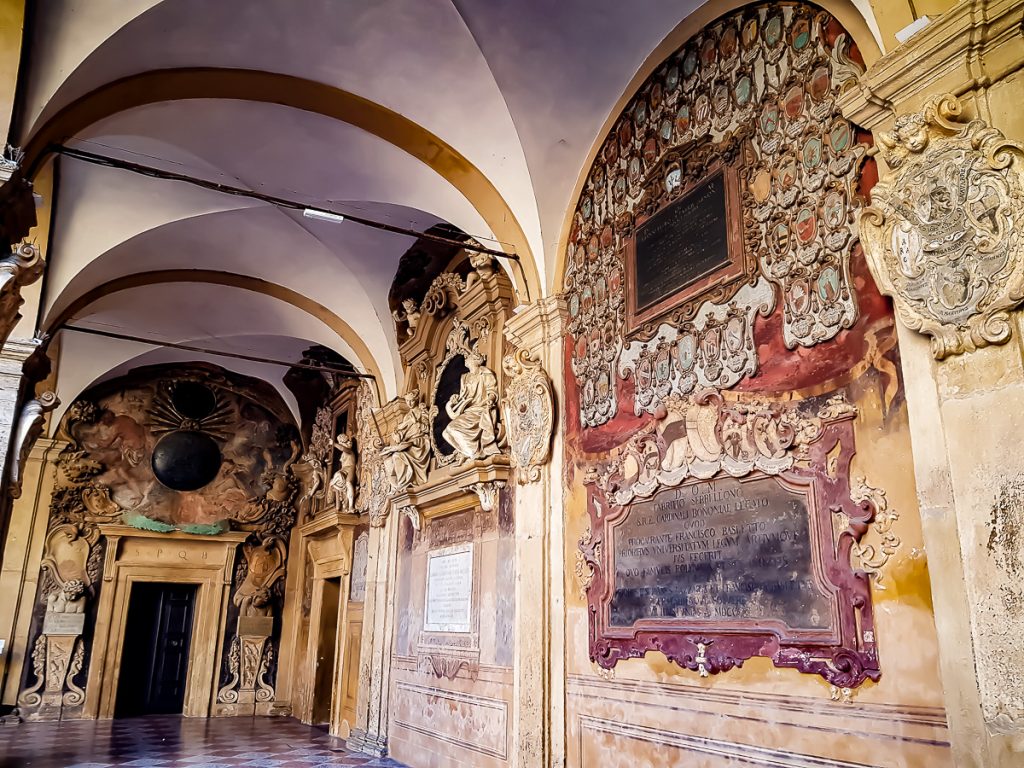
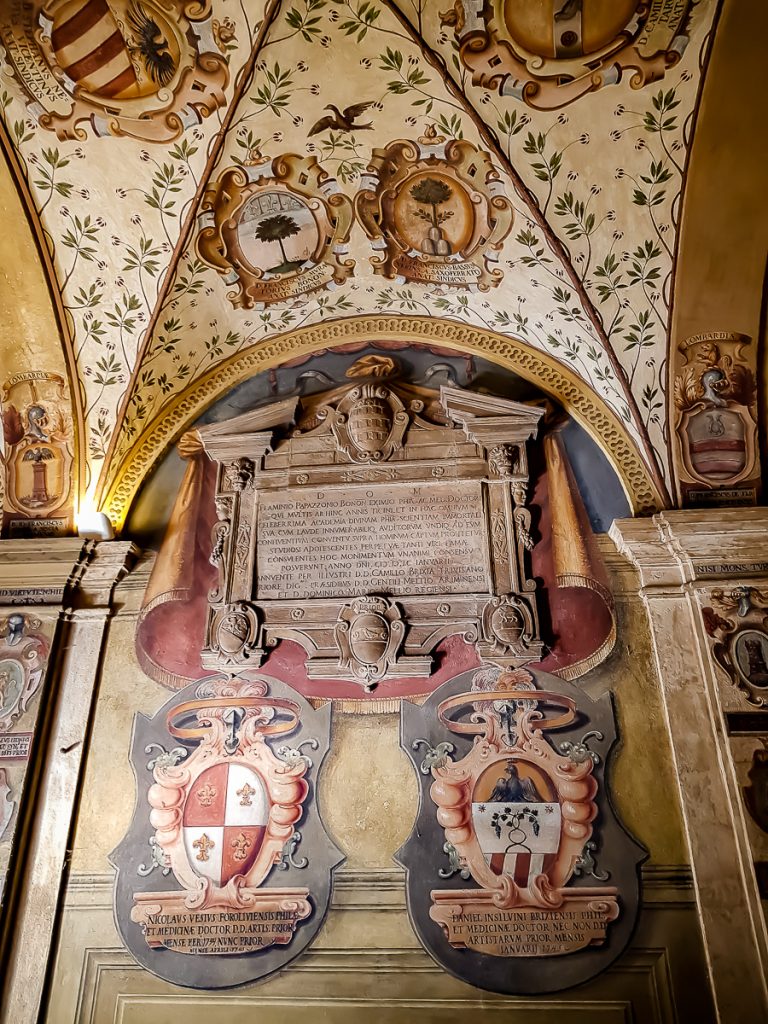
It is full, absolutely full of coats of arms on the walls! The guide tells us that they are the coats of arms of many rich families, whose children graduated, one by one, from this University.
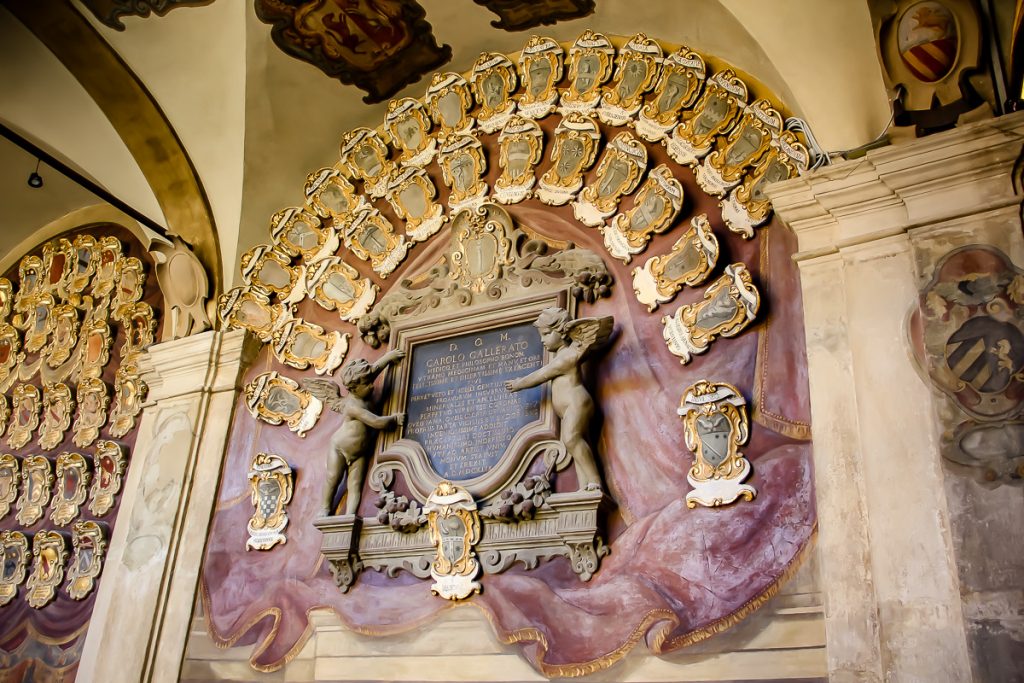
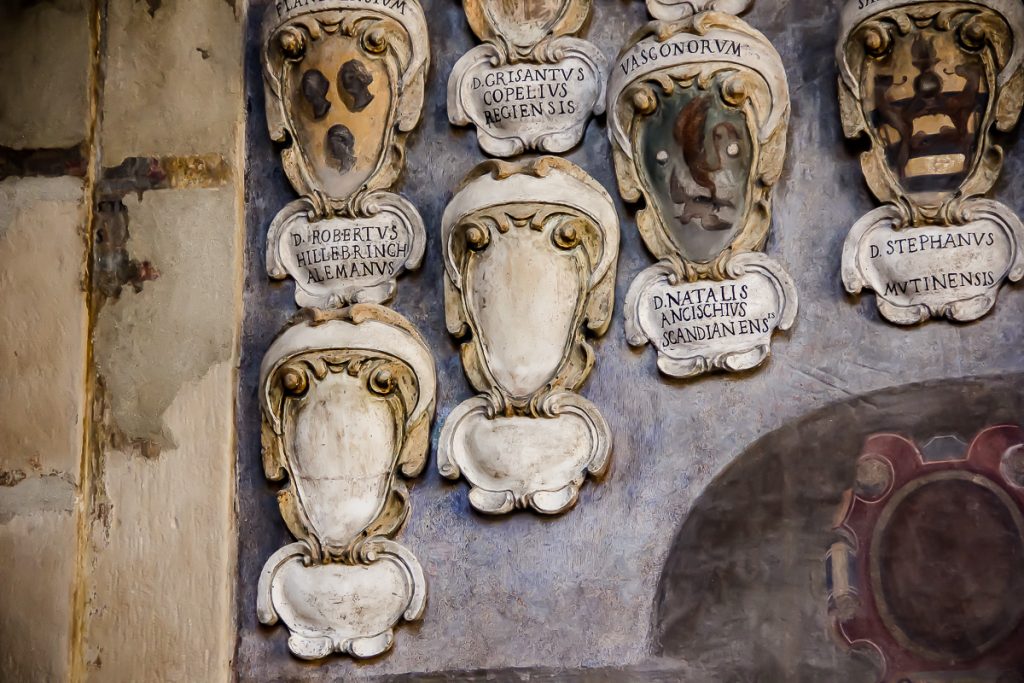
I also read that the coats of arms representing regions or cities were placed in honor of some students chosen by their colleagues as leaders of some student organizations, as we would call them today. And so a coat of arms of the place where the respective student came from was put on the walls.
Either way, they are interesting to study. By the way, look what I found:
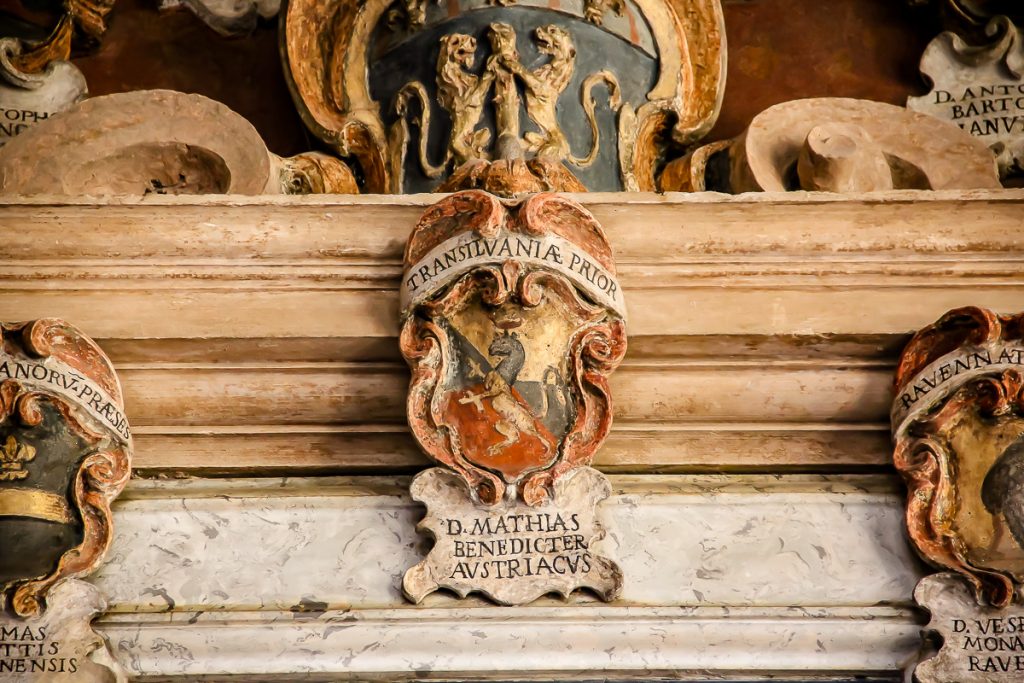
The walls of the Library now have 6,000 such coats of arms!
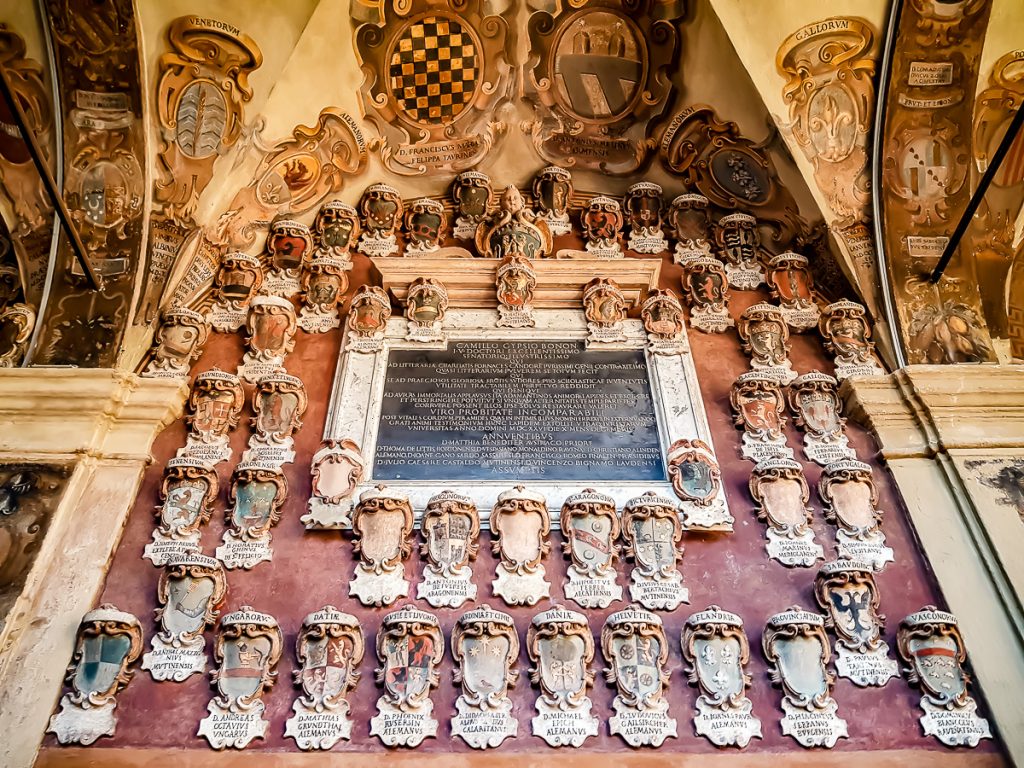
Here you can talk to the walls and that might mean something, because you feel like uttering some onomatopoeia, in admiration… And it doesn’t cost you anything either.
You pay a ticket – 3 euros – only if you want to see two halls. I wanted to see them. (You do not have access to the library itself as a tourist.)
ANATOMICAL THEATRE
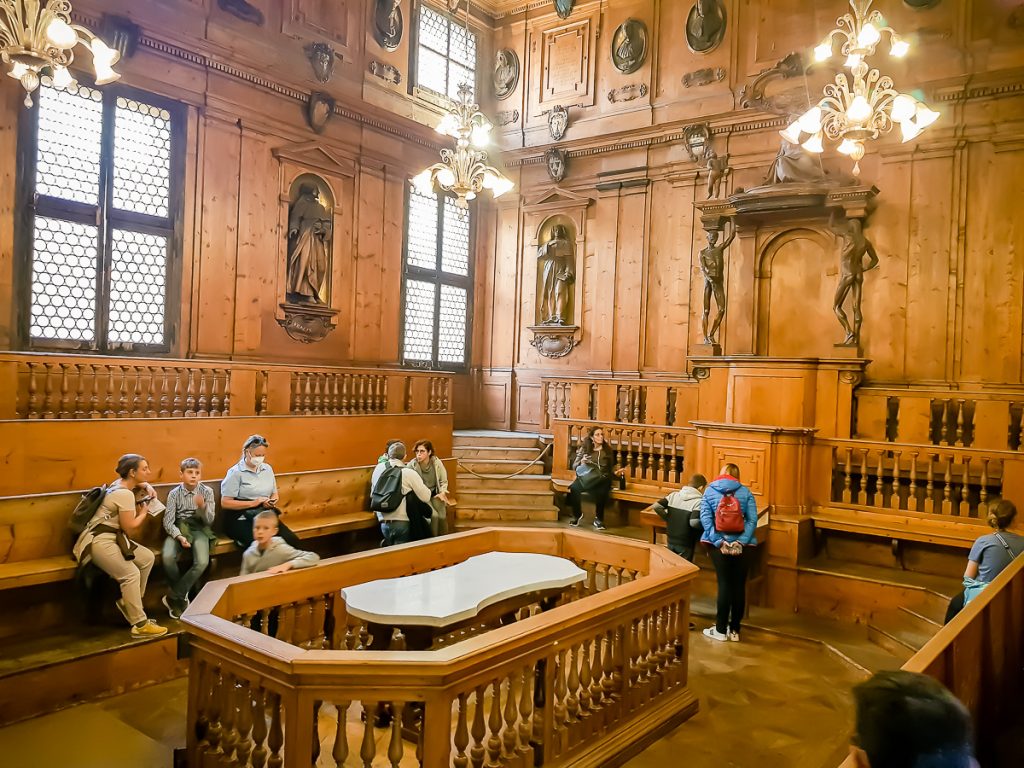
Built in 1636, entirely of wood and enriched with several statues, the Anatomical Theatre was the place where anatomy classes and demonstrations were held.
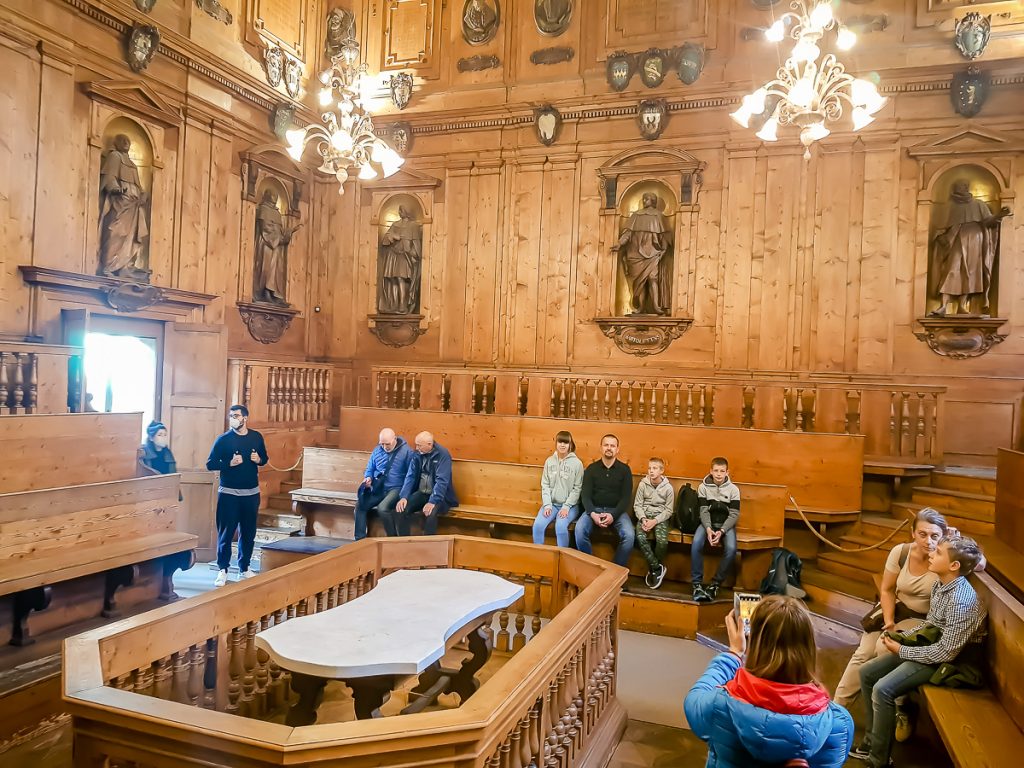
They put the corpse on the table in the center, dissected it and studied everything that could be studied…
I didn’t know during this visit (here is a topic for next time…), that there was a spy hole in the wall of the room, through which the church watched the classes to make sure that nothing too… progressive was taught.
Unfortunately, the hall was badly damaged by the bombings during World War II, but the people did their best and rebuilt it exactly as it was, using all the elements that had survived.
STABAT MATER HALL
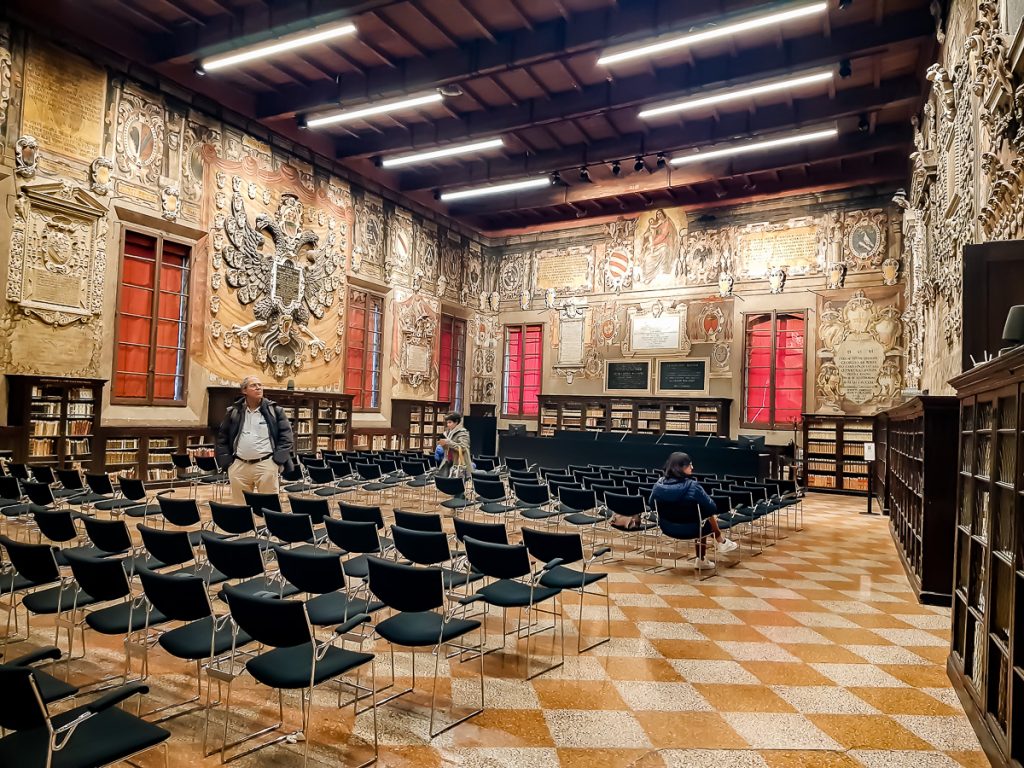
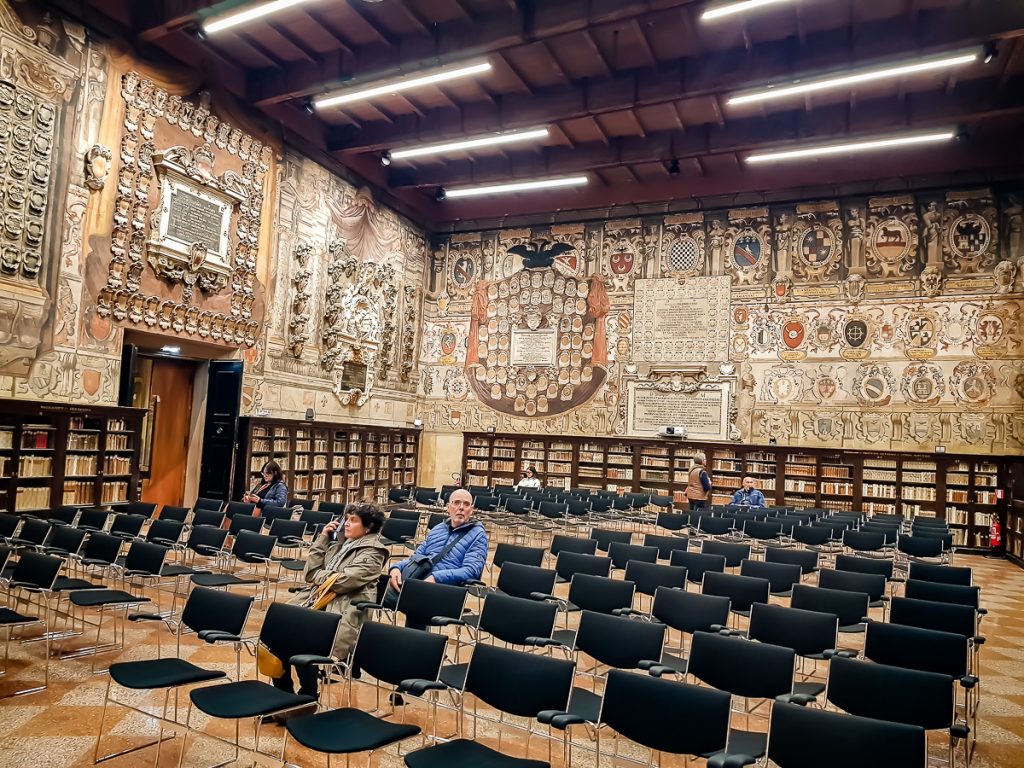
A conference room filled with books, where, as a visitor, you can sit quietly to catch your breath or take a look at the spectacular library:
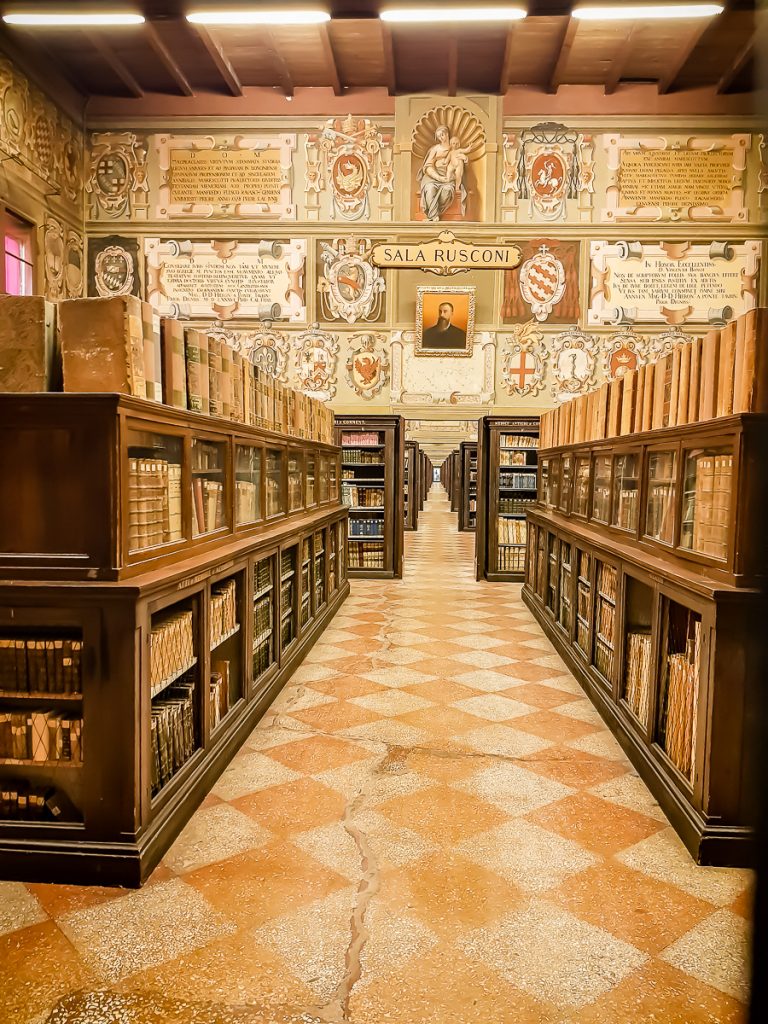
The hall was baptized Stabat Mater in memory of the first performance of Rossini’s Stabat Mater, in 1842.
MICHELANGELO IN BOLOGNA
You will laugh, but one of the main reasons why I took the train from Florence to Bologna the first time was to see Michelangelo’s sculptures here.
It was at the time when I had already seen many of his works, I had read his biography (with difficulty…), my fascination with what this man could create had grown and I was looking to see where other works of his were, besides Florence, Rome and Paris. (Bruges, Siena and Bologna were the new discoveries.)
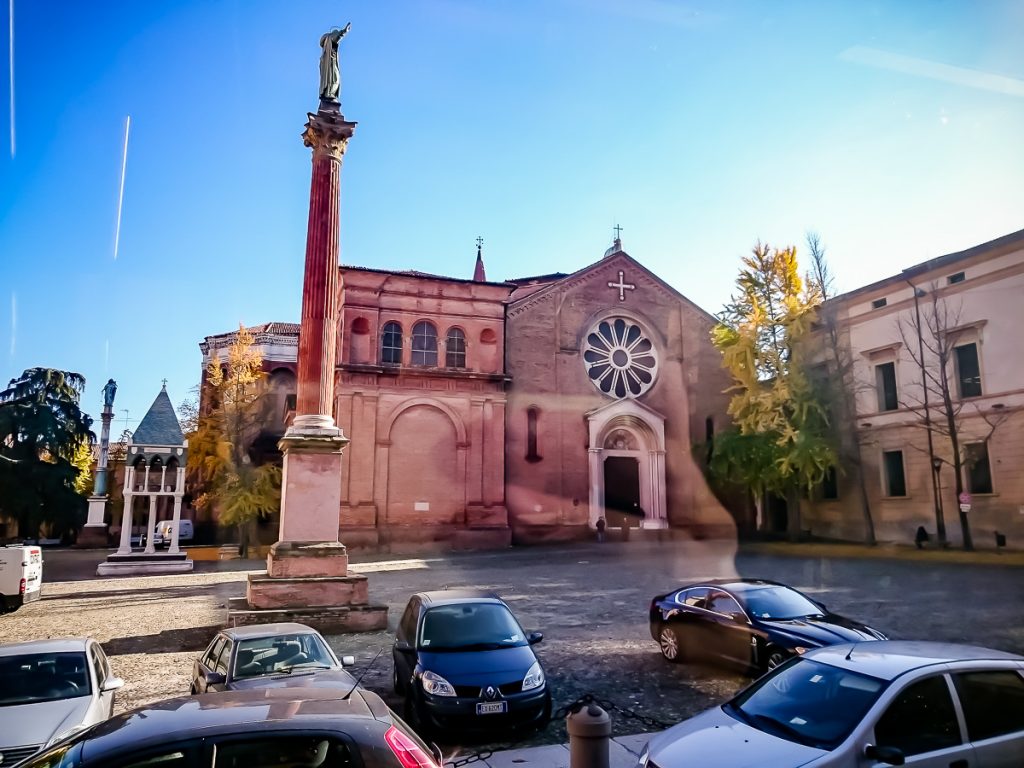
Although you cannot find it in the guides among the top things to do in Bologna, the Church of San Domenico is worth visiting.
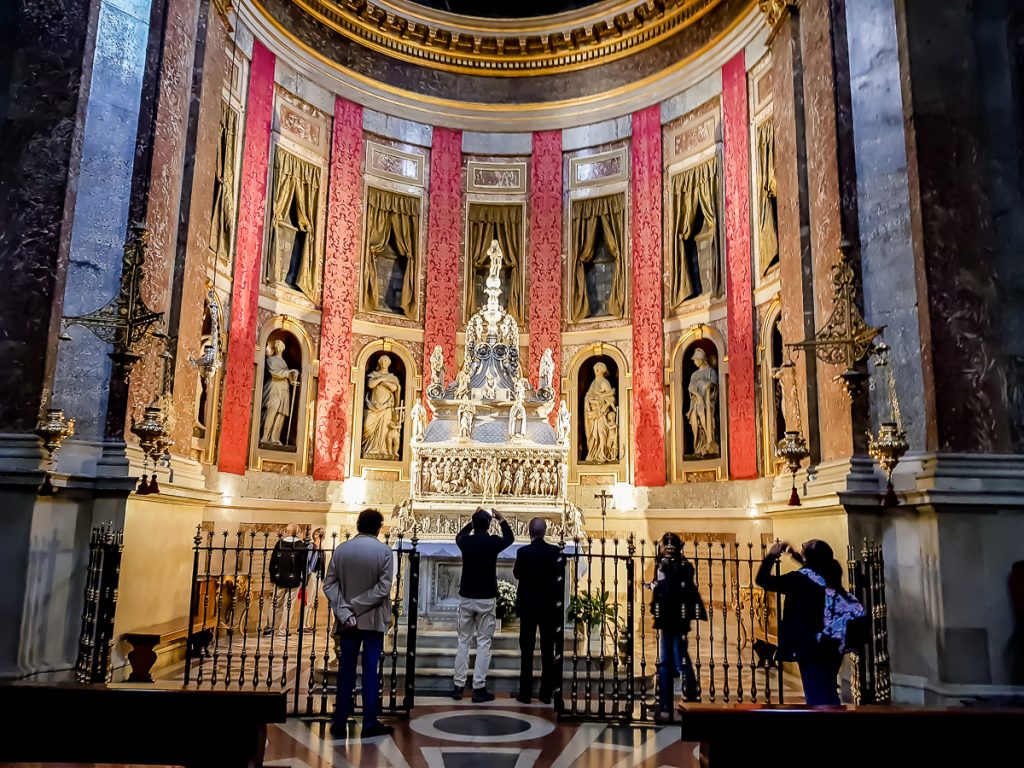
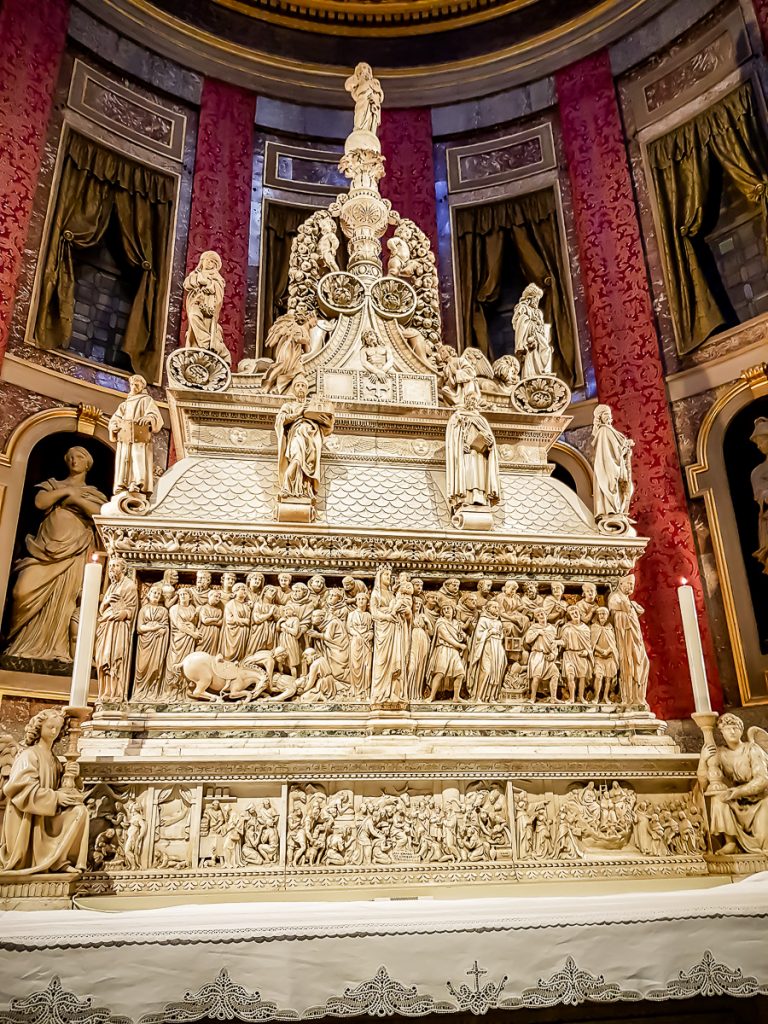
Michelangelo was commissioned to make 3 small sculptures – Saint Petronius, Saint Proclus and an angel holding a candle, all 3 for the Ark of Saint Dominic, the vault that contains the saint’s remains.
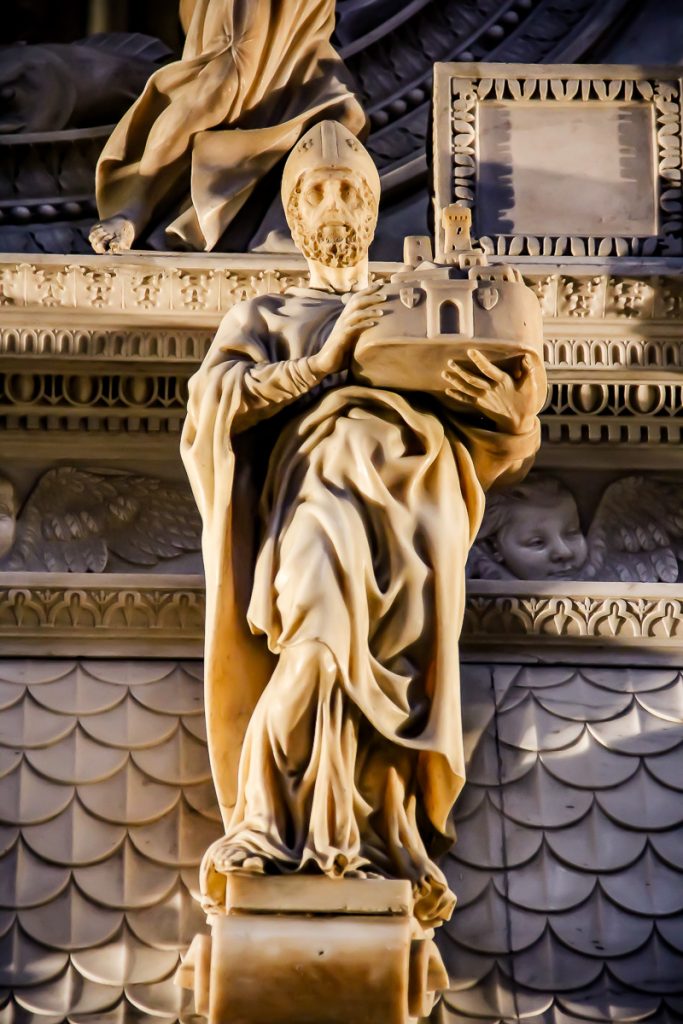
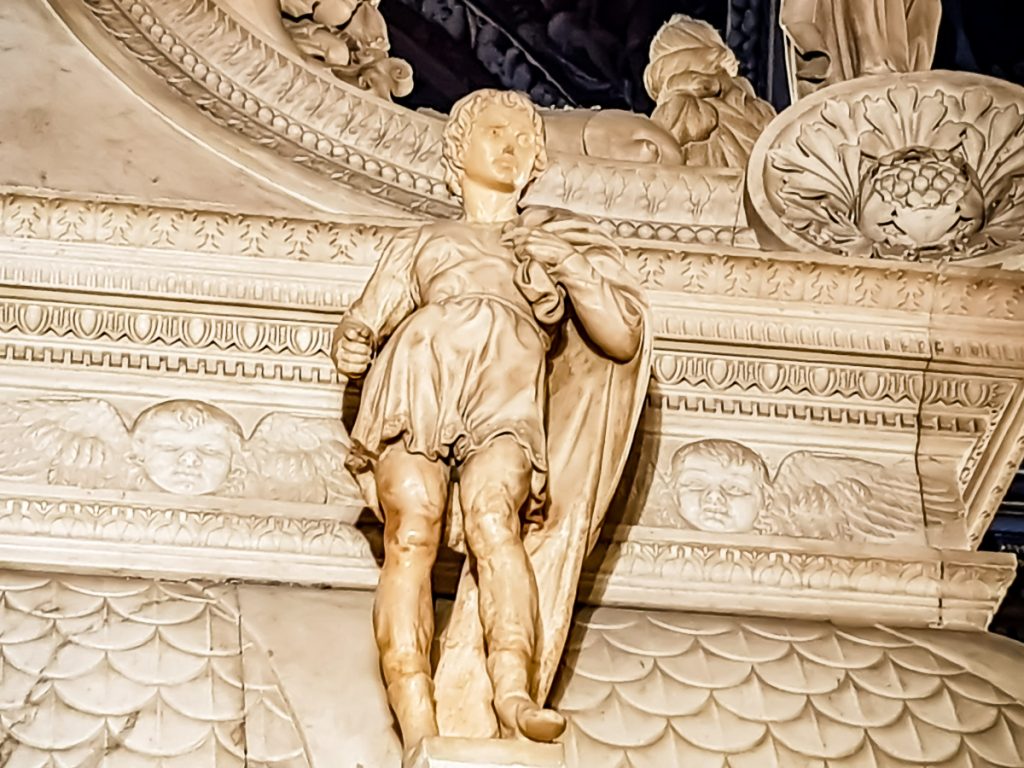
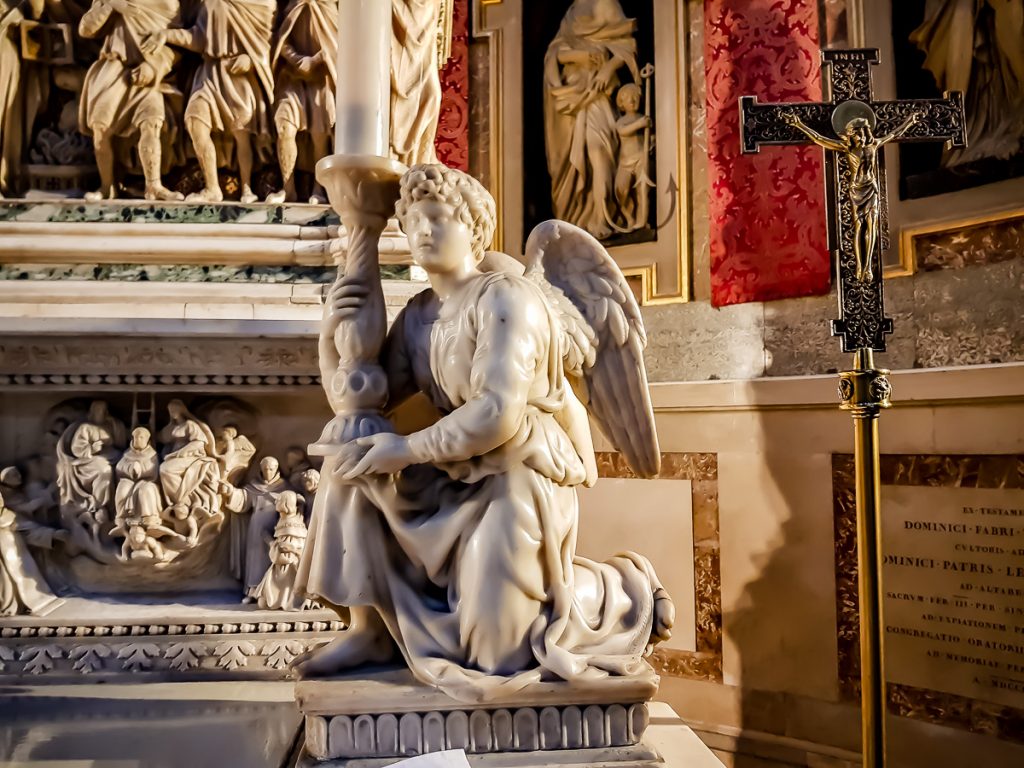
Other artists of the time also sculpted various pieces for the same work of art.
Also in San Domenico, when he was young (but talented J), Mozart himself played the church organ!
VAULTS WITH INSCRIPTIONS
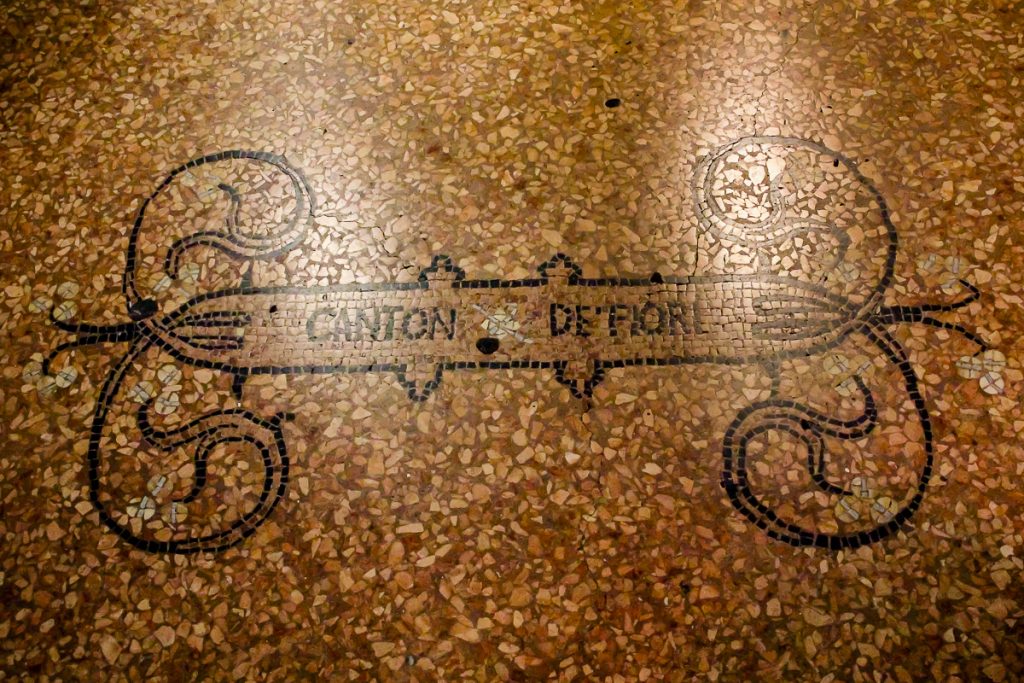
Walking slowly through the center, I saw some mosaic signs on the street at the intersection between via Independenza and via Rizzoli. Interestingly enough, they are “in the mirror” above my head, painted under the arch called Canton de’ Fiori.
There are 3 paintings/mosaics with texts in Latin that say:

“Bread is life”
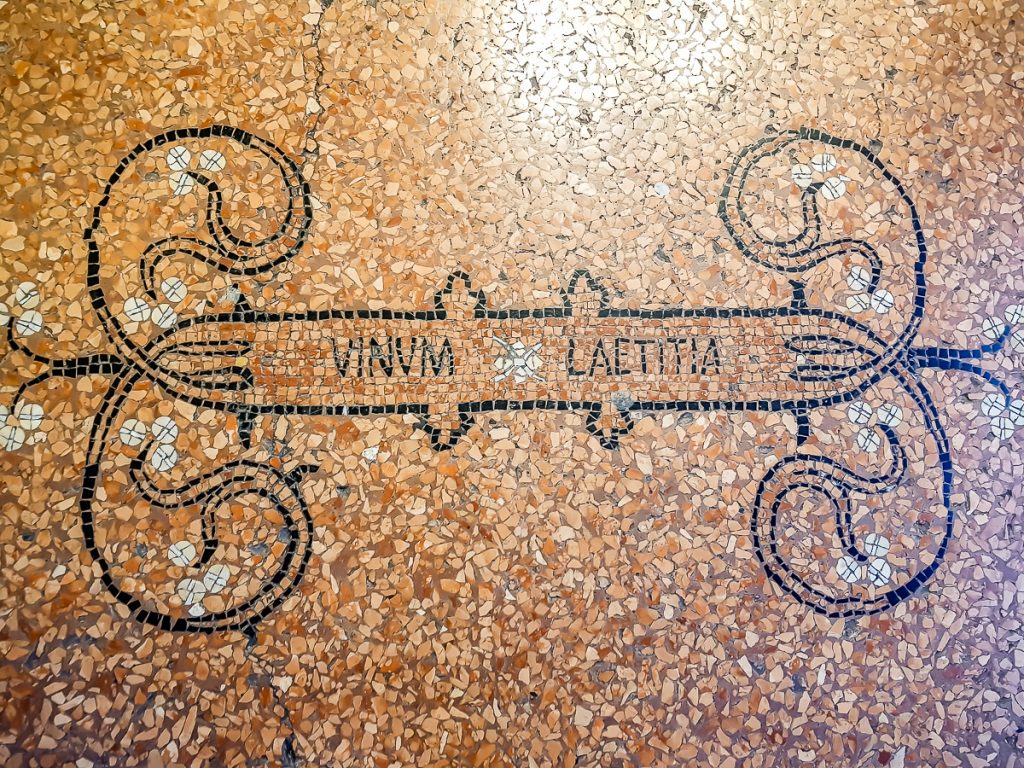
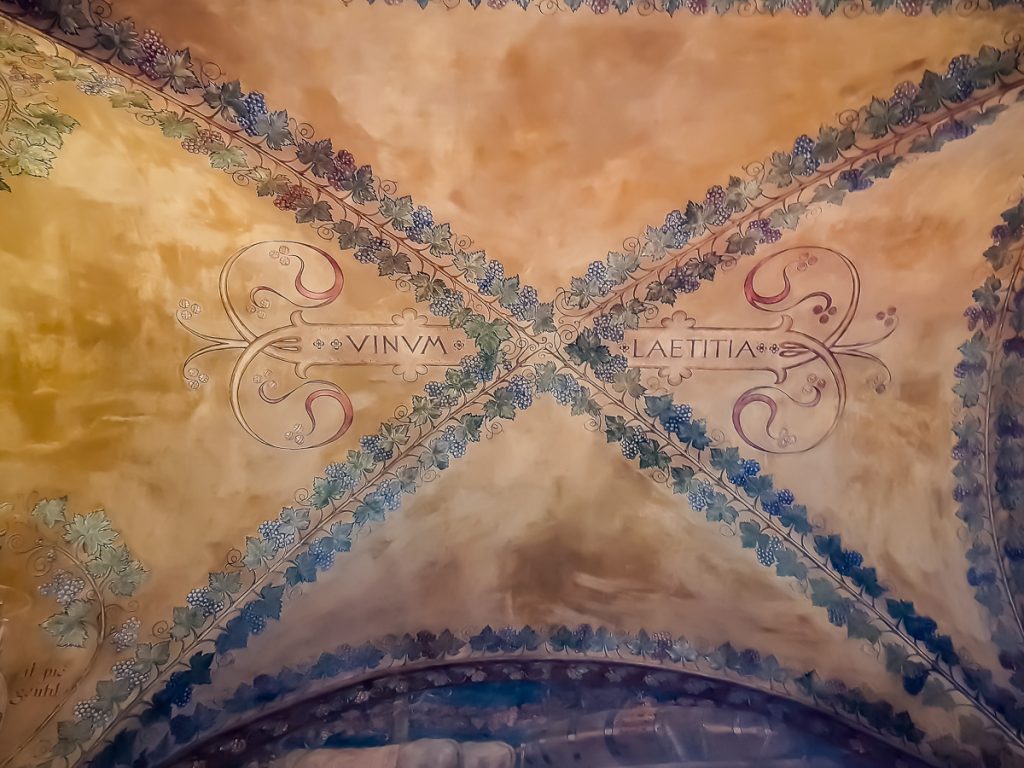
“Wine is joy”
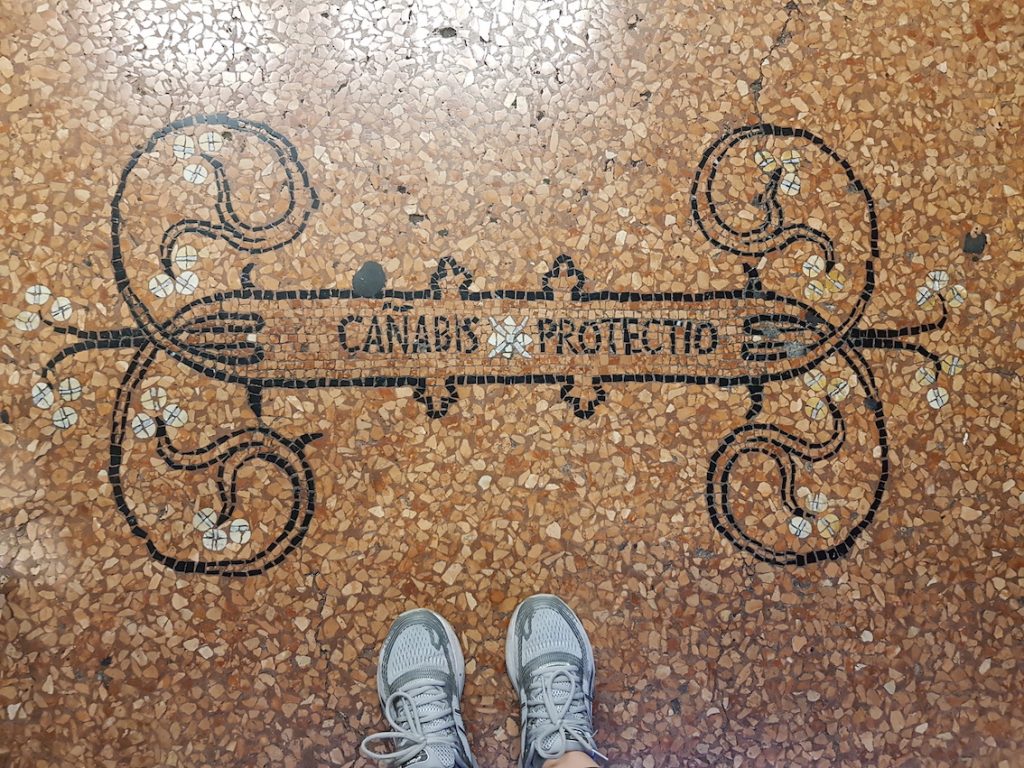
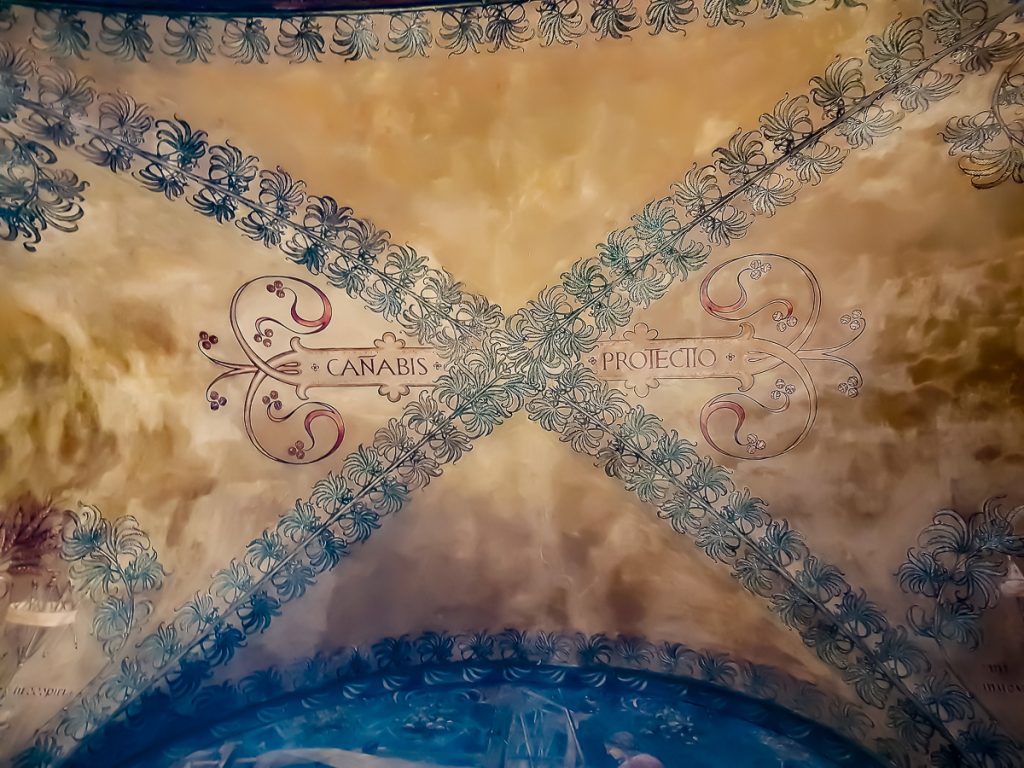
And… “Cannabis is protection”.
The last one, although it may seem surprising, refers to the fact that the development of the city of Bologna owes a lot to the cultivation of hemp and its trade.
WHERE TO EAT IN BOLOGNA
Juging by all the good food that comes from Bologna and, in general, from the Emilia-Romagna region, you can come here on a real culinary pilgrimage!
As I said at the beginning, lasagna, tortellini, mortadella, parmesan, ragù sauce come from here…
Until next time, when I will definitely go on a food tour, let me tell you where and what I ate well during a day and a half (now) and just a few hours (last time).
7 years ago I went to two restaurants recommended for typical Bolognese food. I ate very well! No, not “spaghetti bolognese”, which, by the way, is not a typical Italian dish. Theirs are: tagliatelle al ragù, tortellini, lasagna.
One of the restaurants I went to is Trattoria Caffè del Rosso.
In 2022, I was curious if it still exists and if it is still among the good places. It still is.
So I went again, as to a known place.
I had tagliatelle al ragù – 12 euros. And, for dessert, mascarpone cream on top of a chocolate cake – 5.5 euros. A delight!
Trattoria Valerio is a restaurant for which I received a recommendation from a guide. Close to their main street, but on a side street, the restaurant seems hidden from the eyes of the crowd.
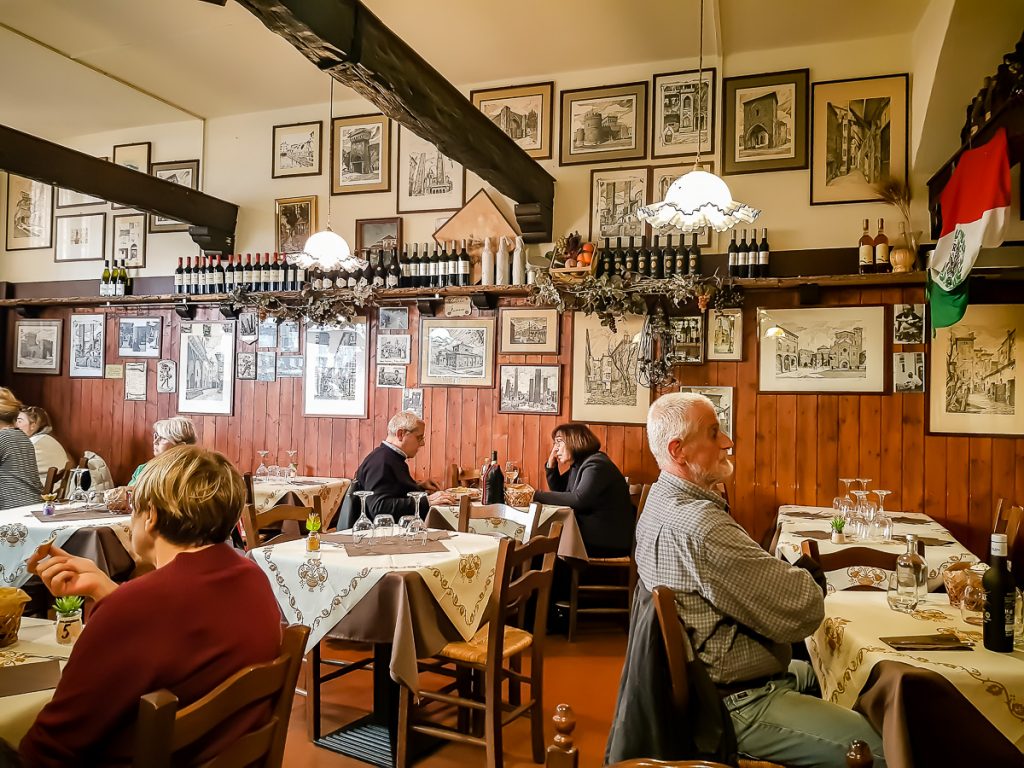
There are no more than 10 tables inside. The menu has only one type of food per page, and the prices are really friendly.
I had lasagna al forno – 11 euros. And, for dessert, mascarpone cream (sensation!) – 5 euros.
Mercato di Mezzo is a place with everything, as you find in other European cities. With tables where you can sit and eat, with stalls where you can get your food. It is very close to Piazza Maggiore.
What other tips did the guide give us (and I quickly took notes, even if I didn’t get to test them):
- Il Piato Rotto (it’s right next to Trattoria Caffè del Rosso)
- Pizzeria Nicolas – for pizza, of course…
- Gelateria Majori – for ice cream
- And the best Aperol is at Gianni Vini
- And I, in 2015, went to a recommended restaurant, which still exists today: Trattoria Anna Maria.
And that’s all for the Bologna I saw. I already have the “to do” list for my next visit here. And, if Bologna is known as “the smart one”, “the red one” and “the fat one”, I hope that only the first characteristic will define me, the next time I get here…


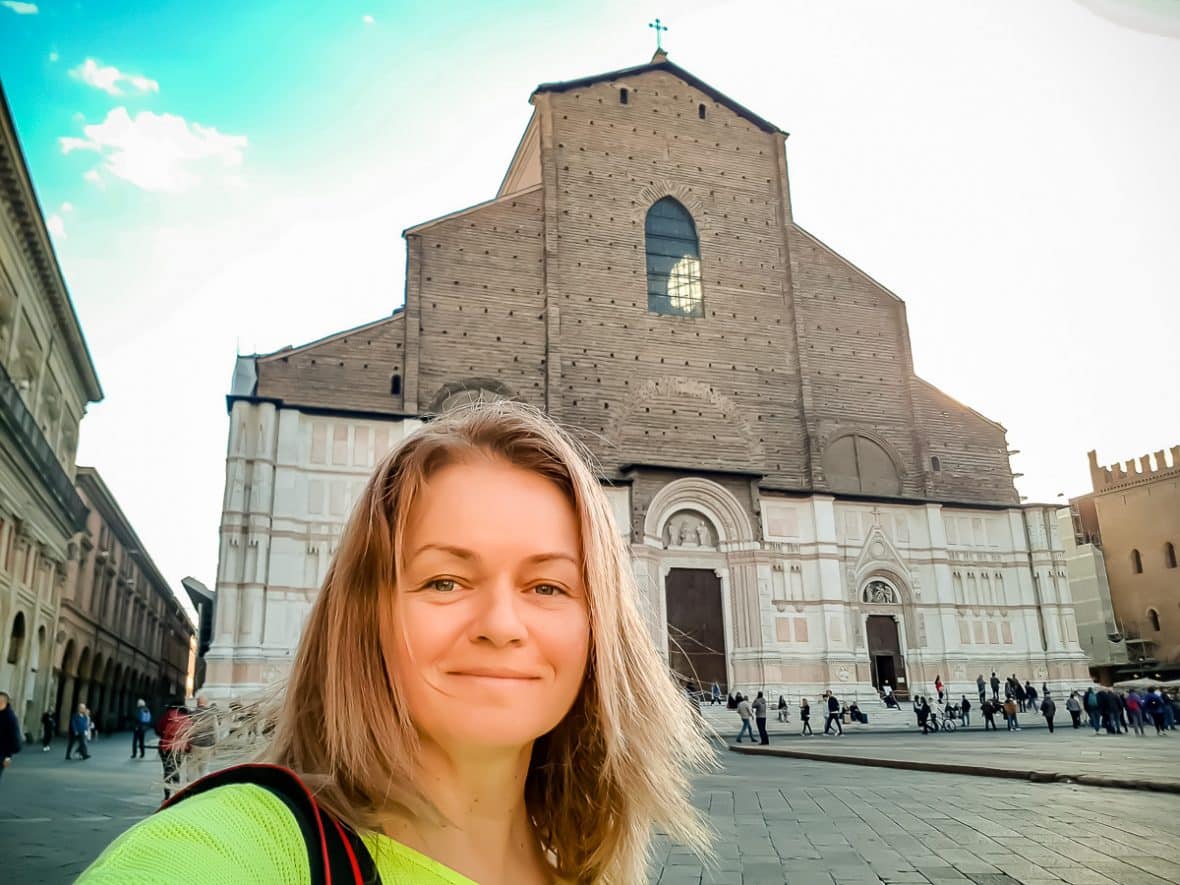
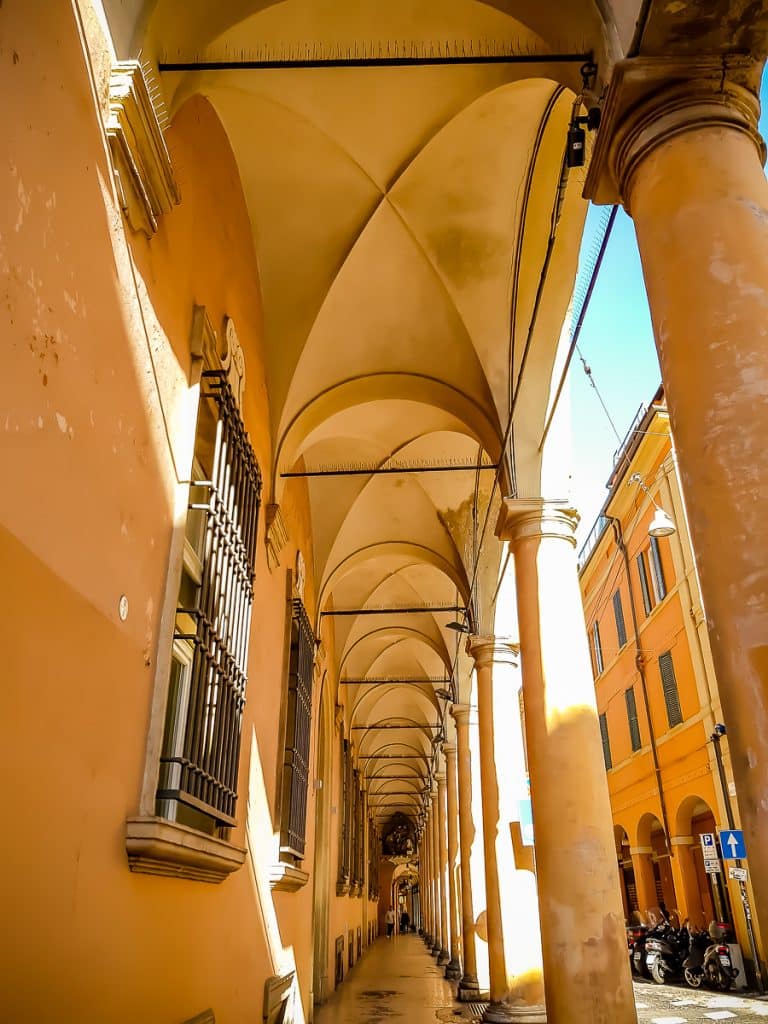
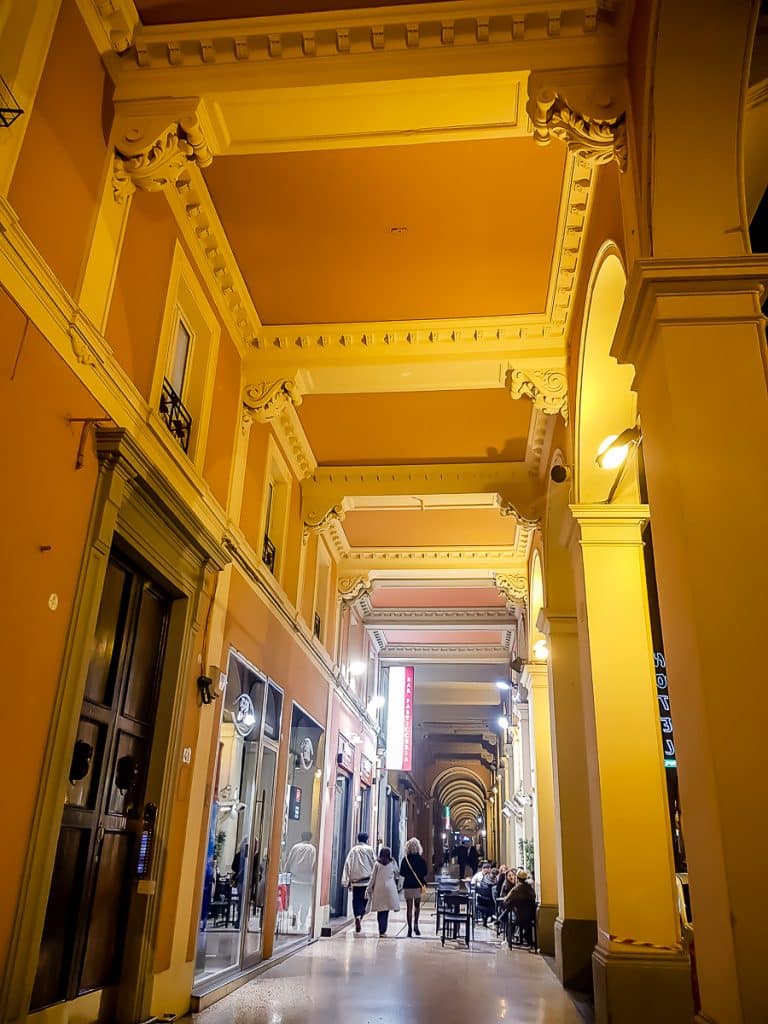
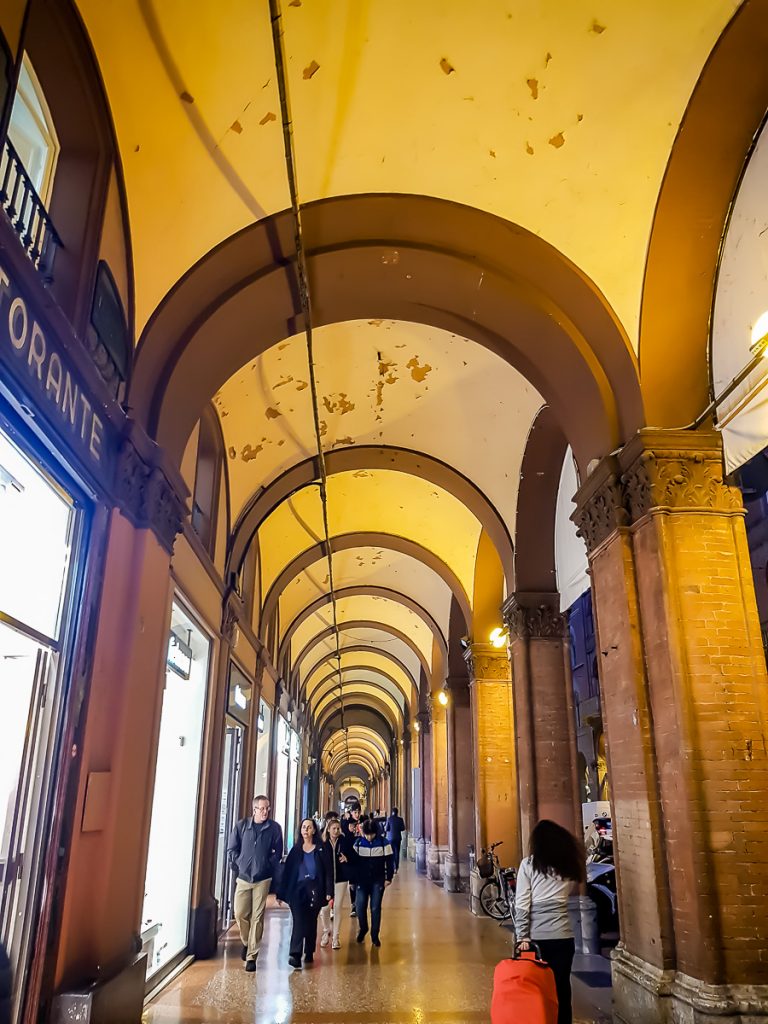
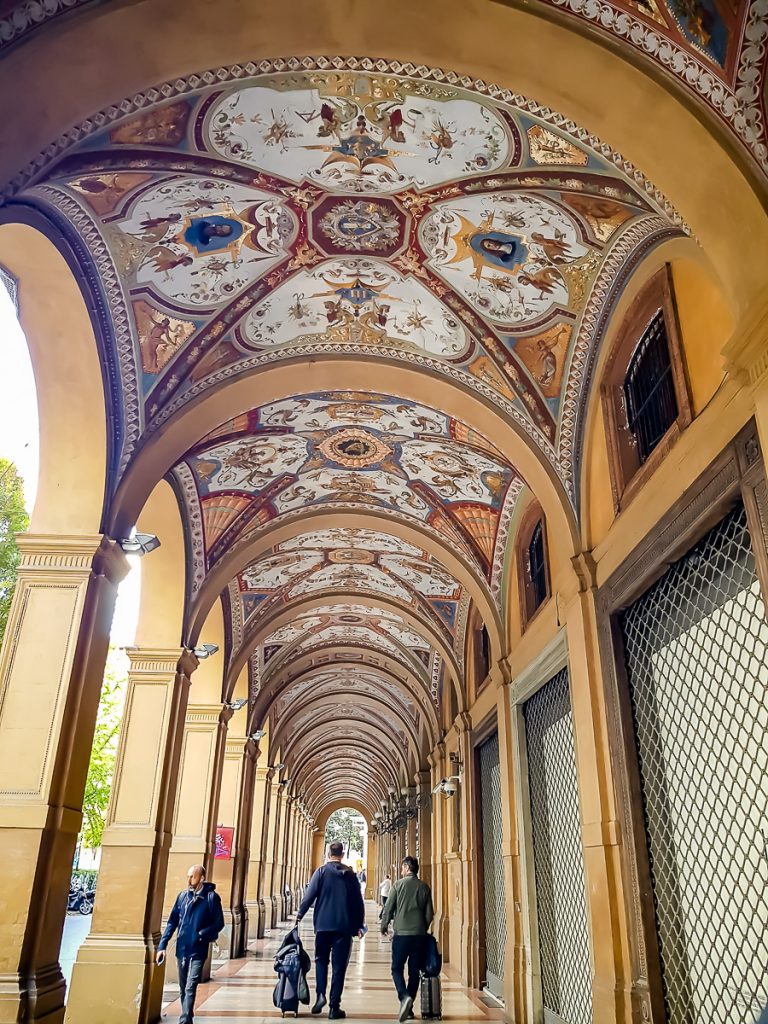
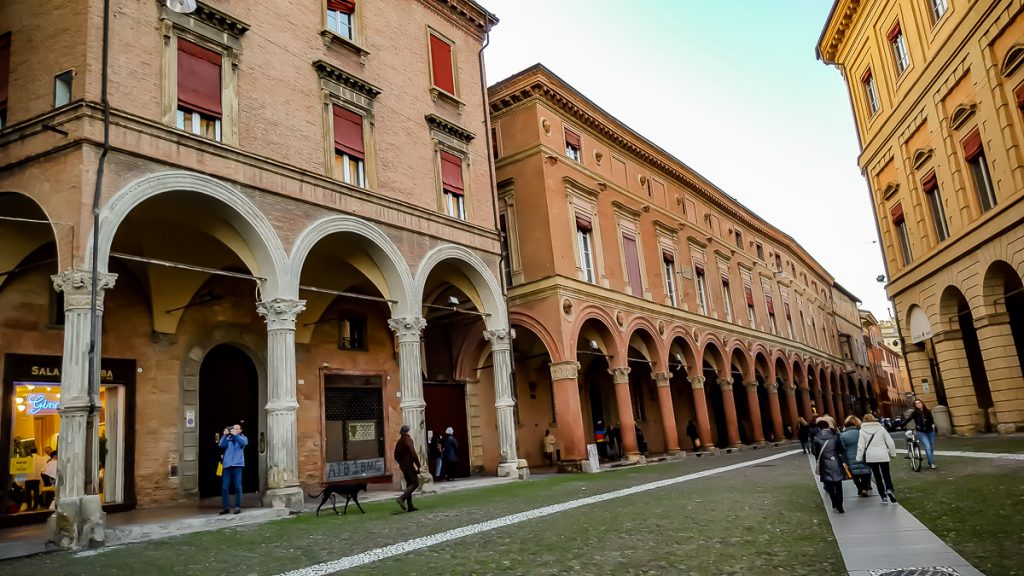
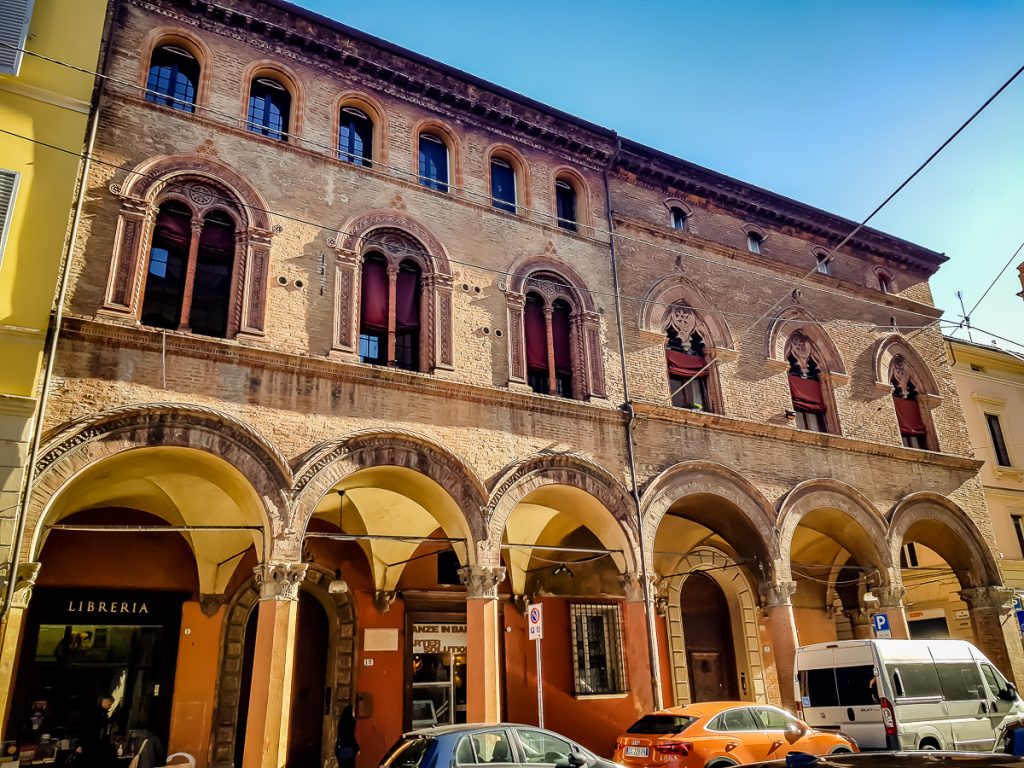
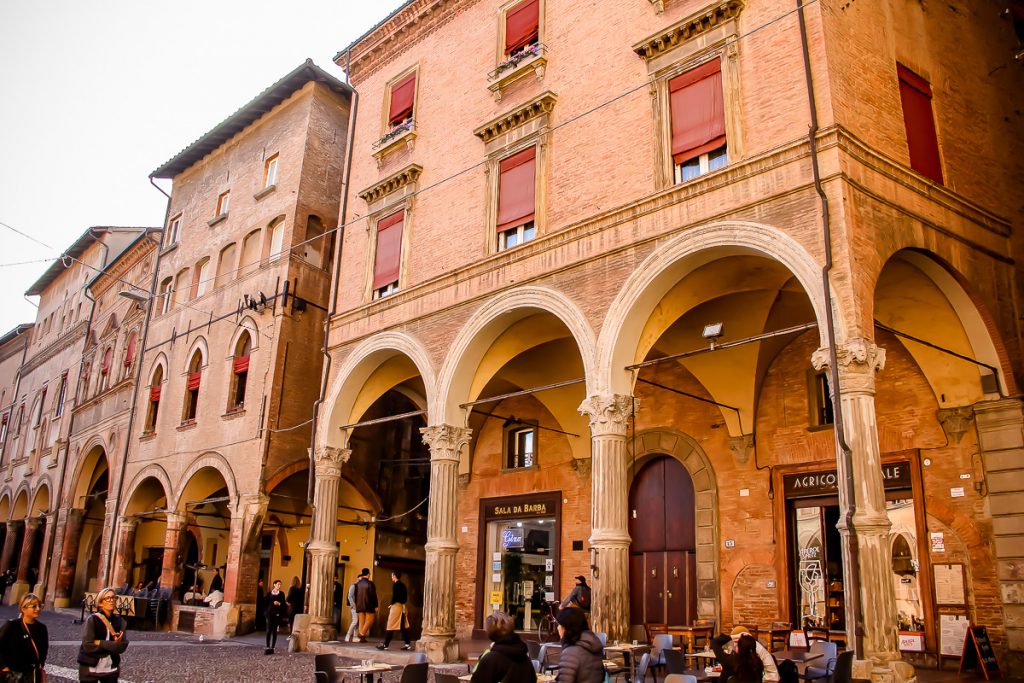
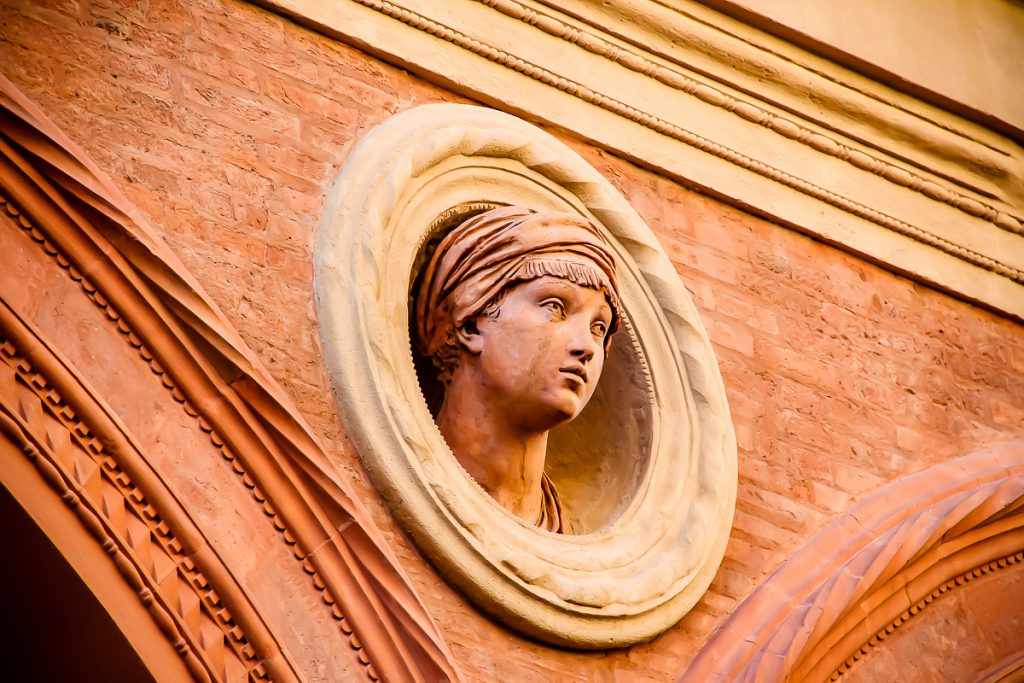
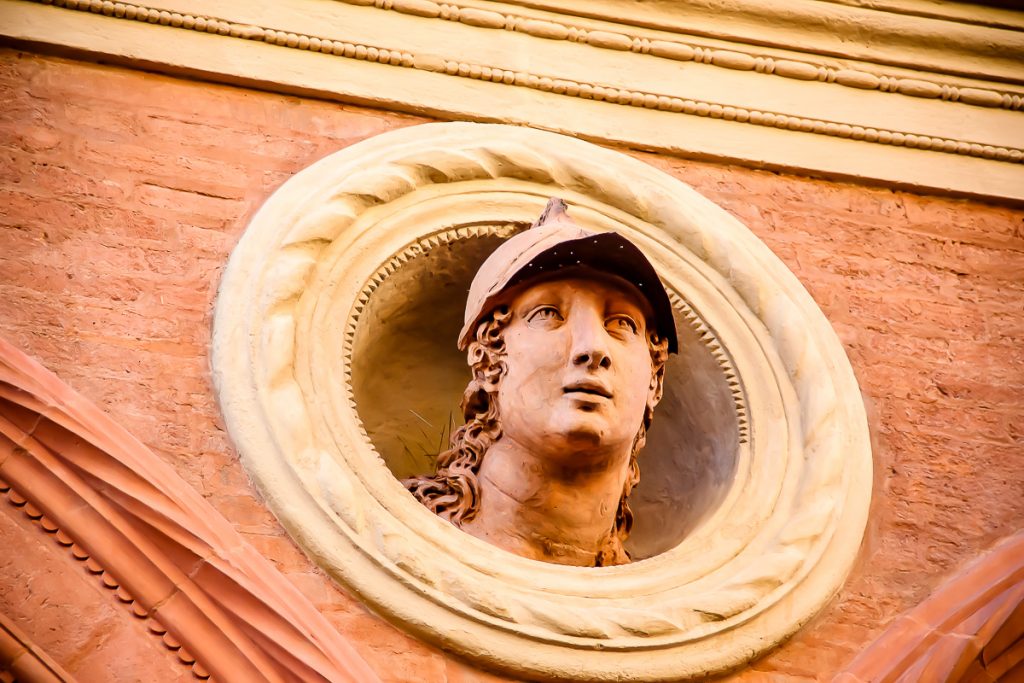
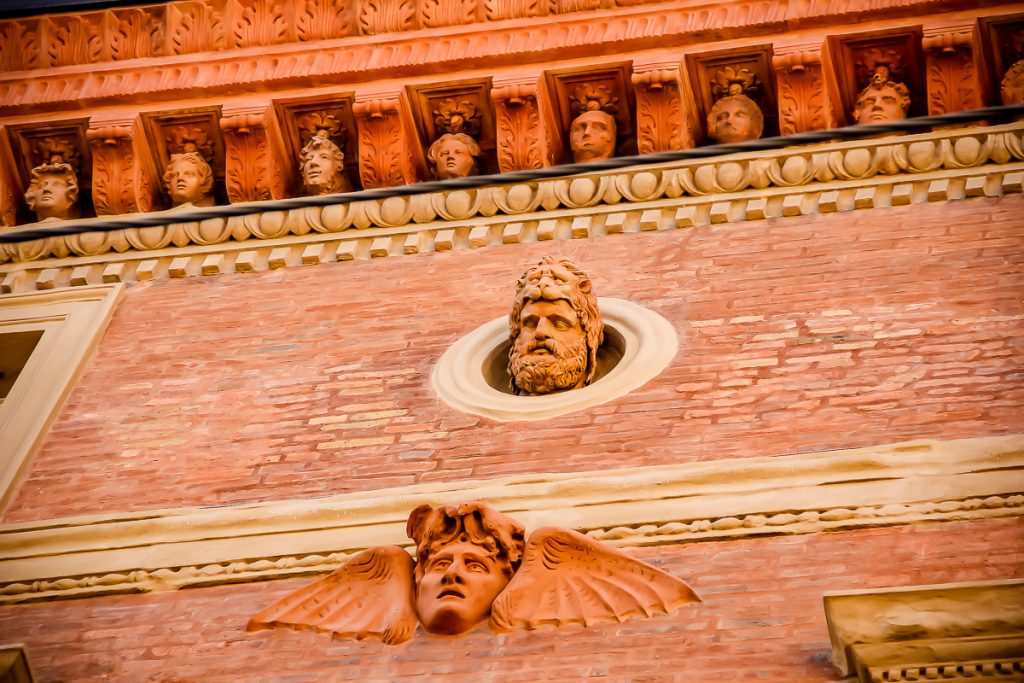
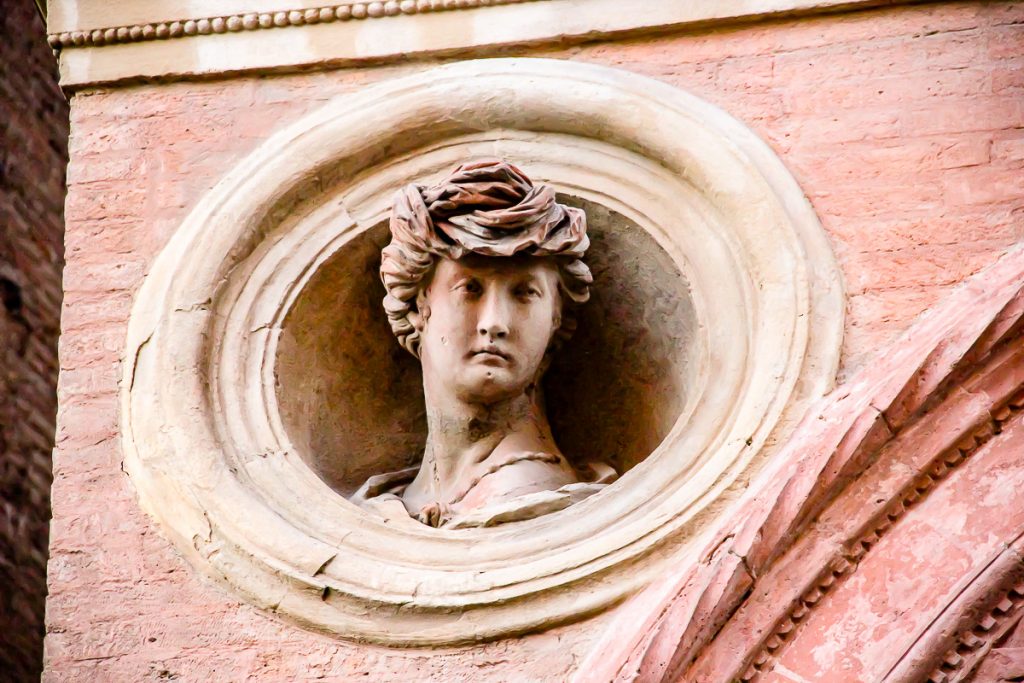
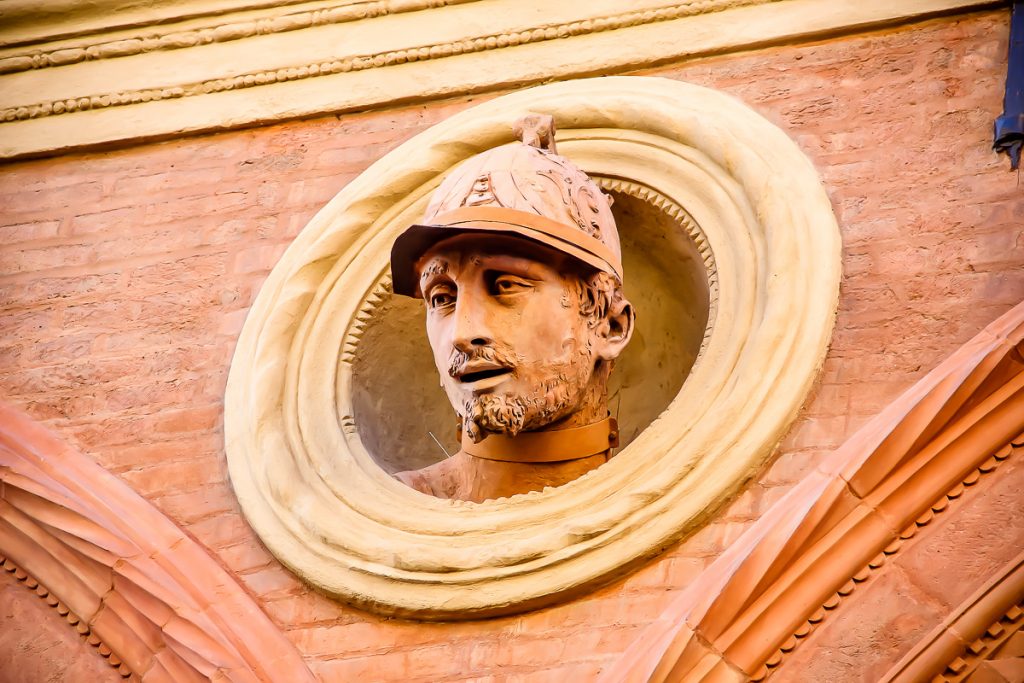
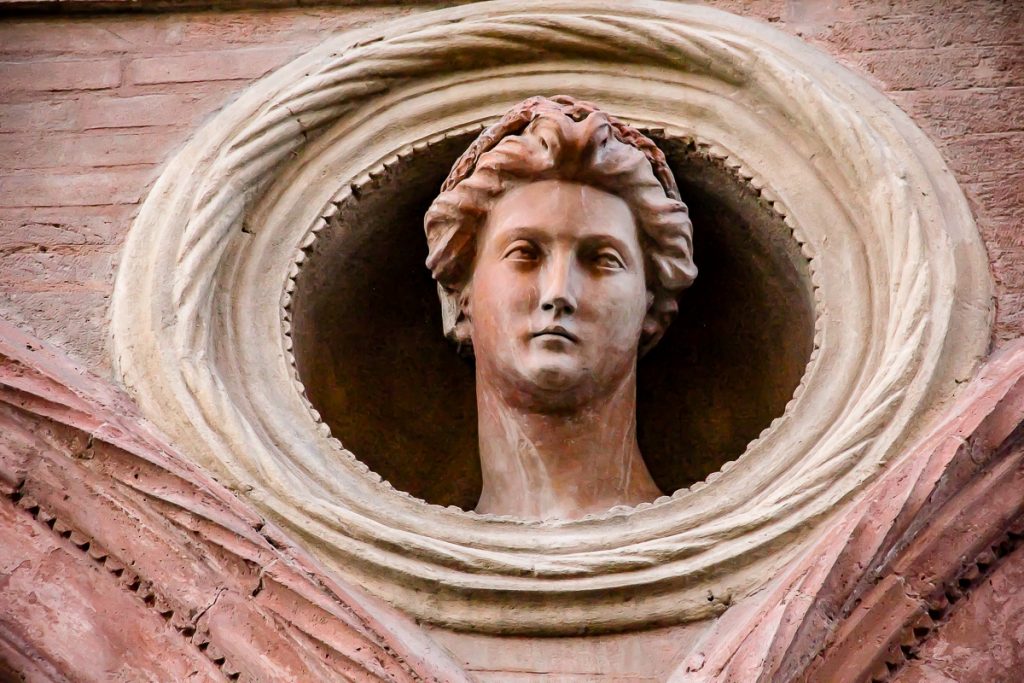
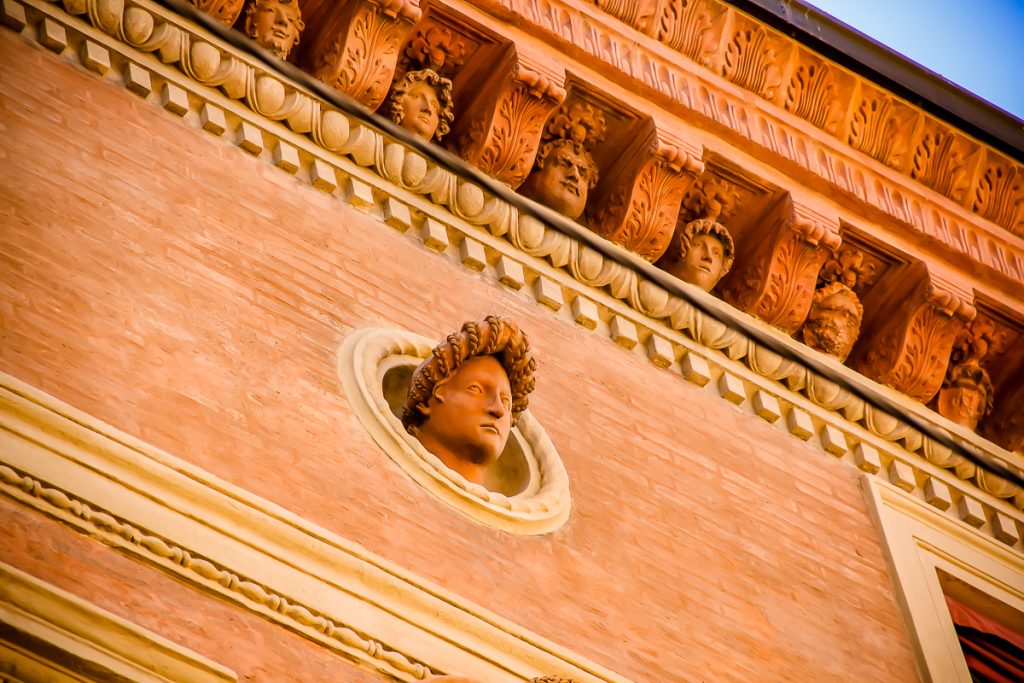
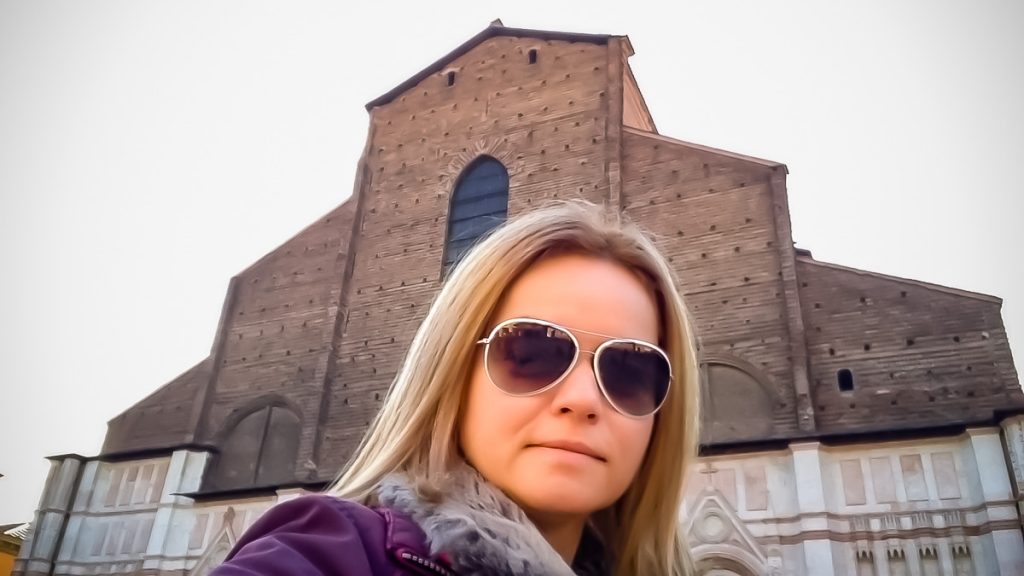
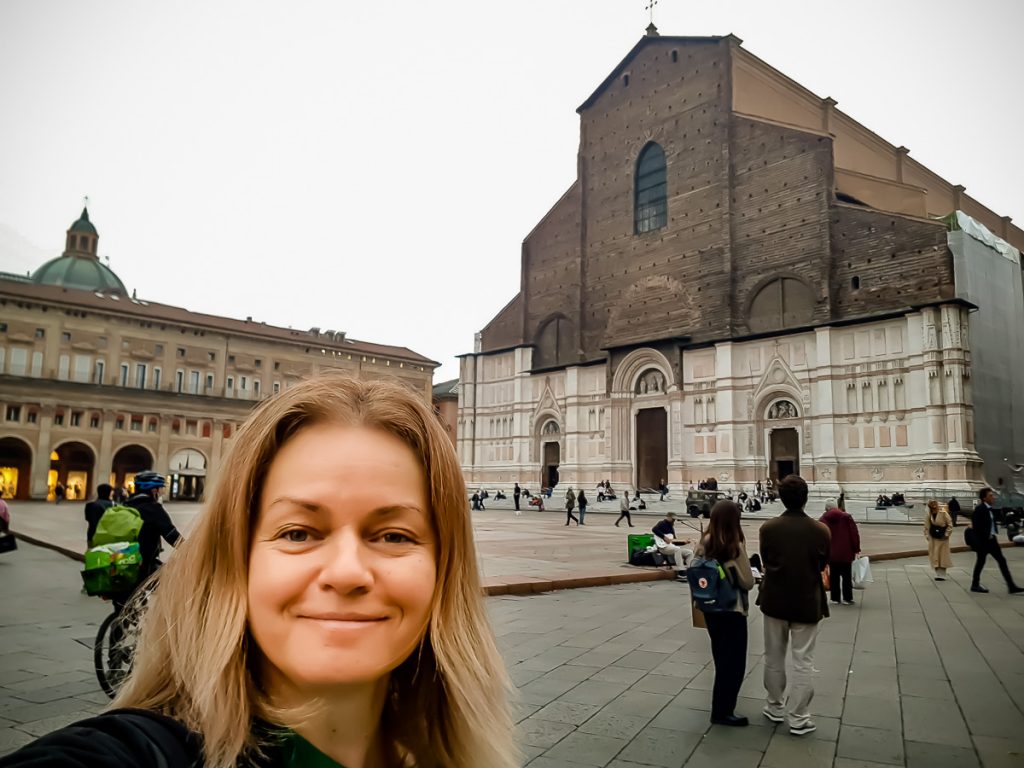
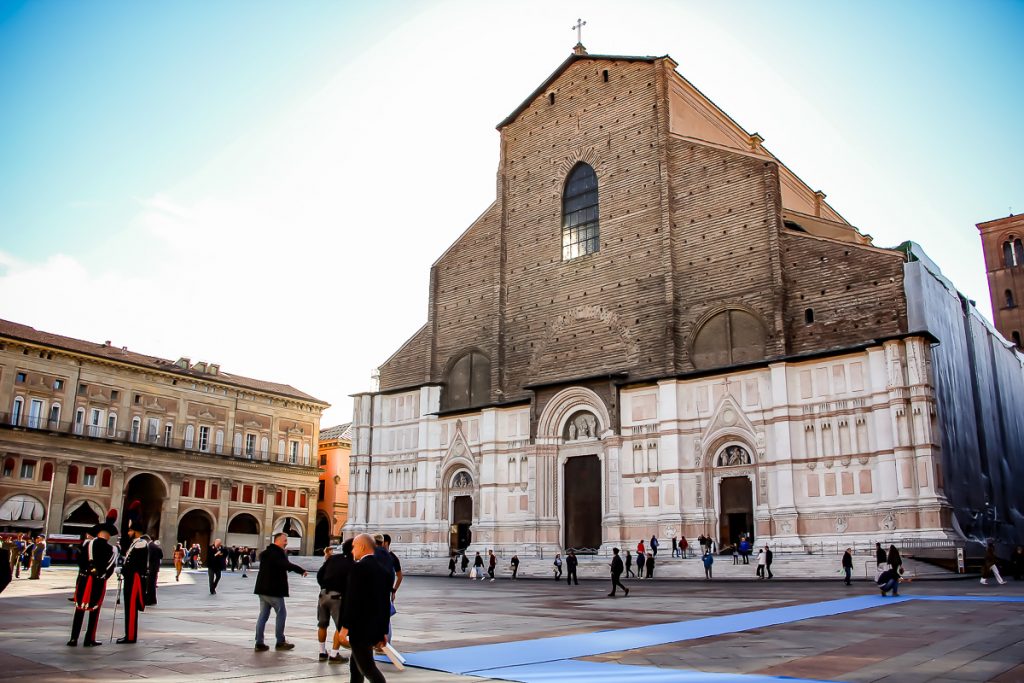
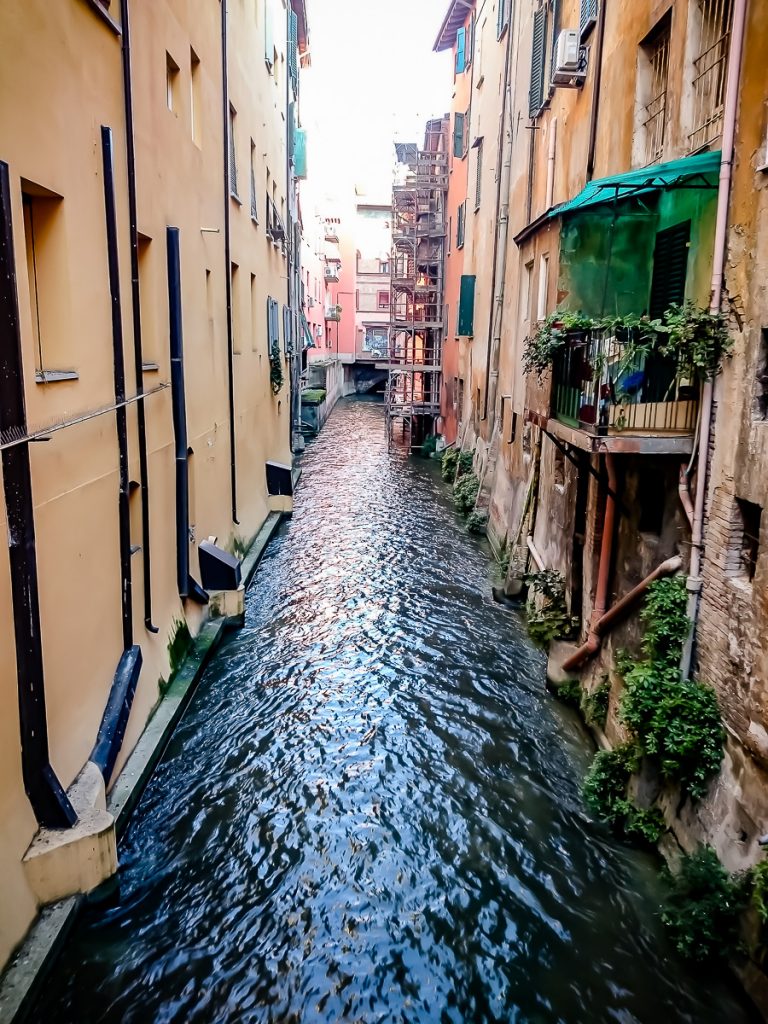
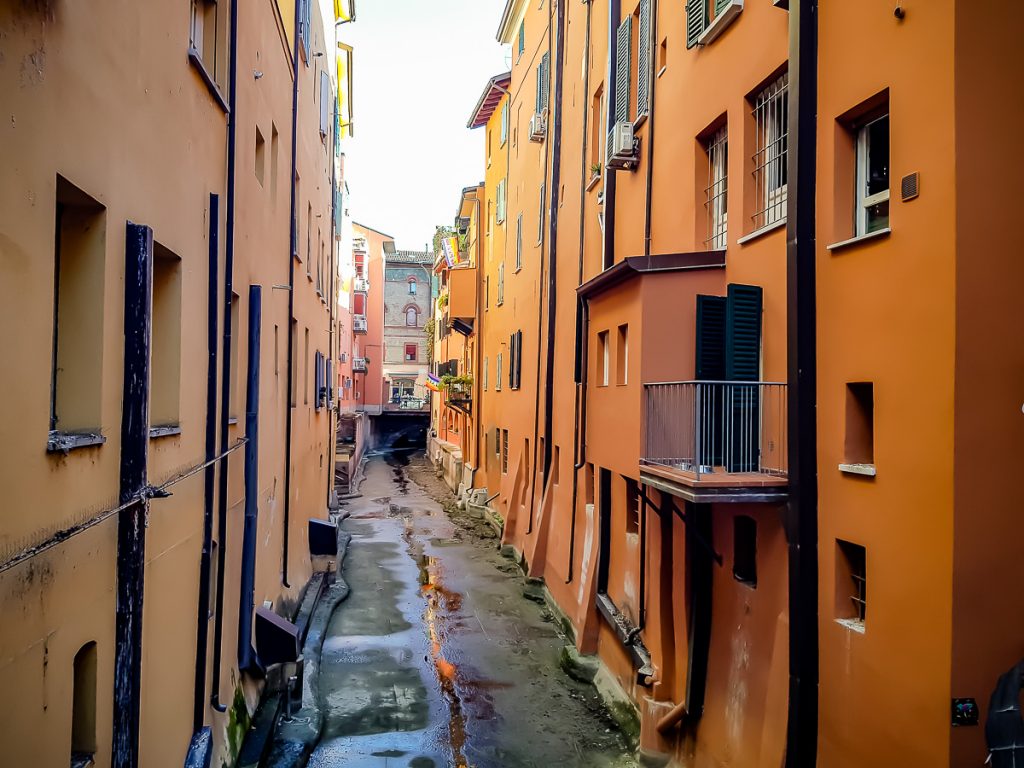
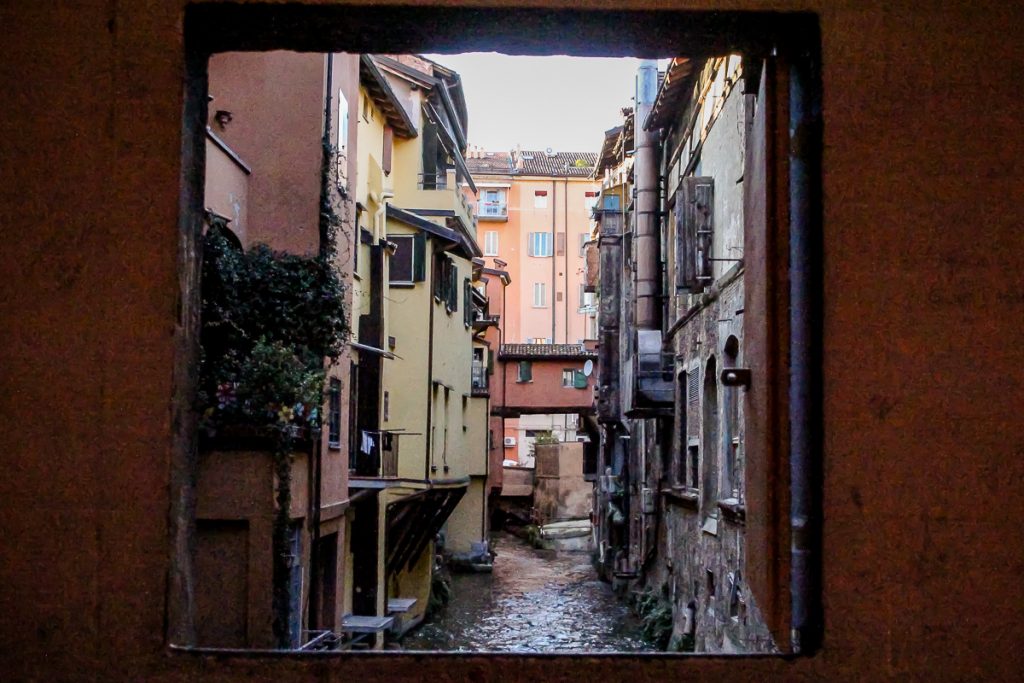
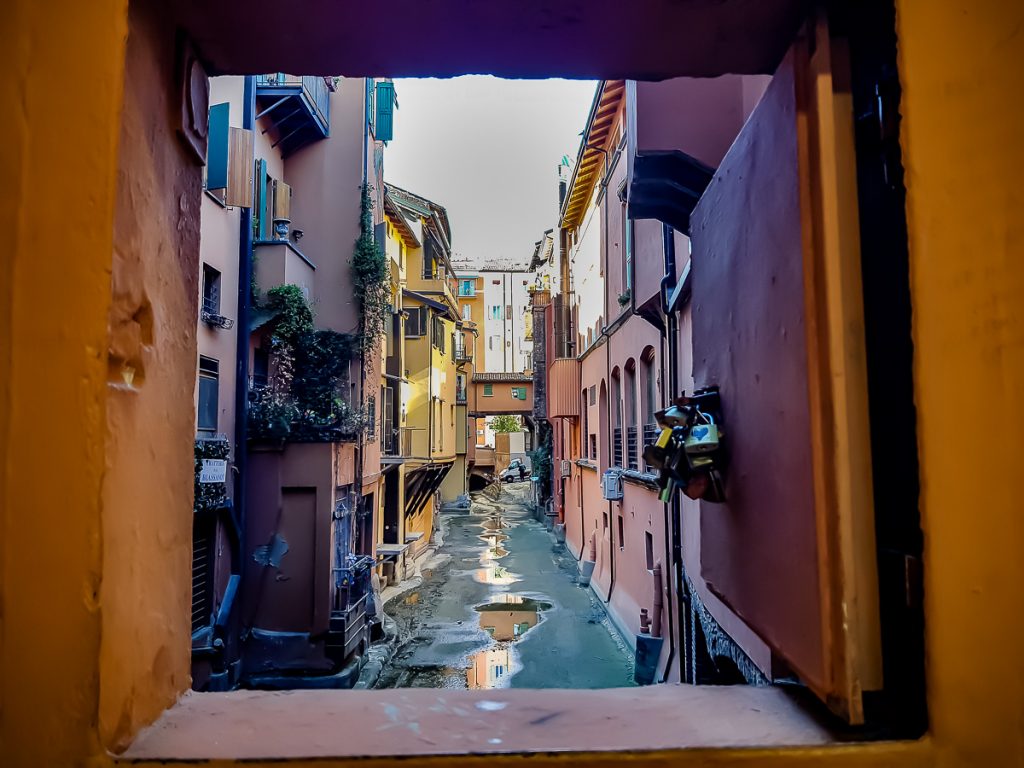
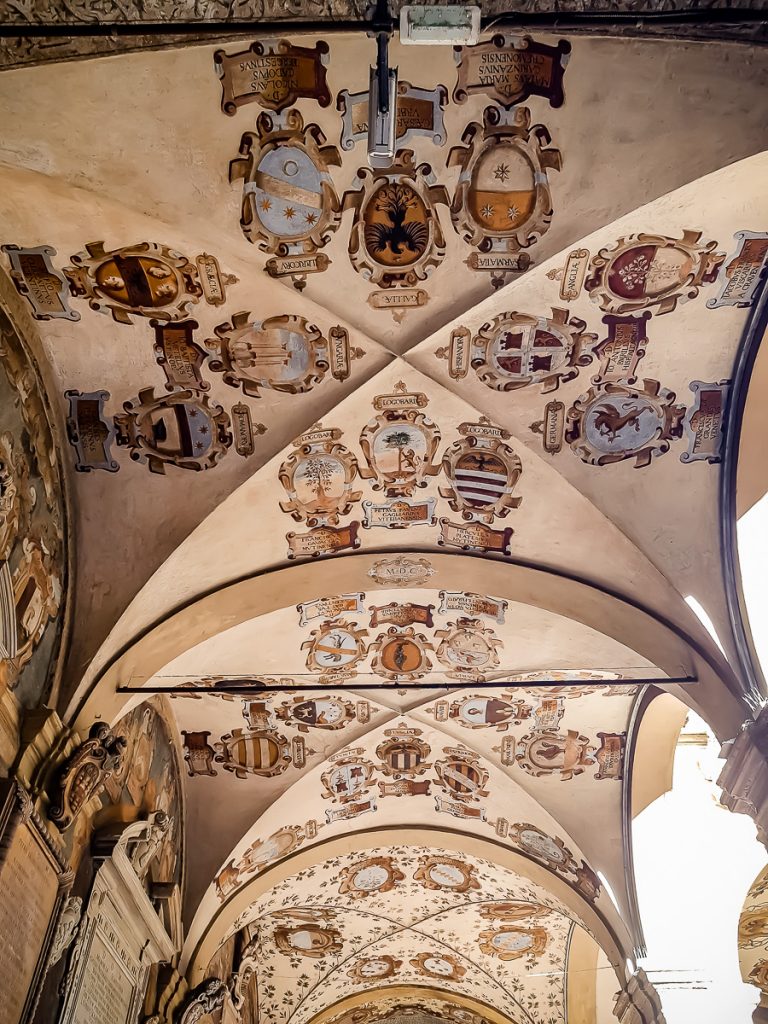
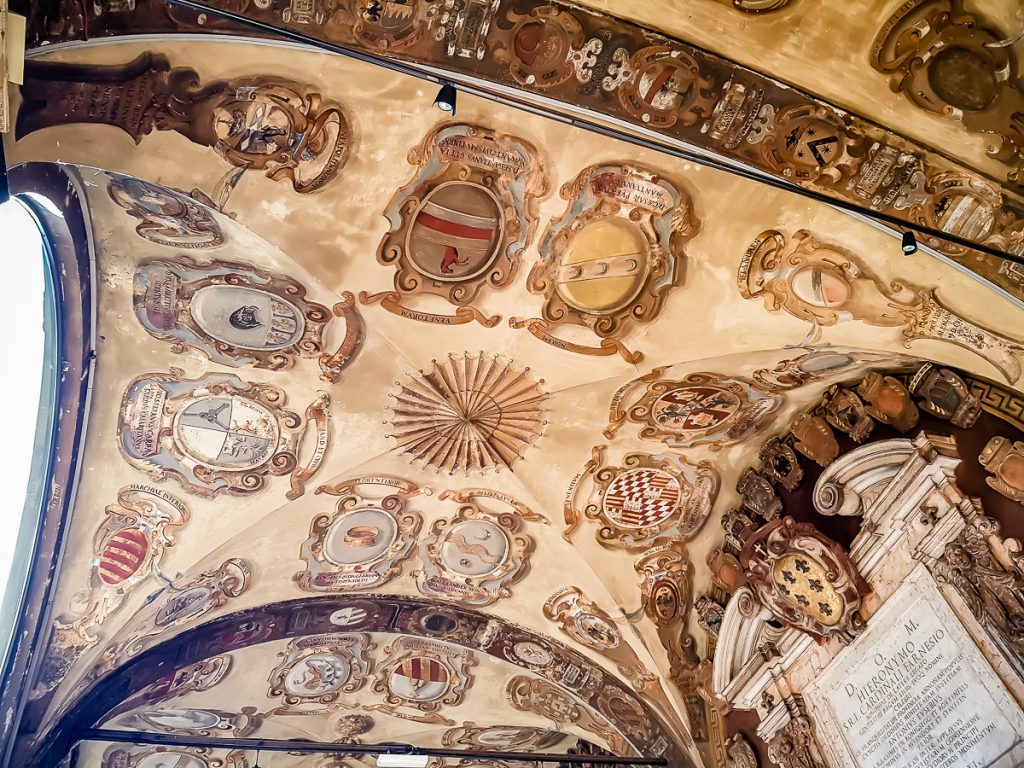
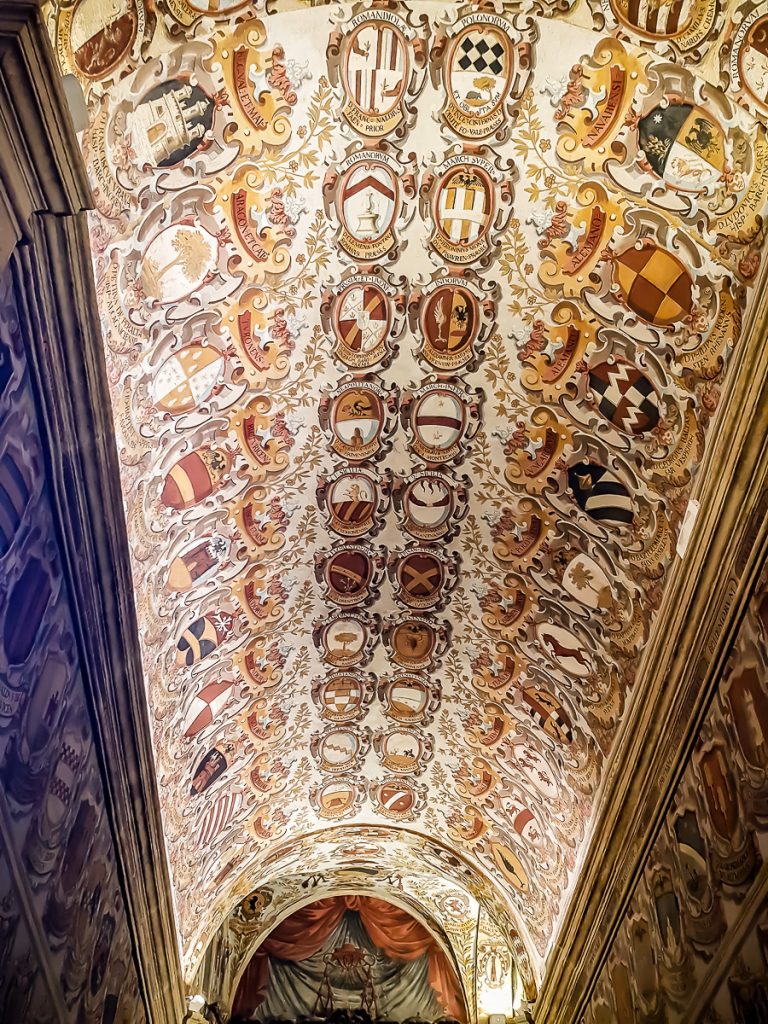
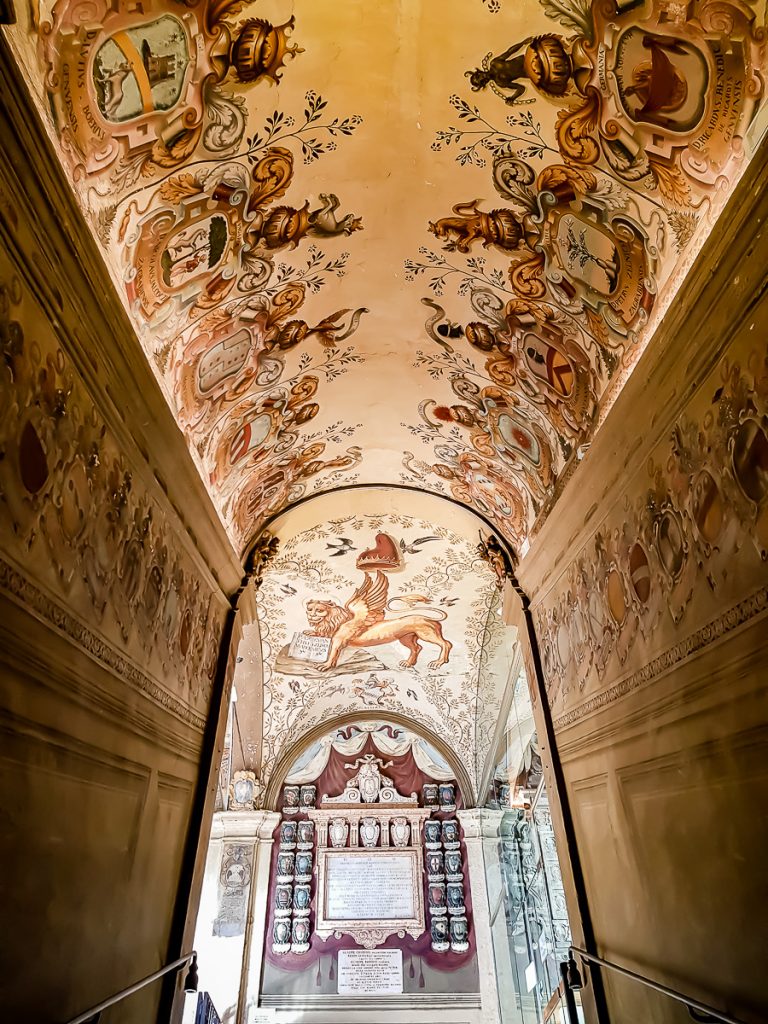
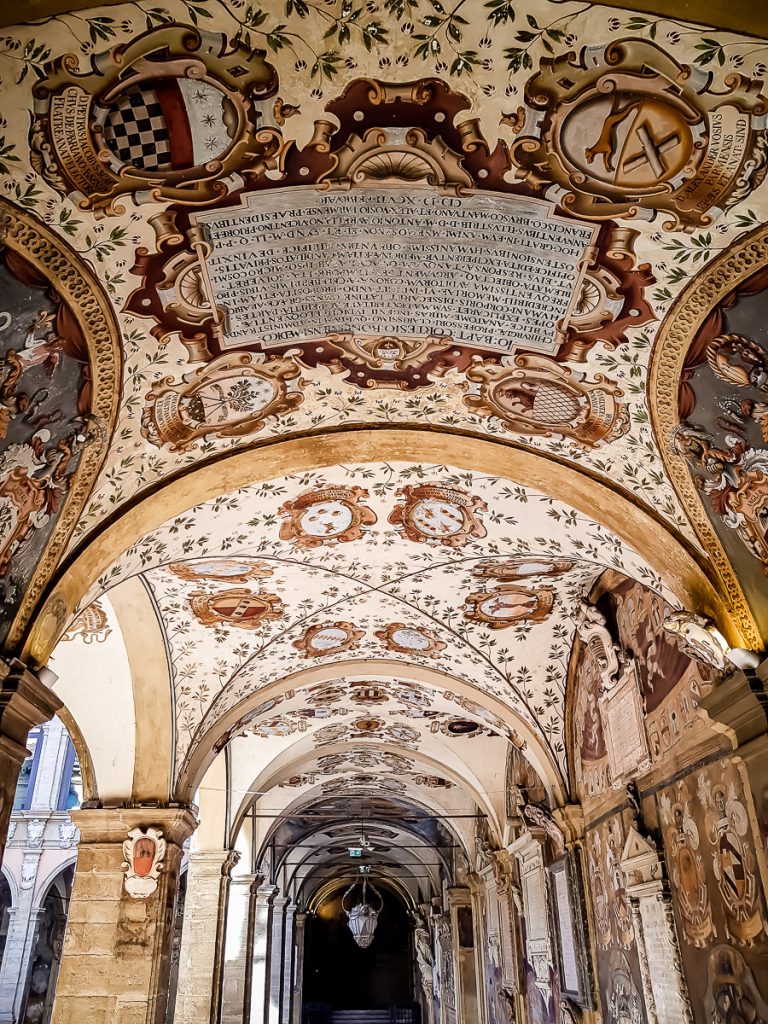
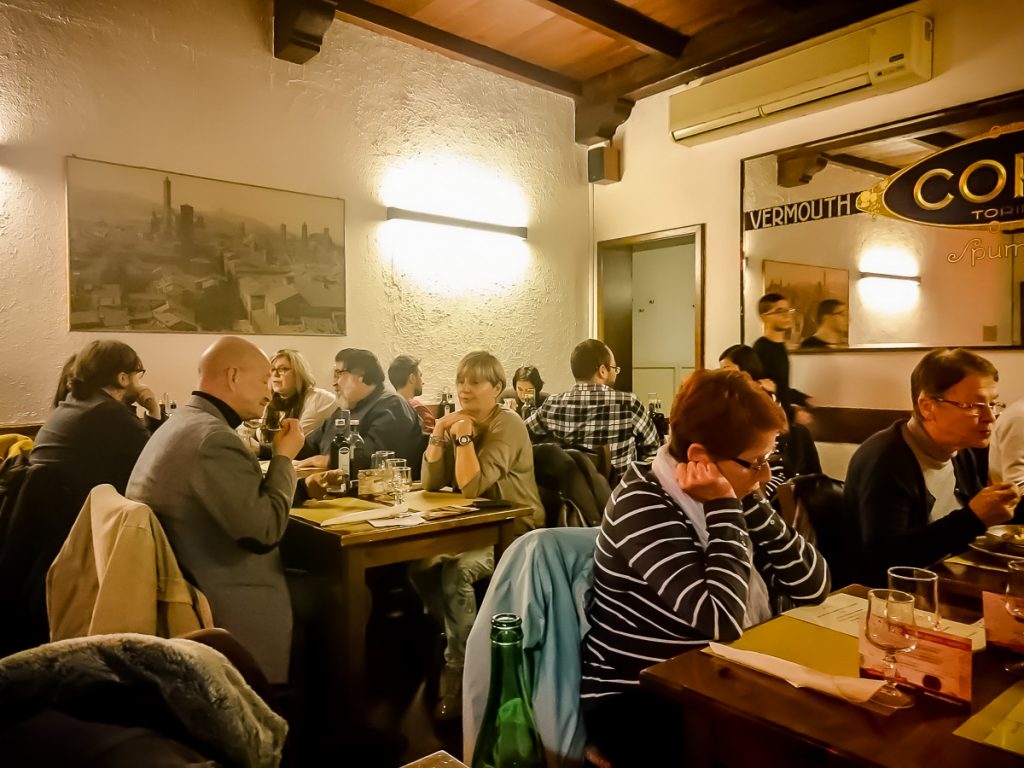
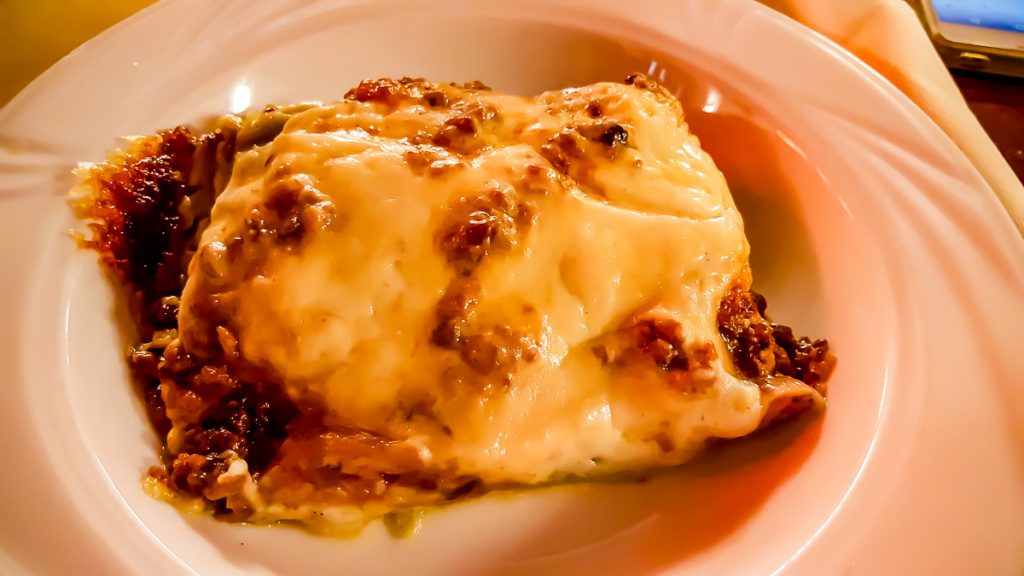
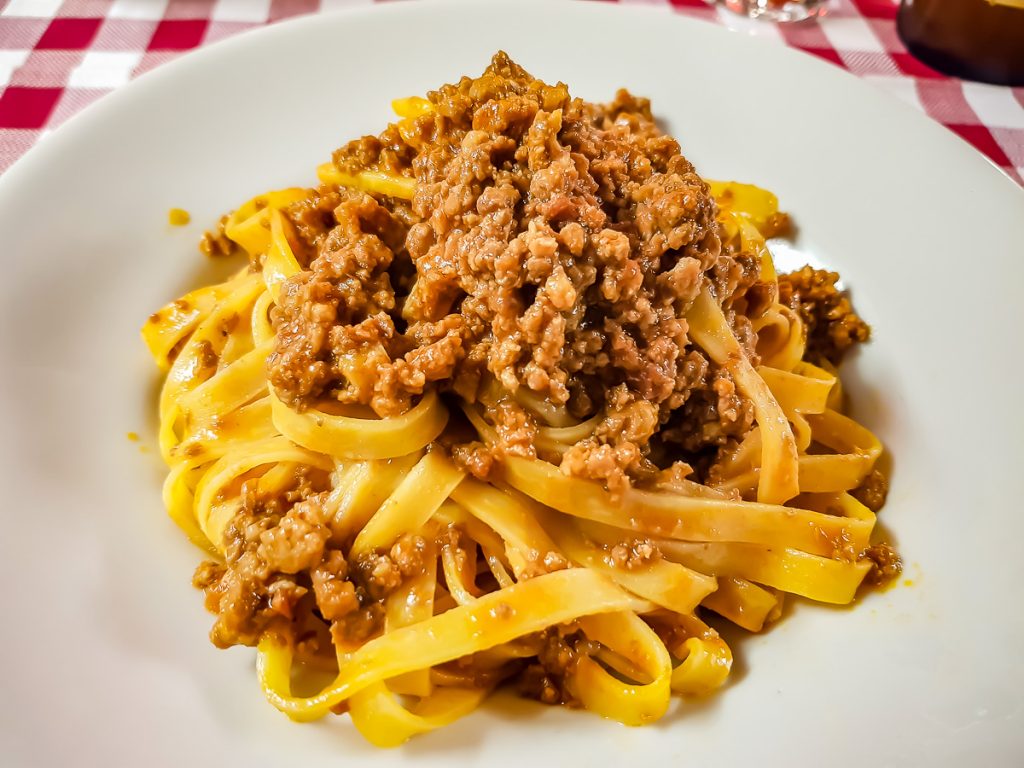
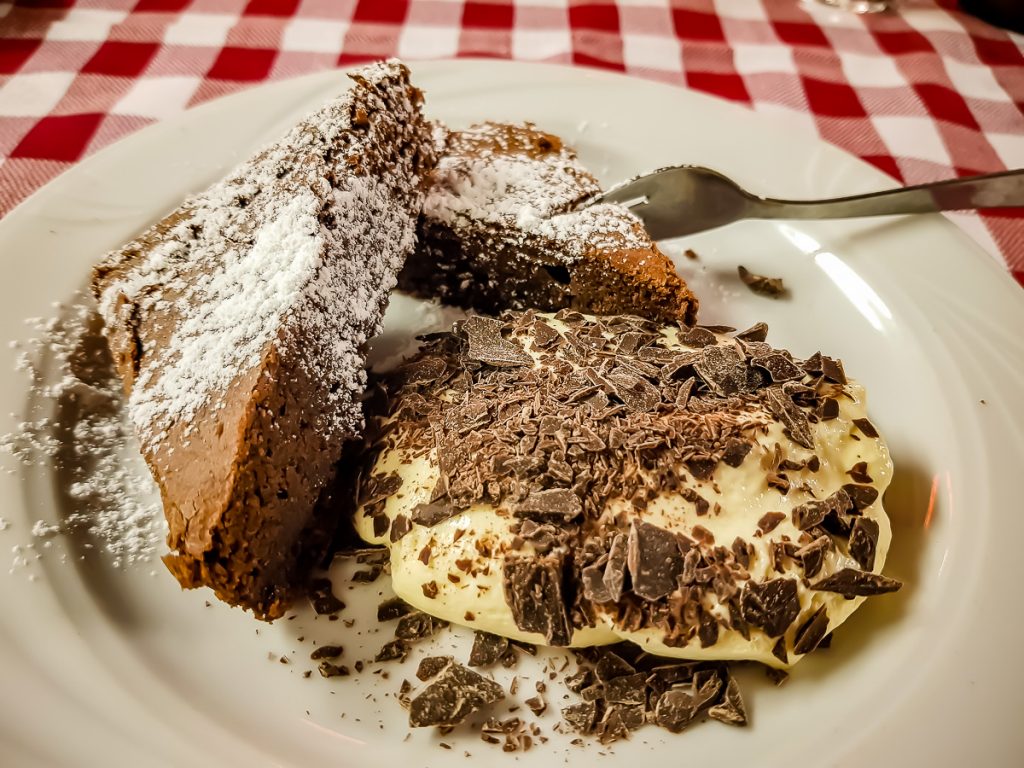
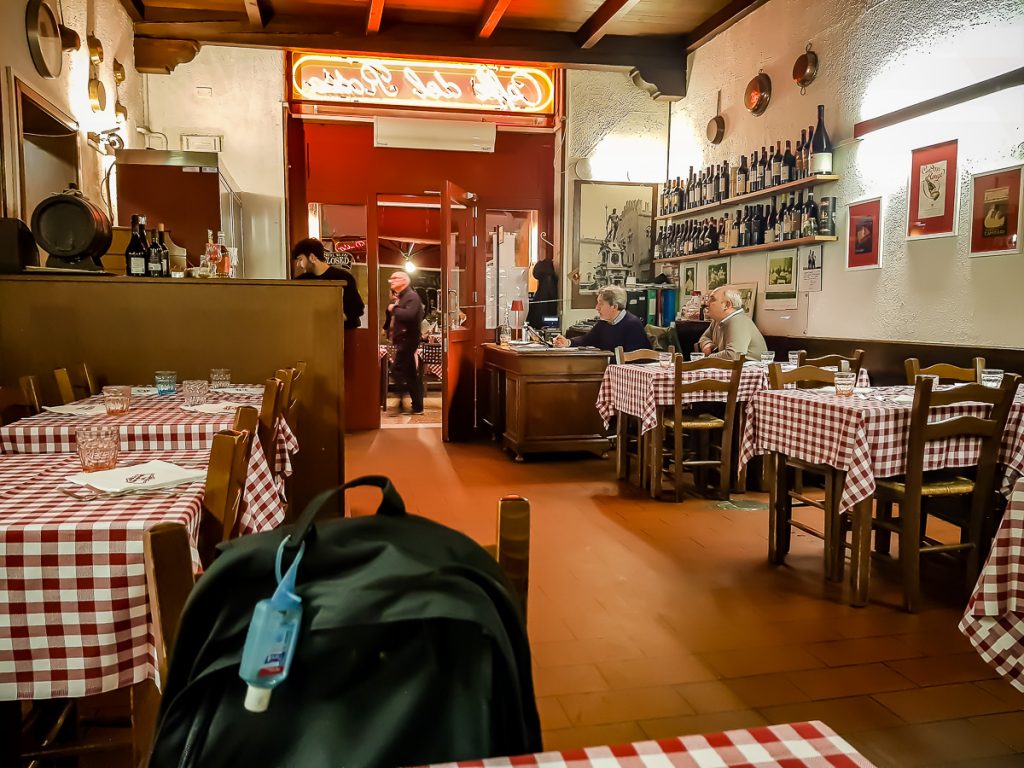
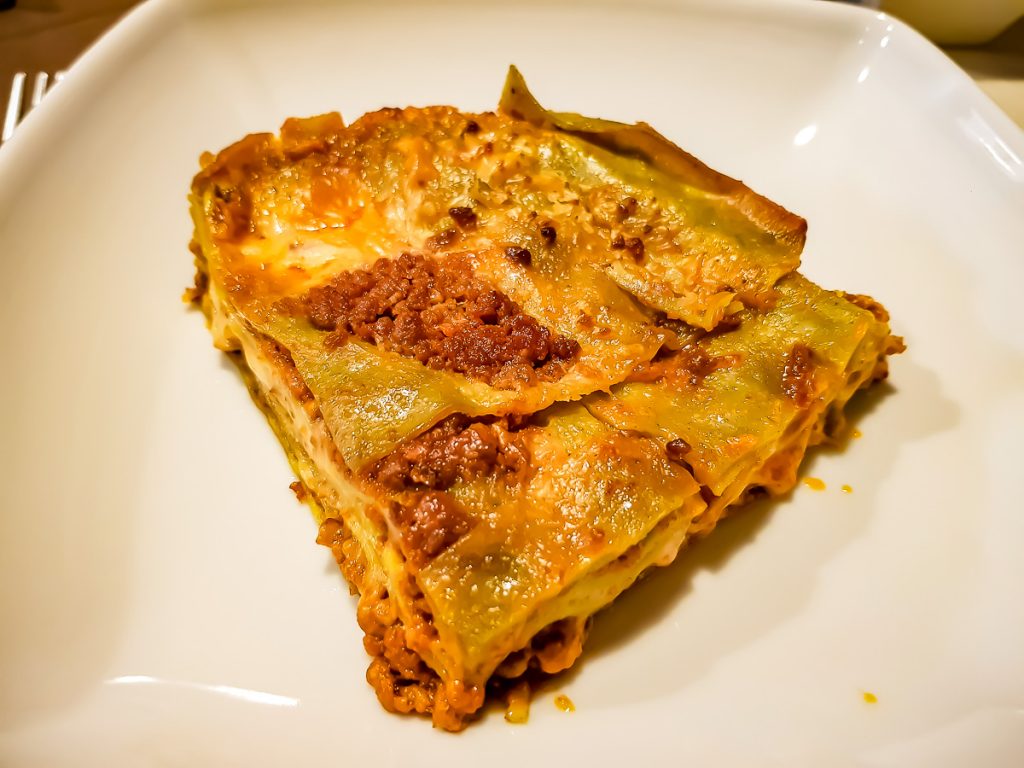
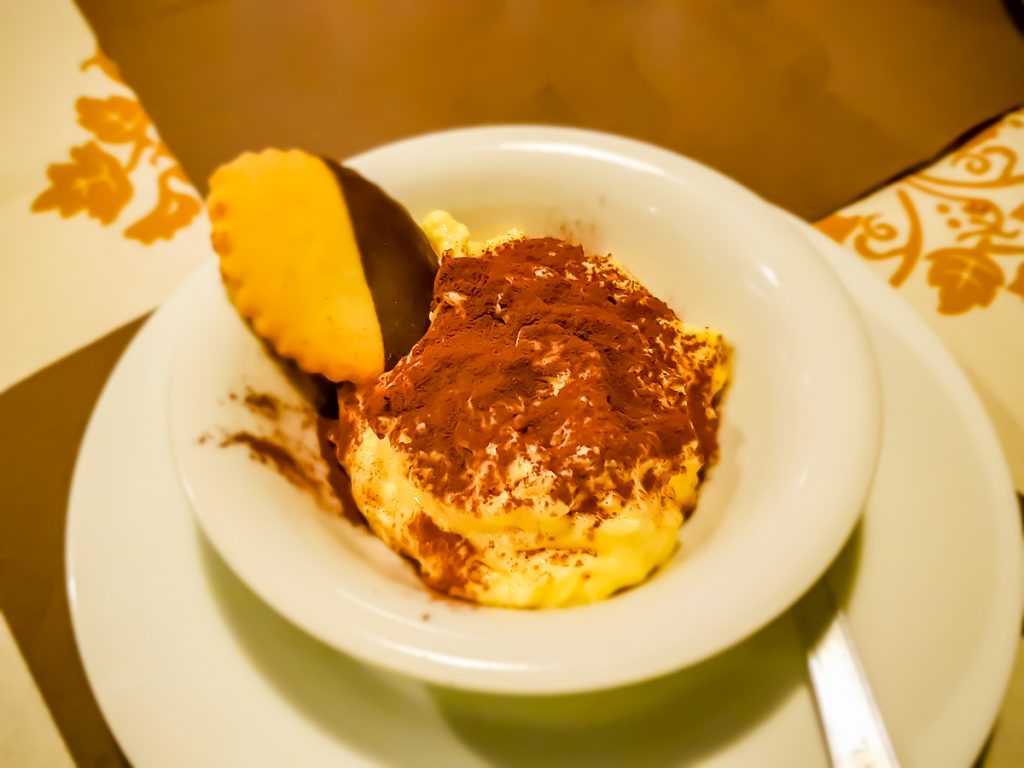

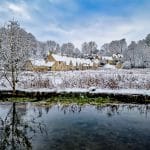
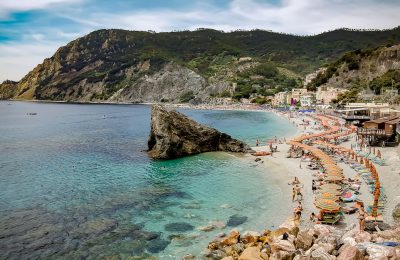
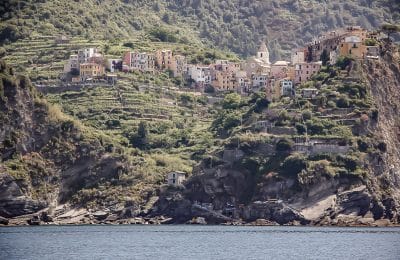

2 Comments
Elena Chirita
19 December 2022 at 23:58Foarte frumoasa descrierea! Am fost și eu acolo in vizita! Acum chiar îmi este dor sa revin sa îl revăd cu alți ochi!
Dana Mladin
21 December 2022 at 19:31Multumesc mult! Adevarul e ca mi-a placut mult ce am aflat si… culmea, si eu imi doresc sa revin.